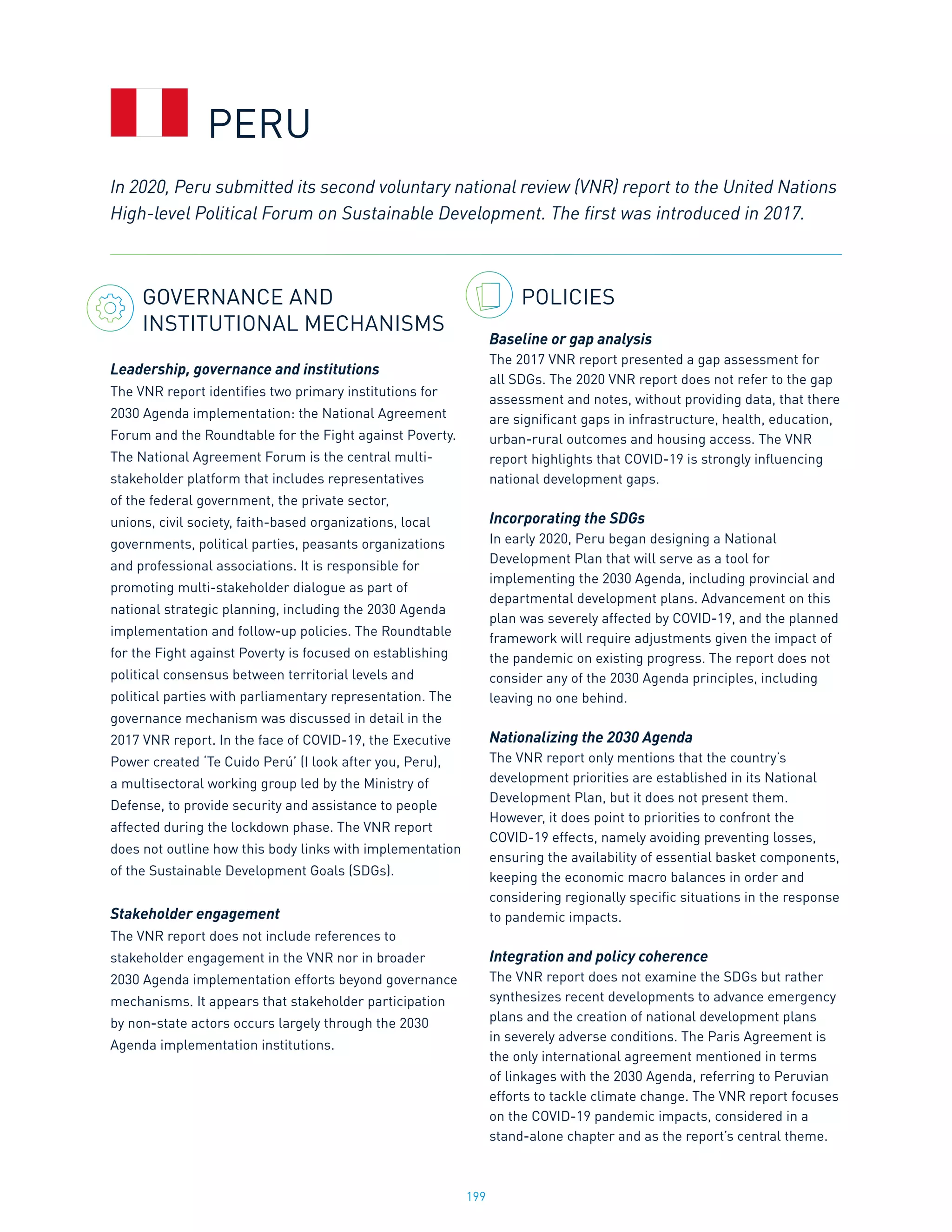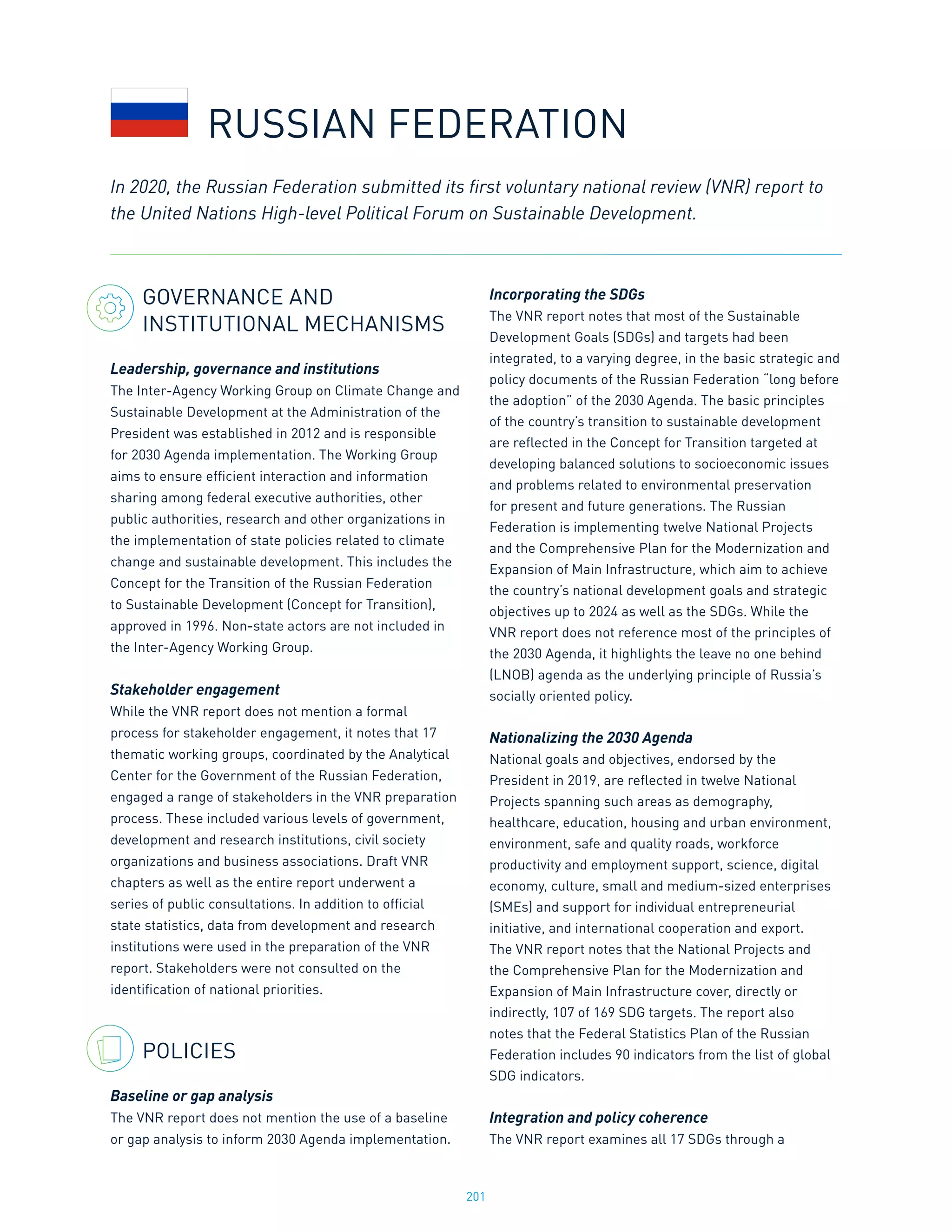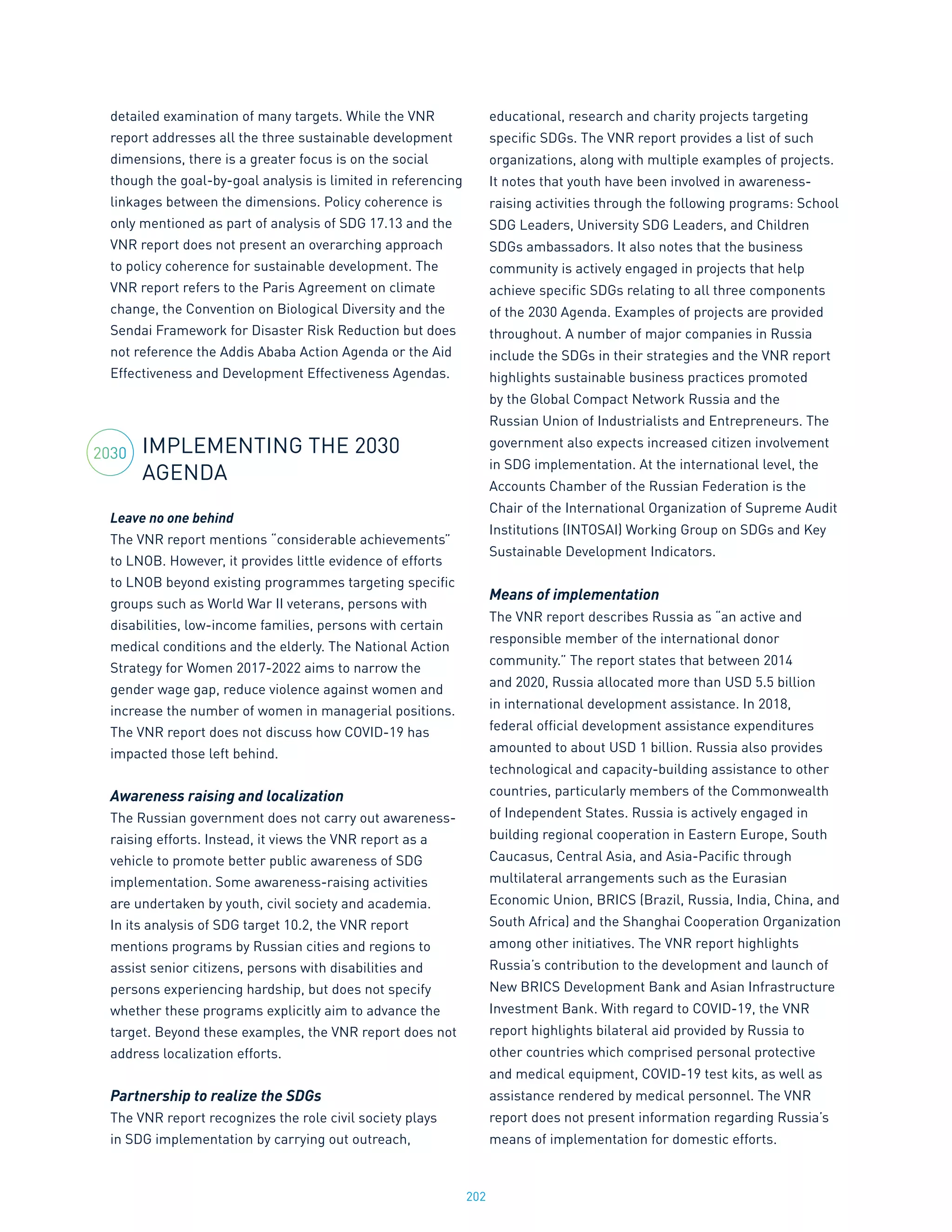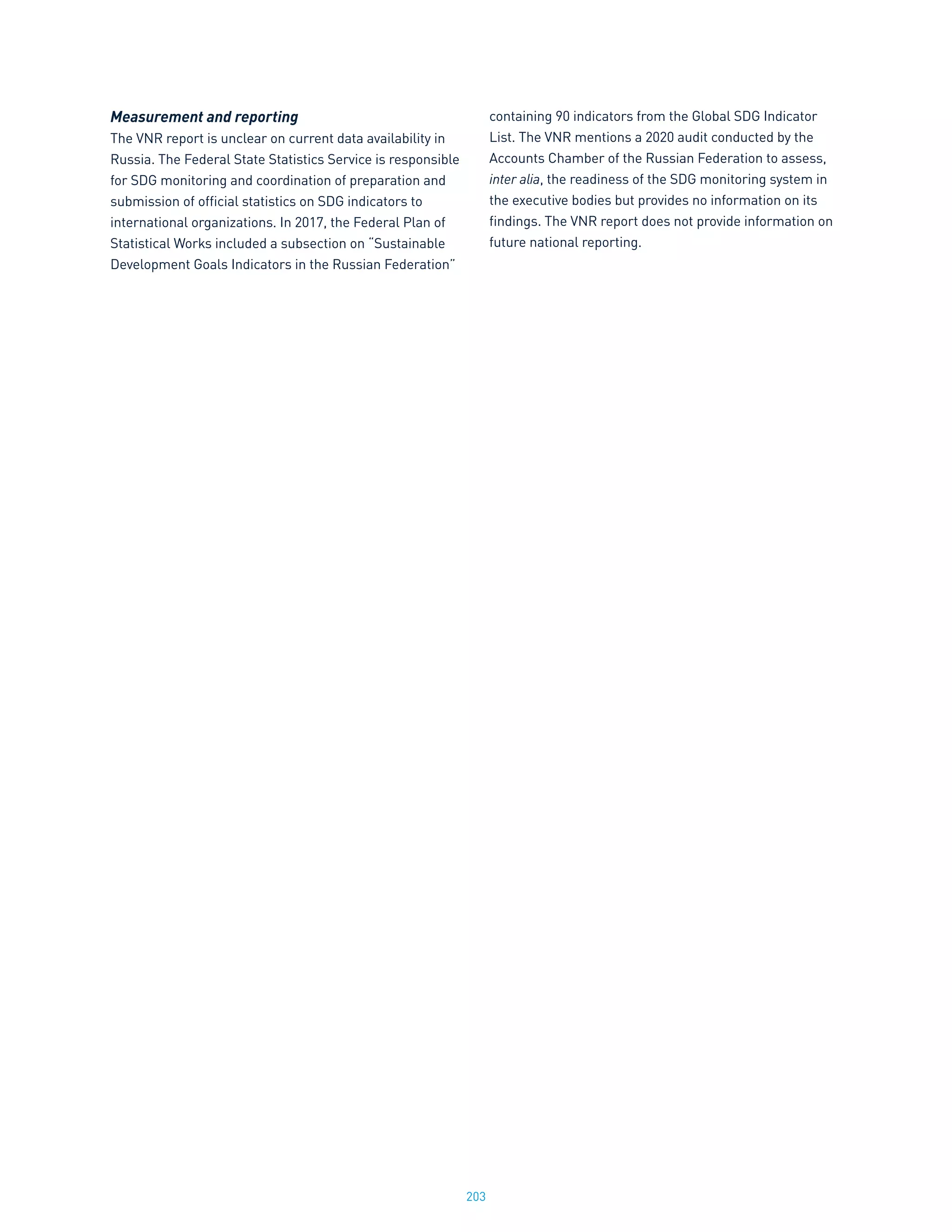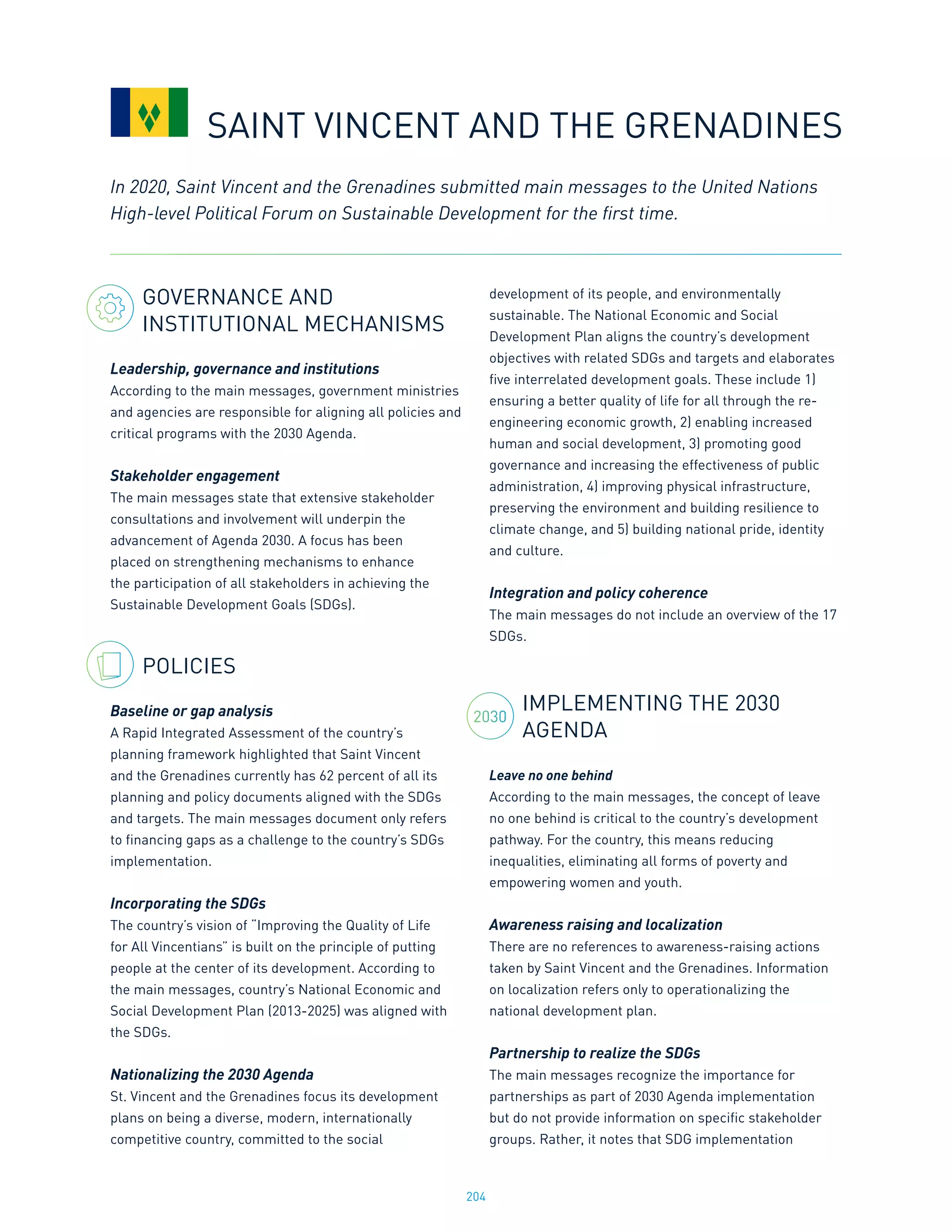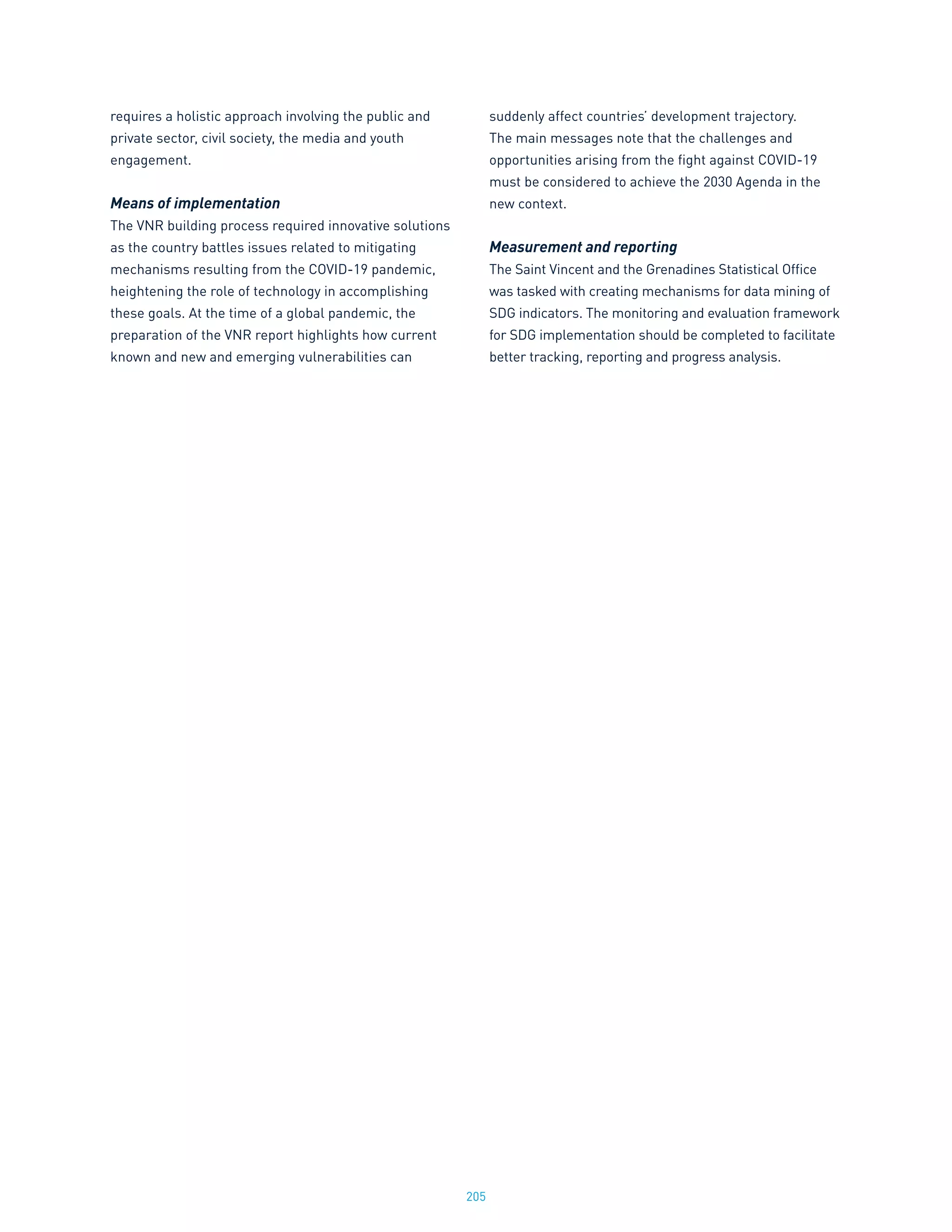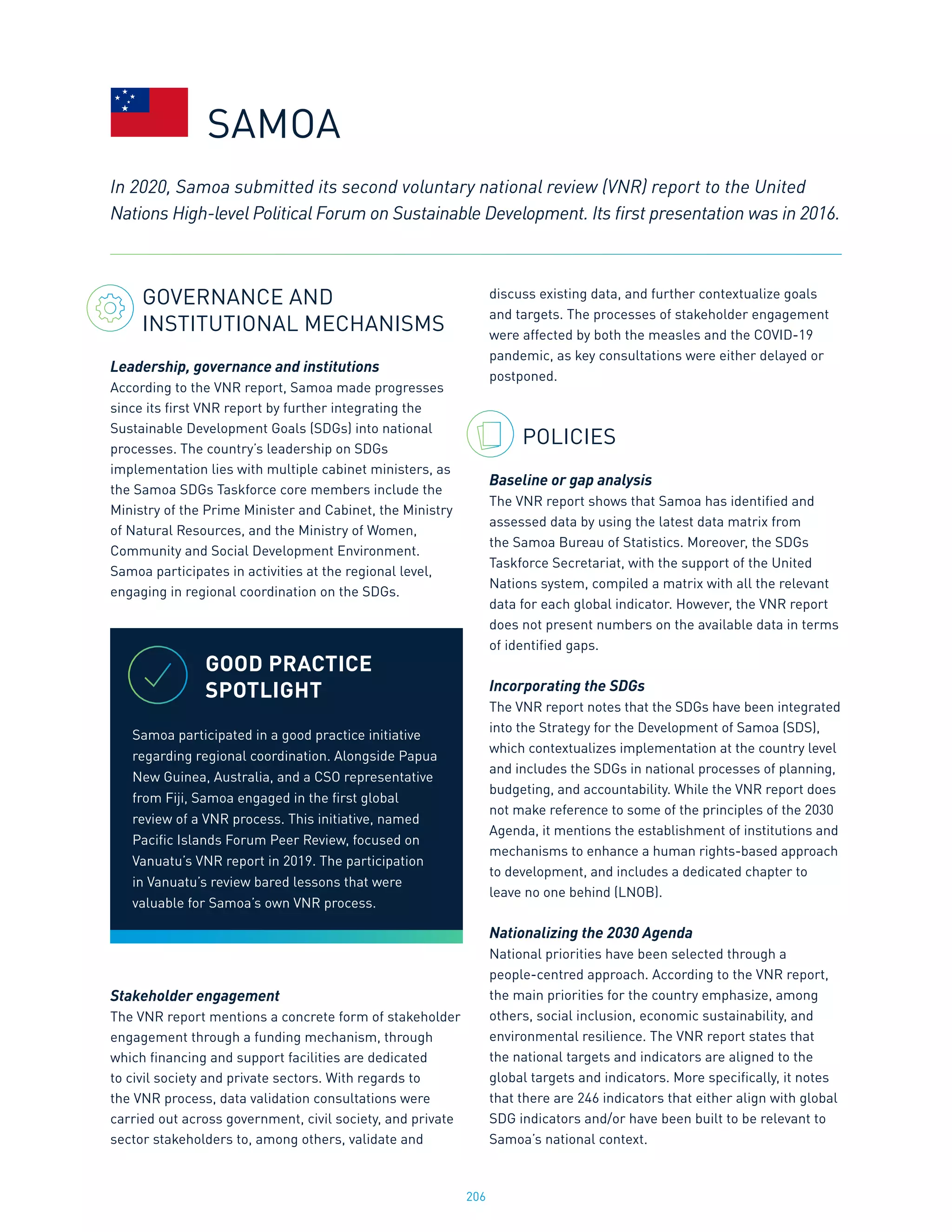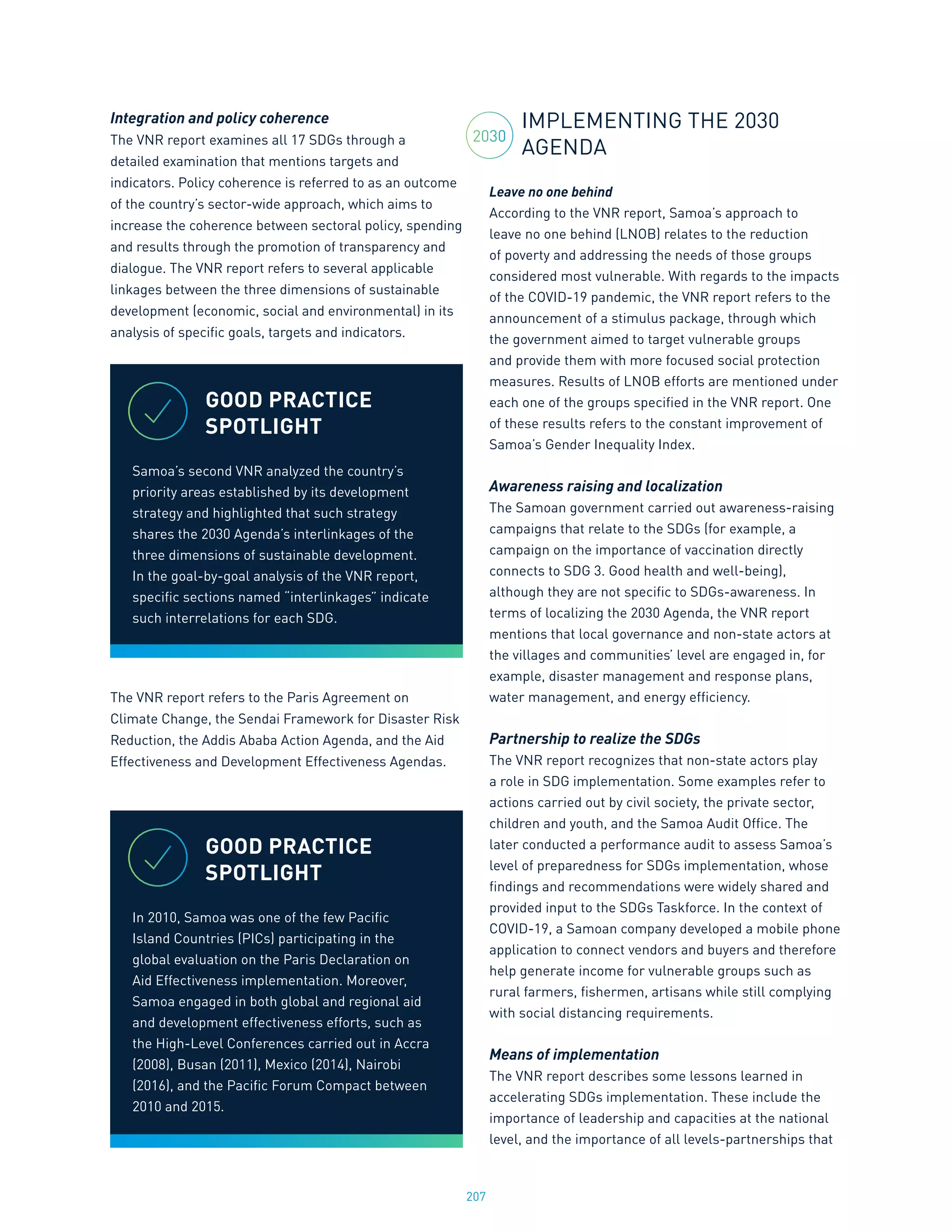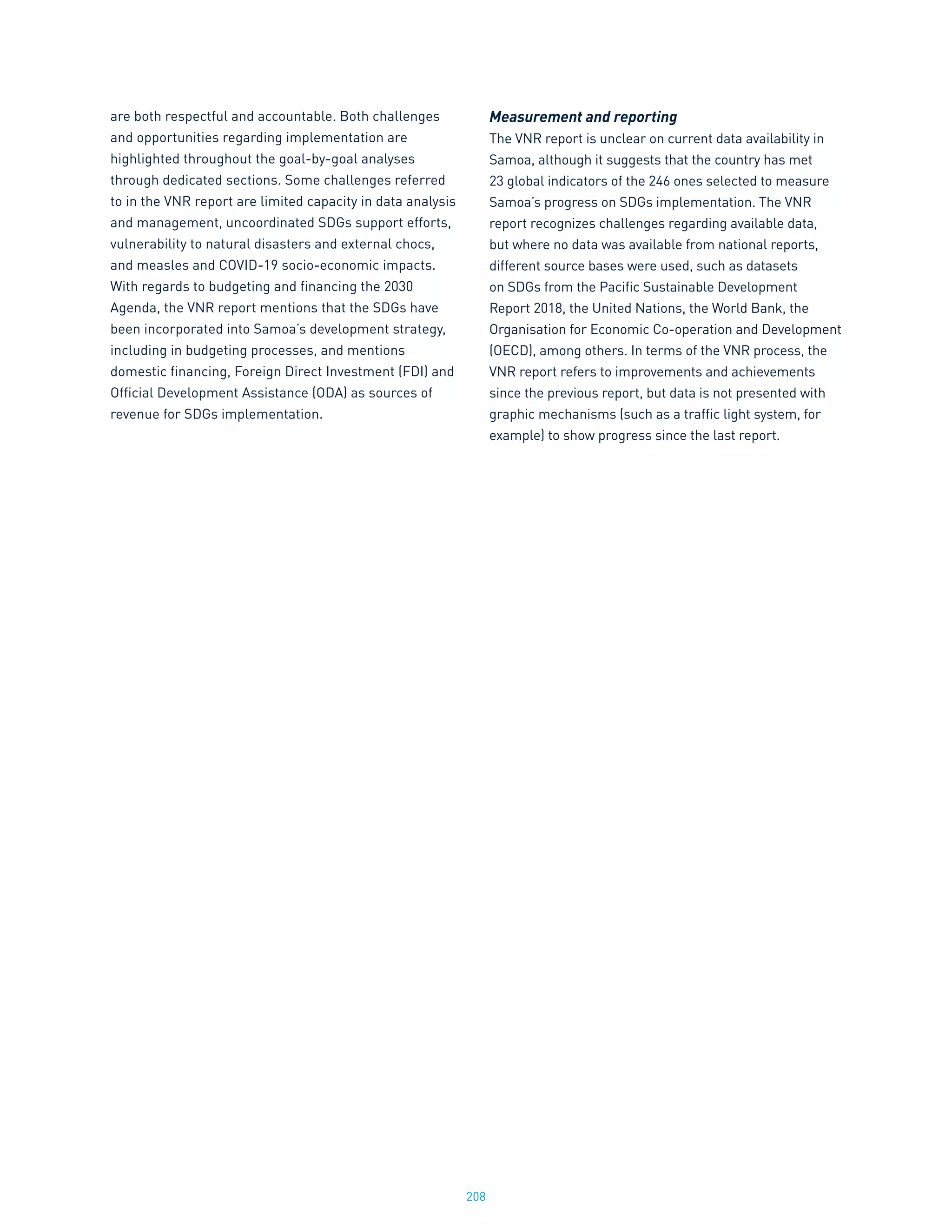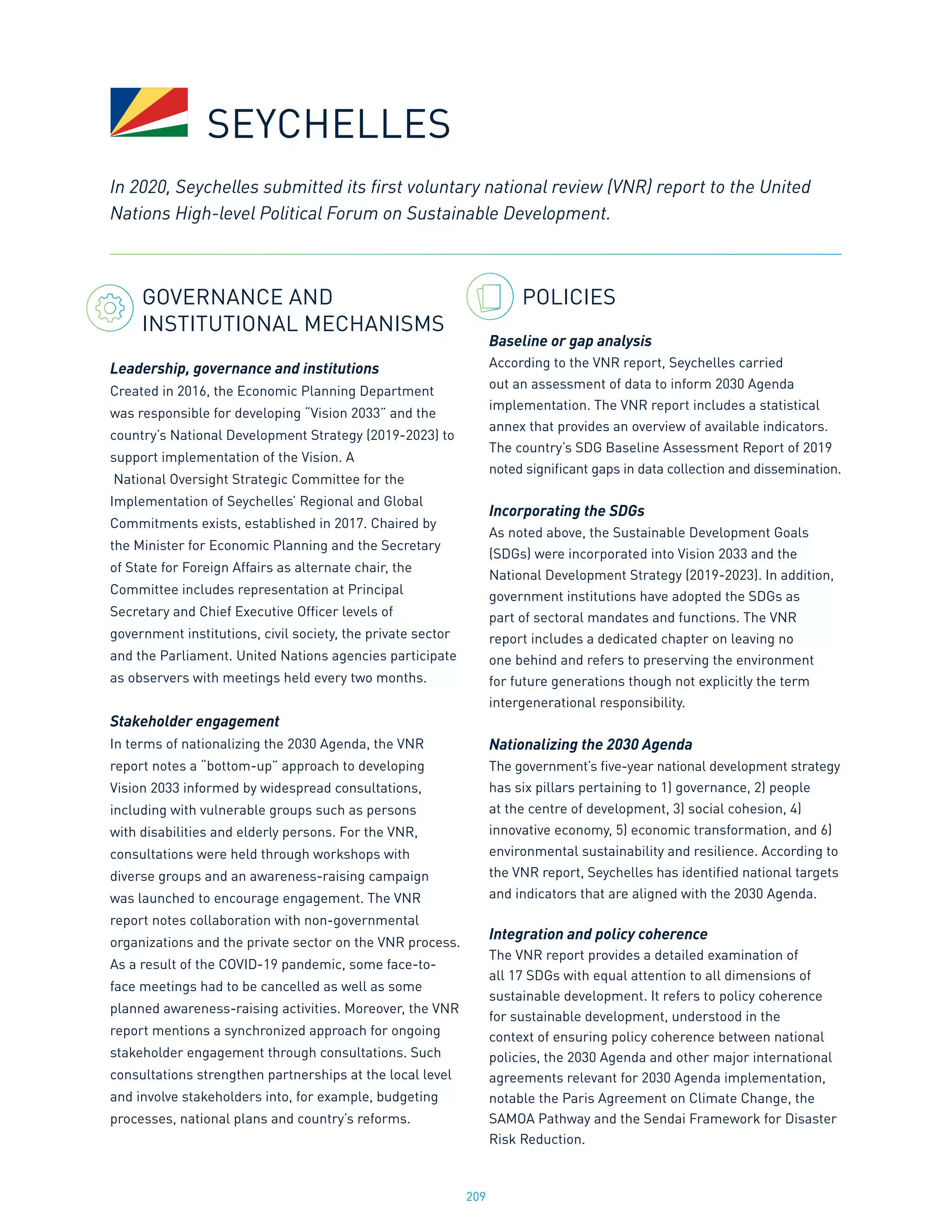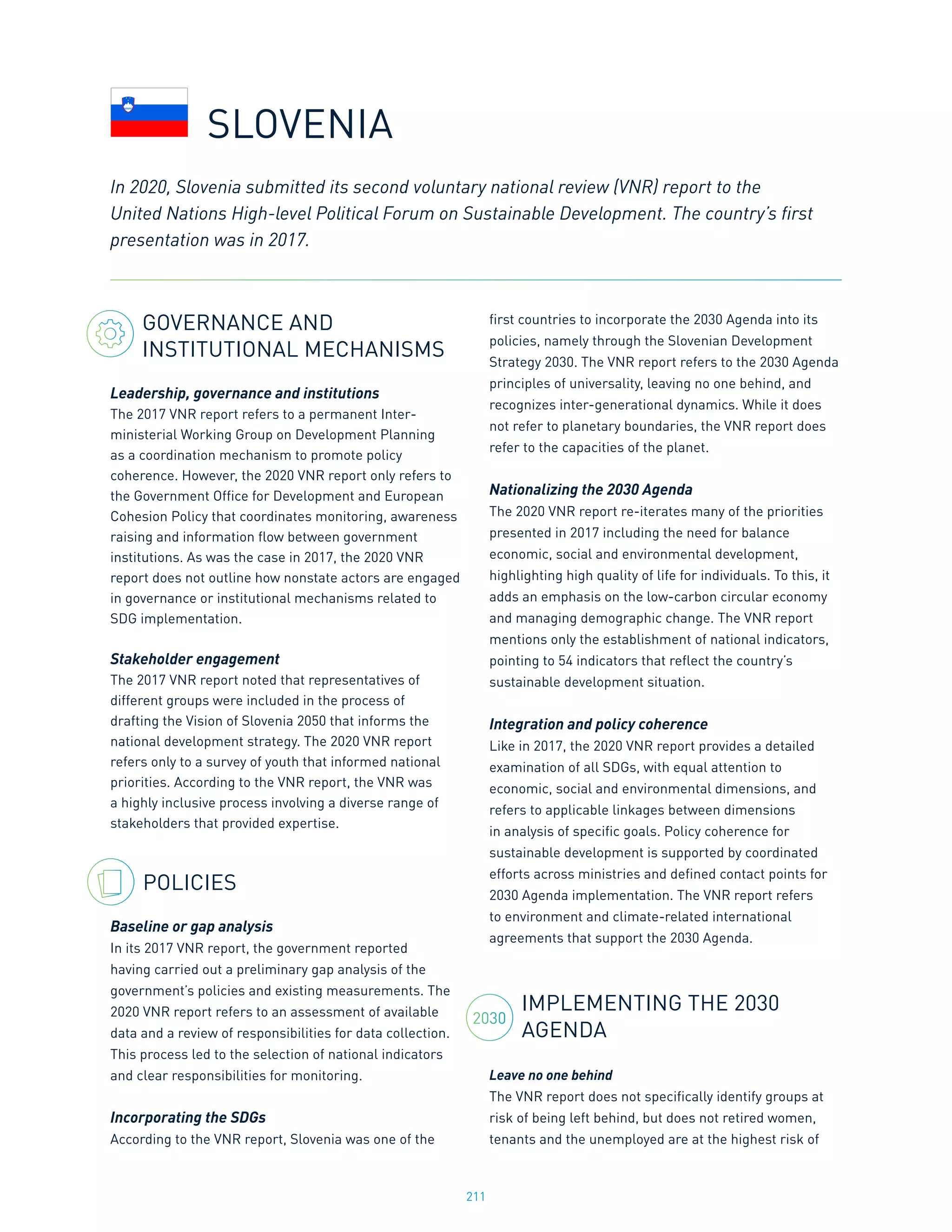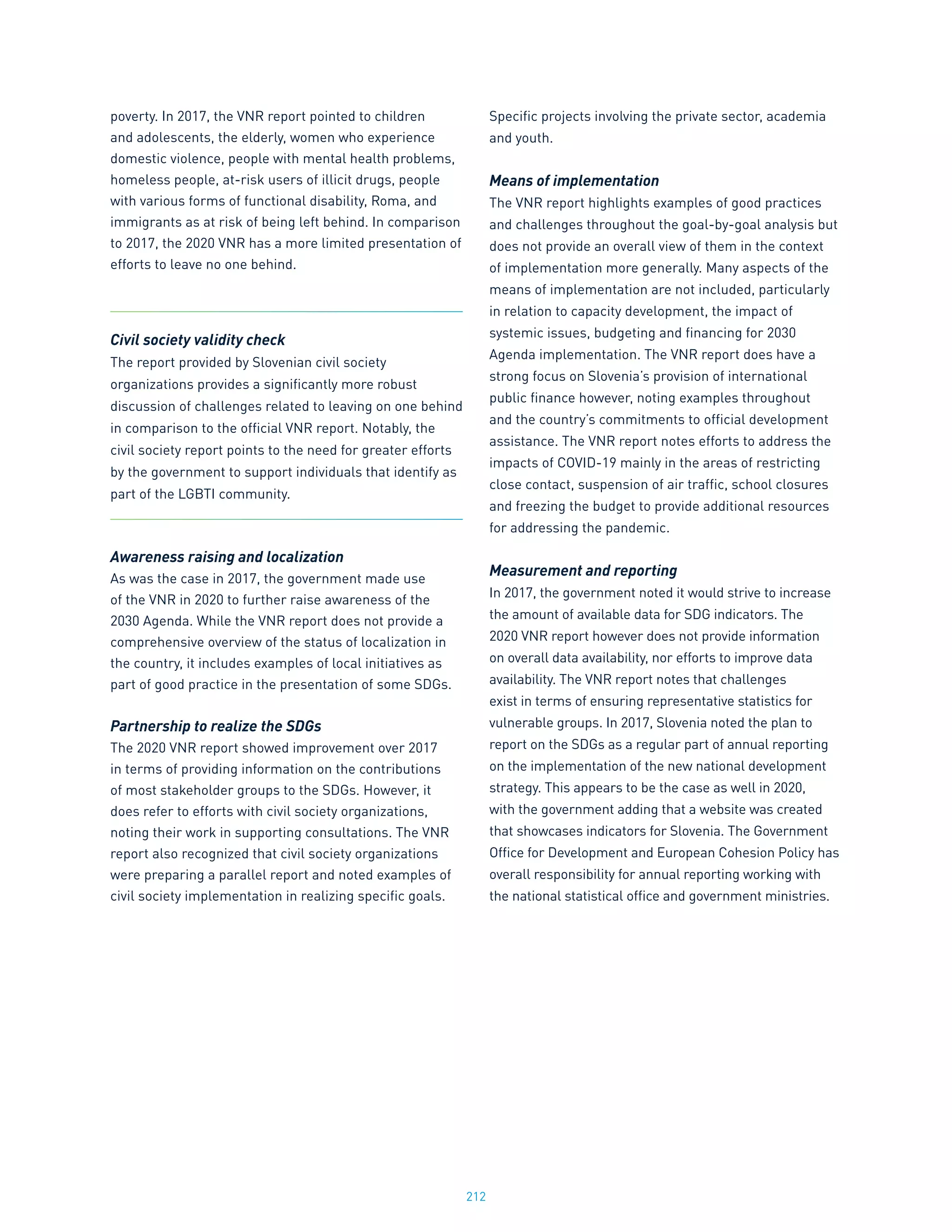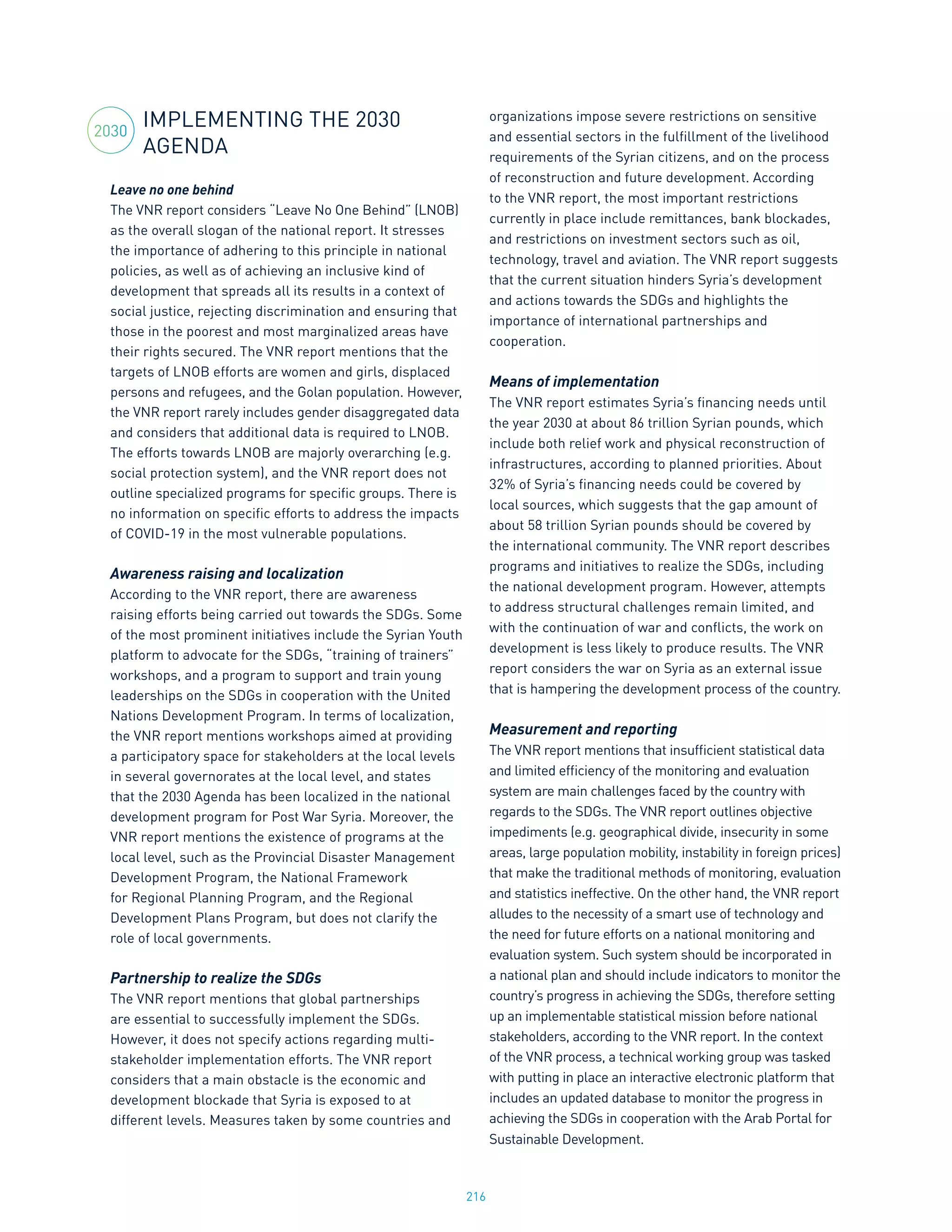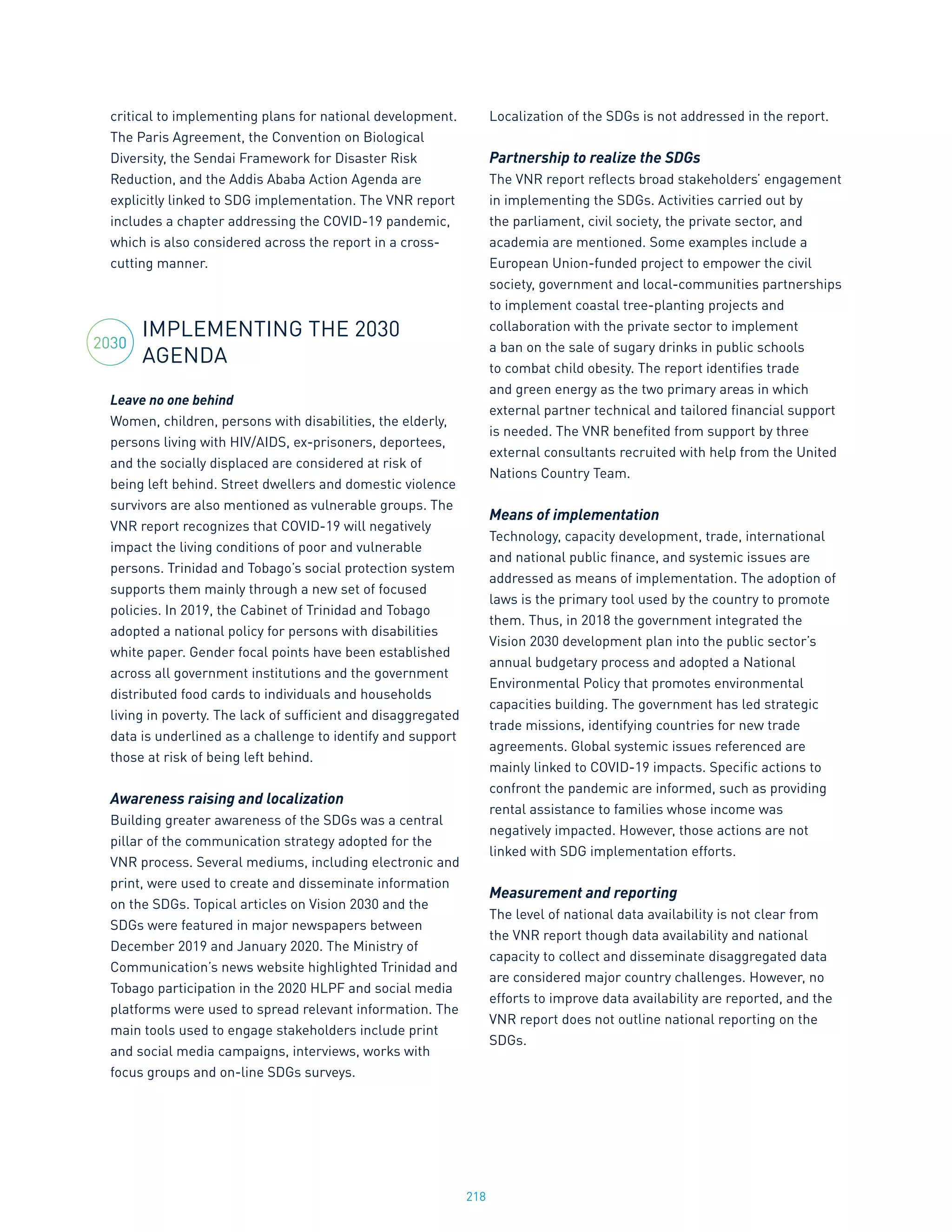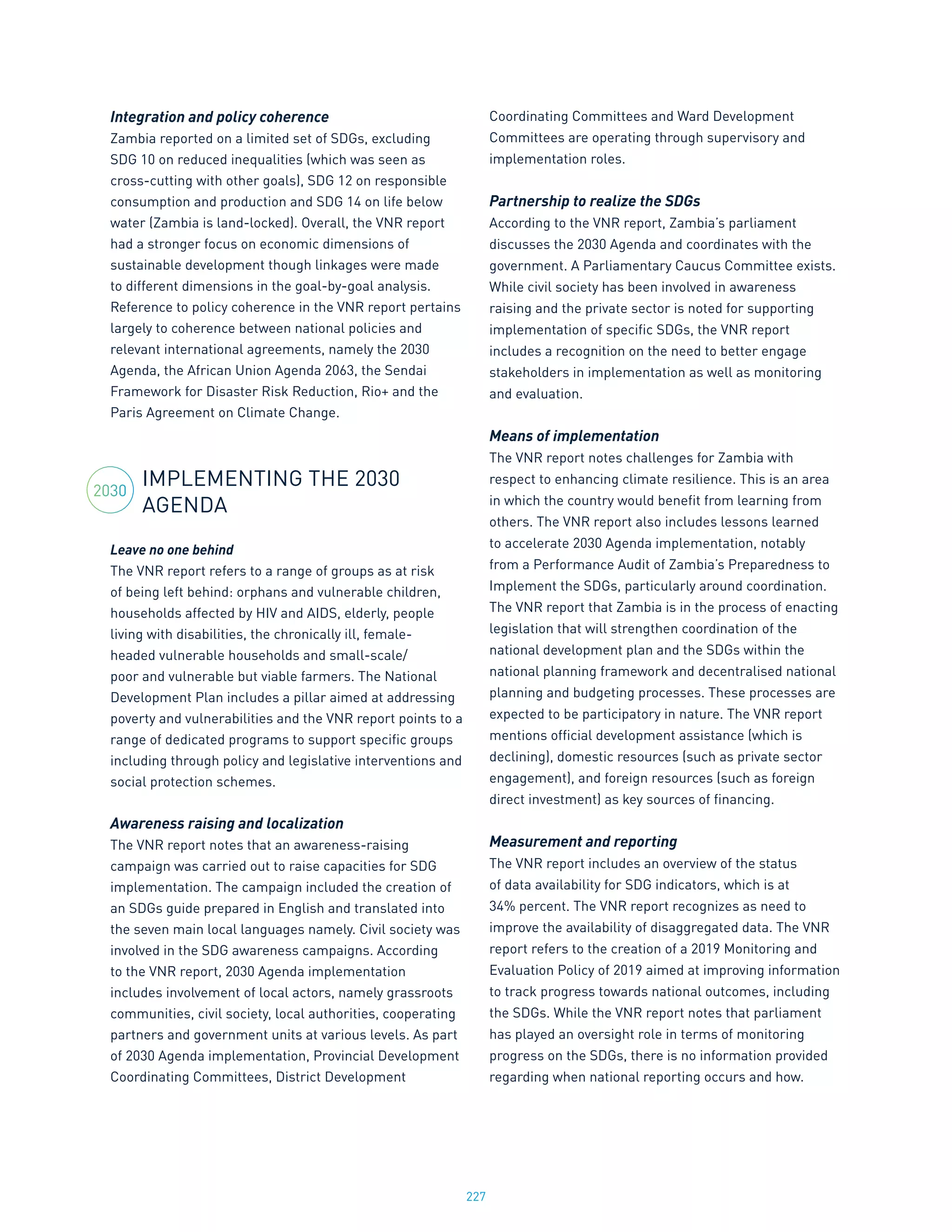This document provides a summary and analysis of voluntary national review (VNR) reports submitted to the United Nations in 2020 on progress implementing the 2030 Agenda for Sustainable Development. Some key findings include:
1) Countries more consistently reported on most implementation aspects, though reporting decreased on important issues like budgeting, trade, technology and challenges.
2) Many countries only partially reported based on common UN guidelines.
3) Reporting on leaving no one behind increased but identifying vulnerable groups and strategies remain a challenge.
4) Non-state actors are included in governance but reporting on engagement outside of this decreased.
5) VNRs did not mention closing civic space or attacks on human rights defenders
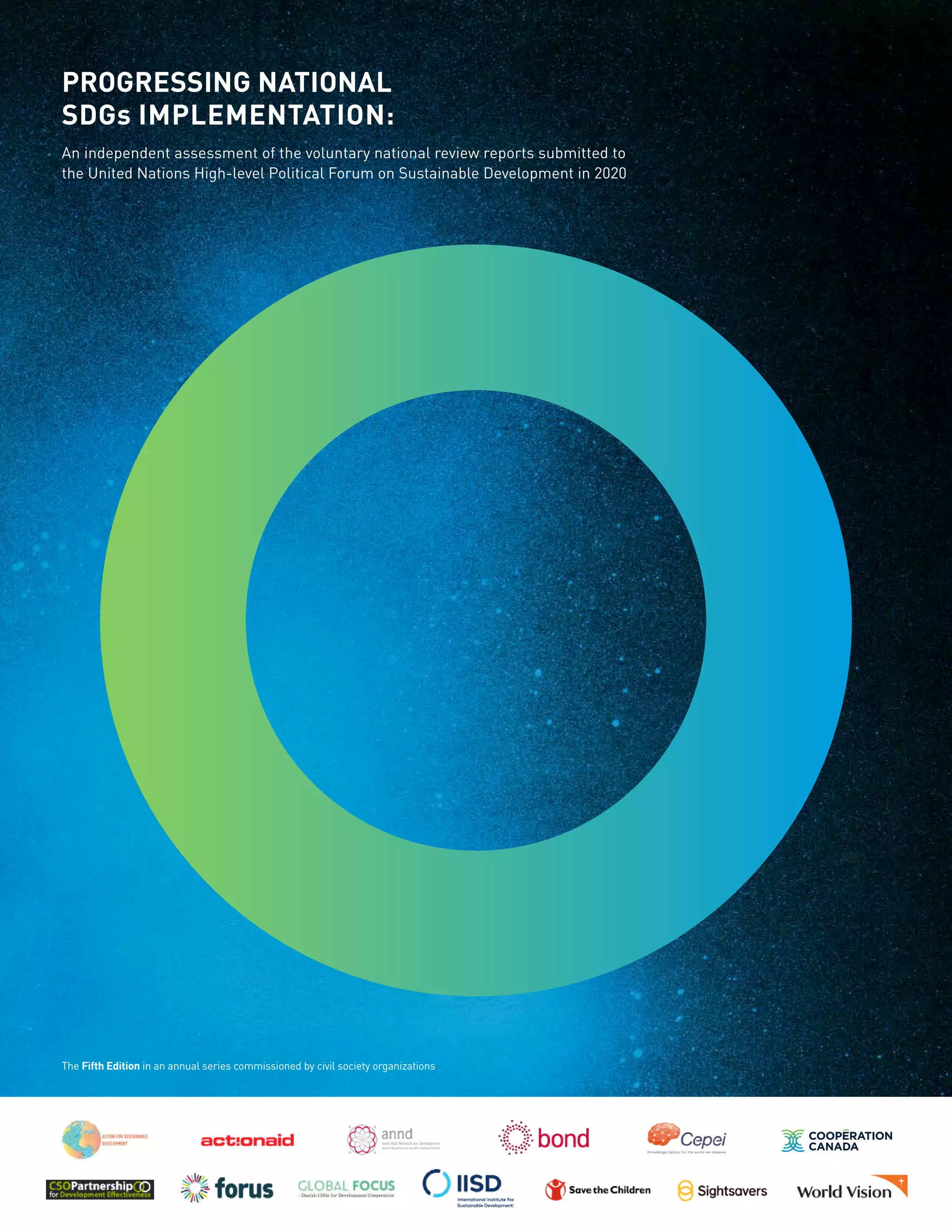
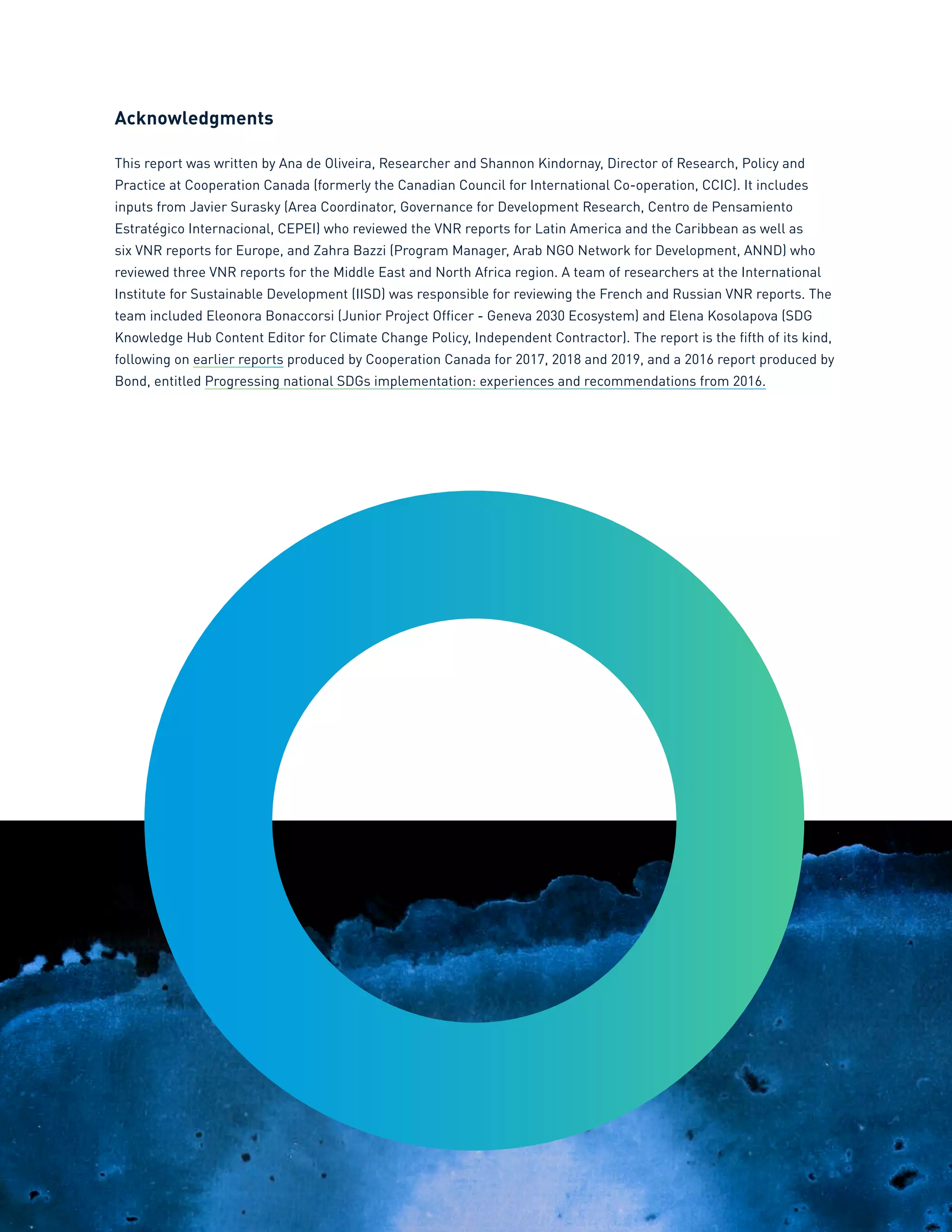
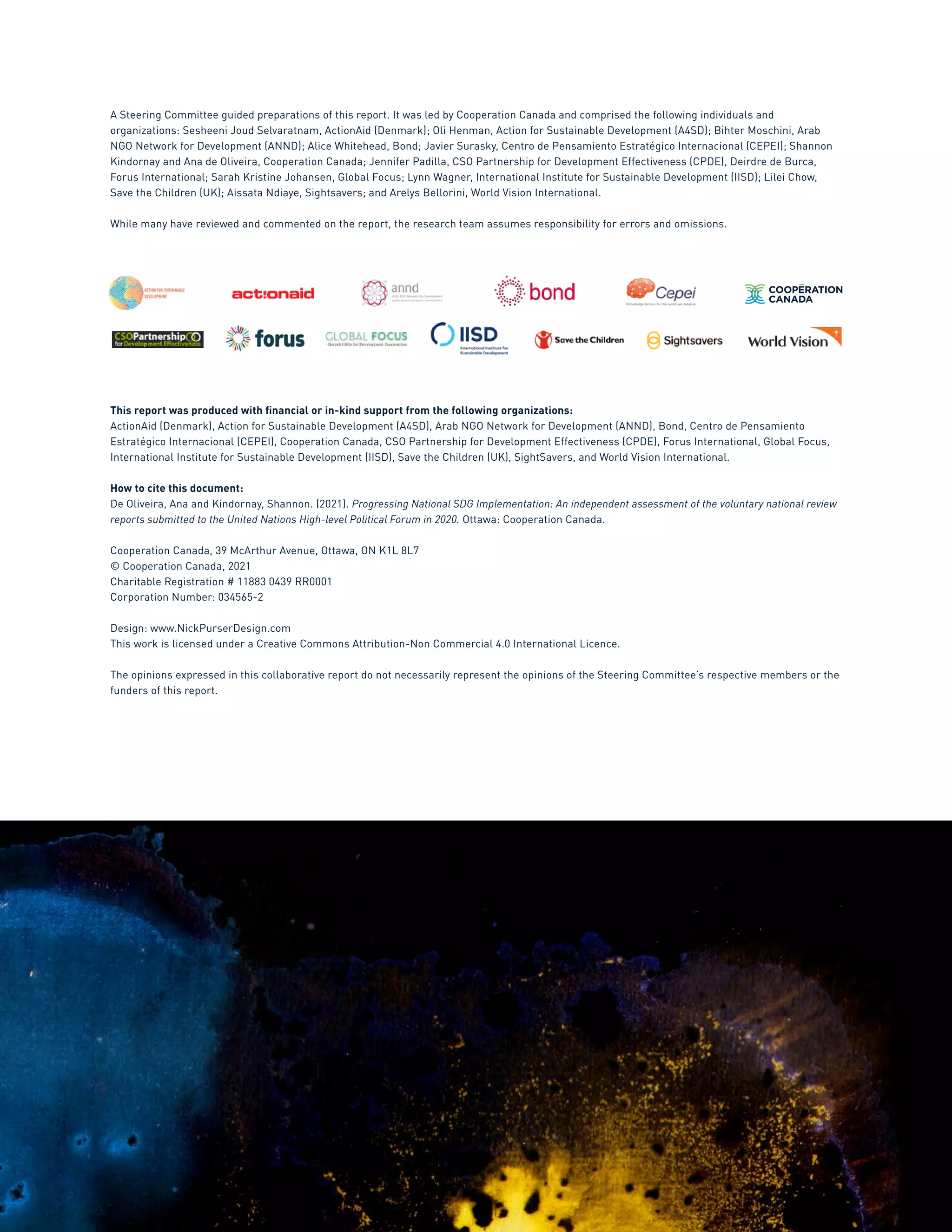
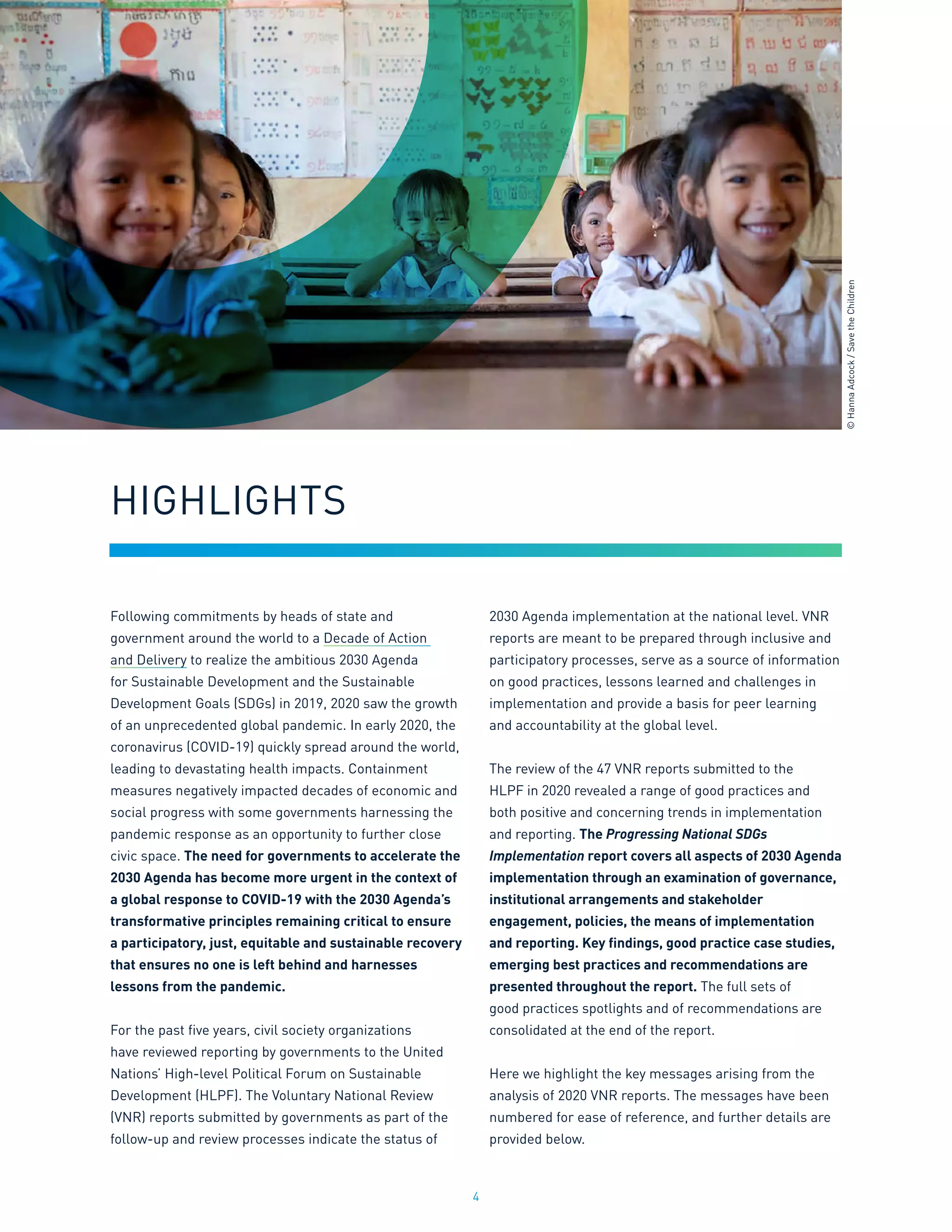
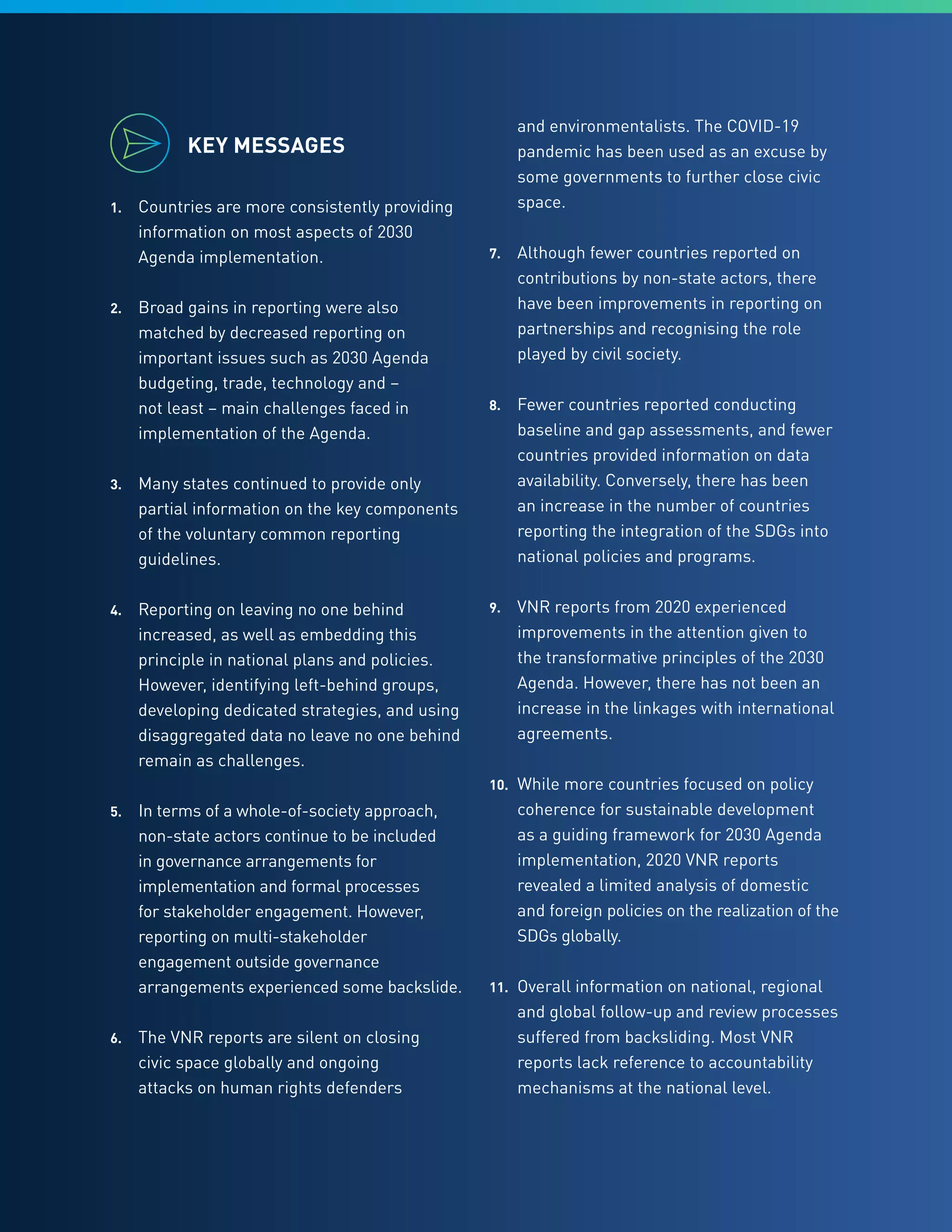
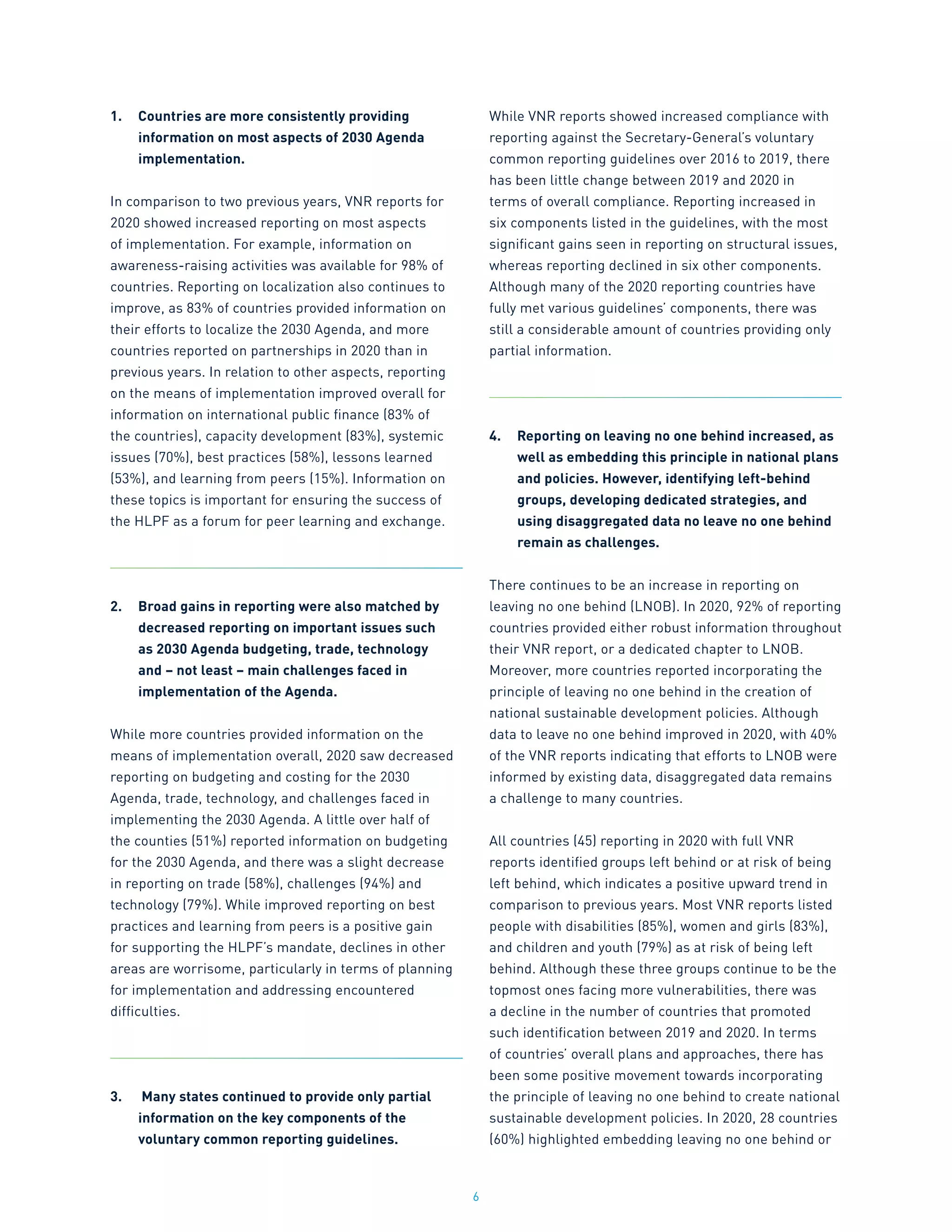
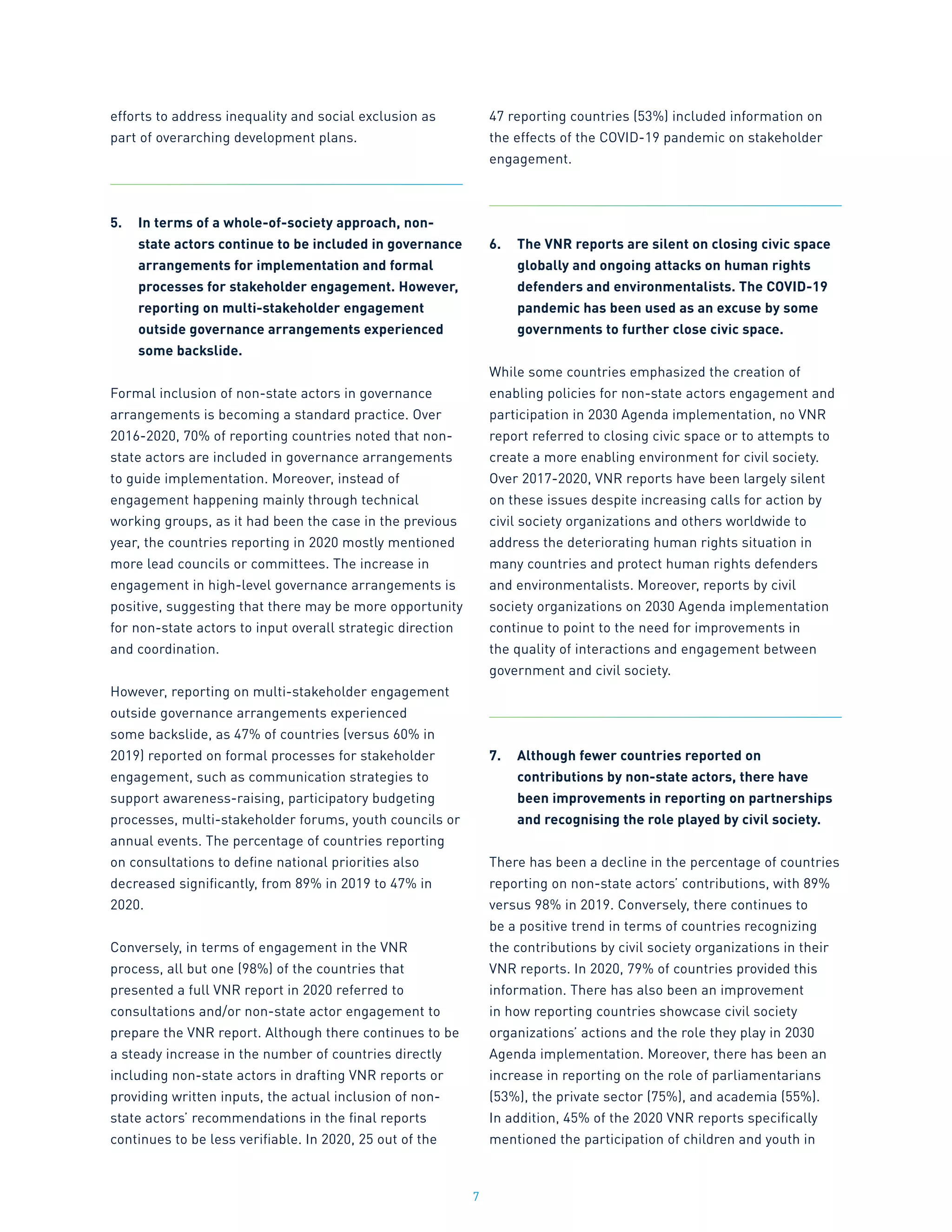
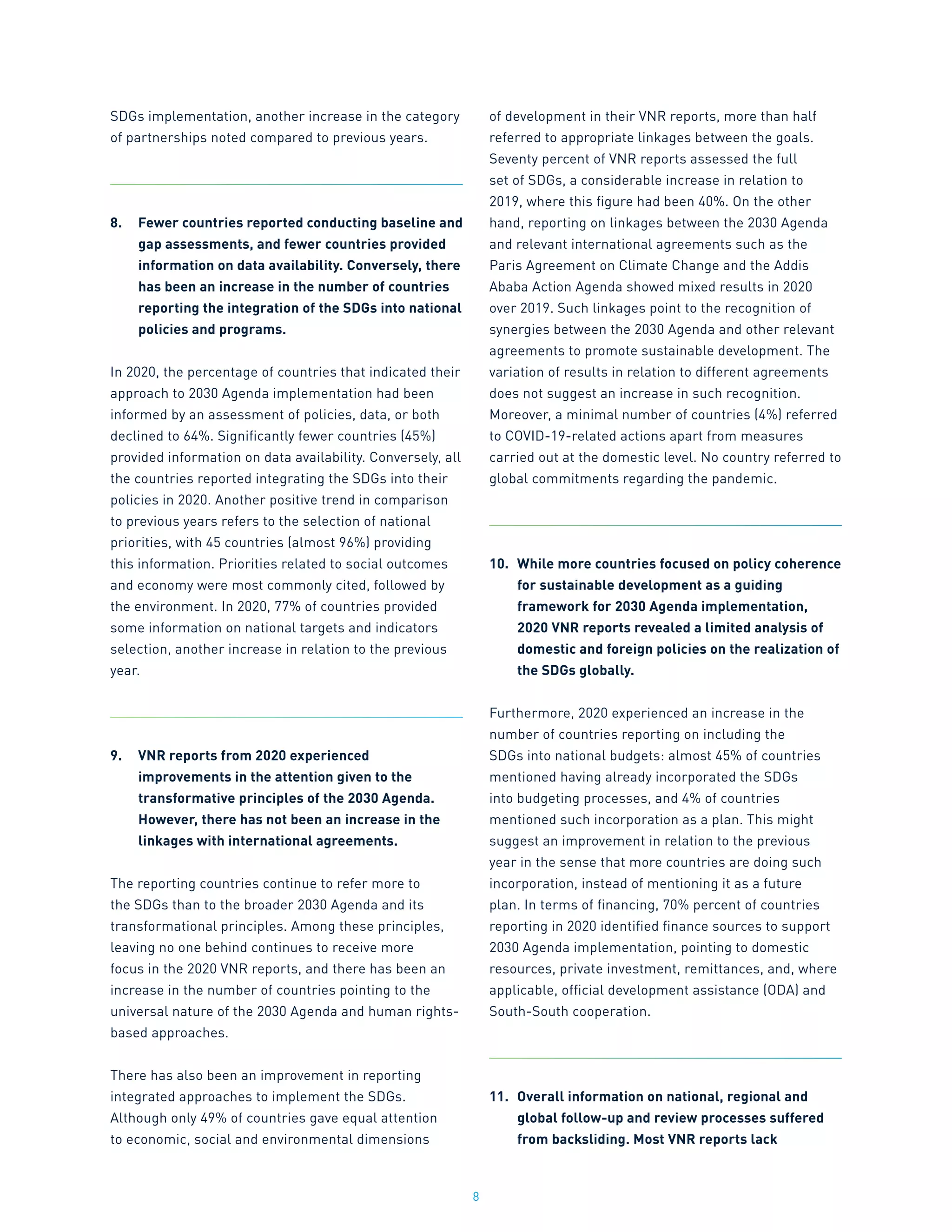

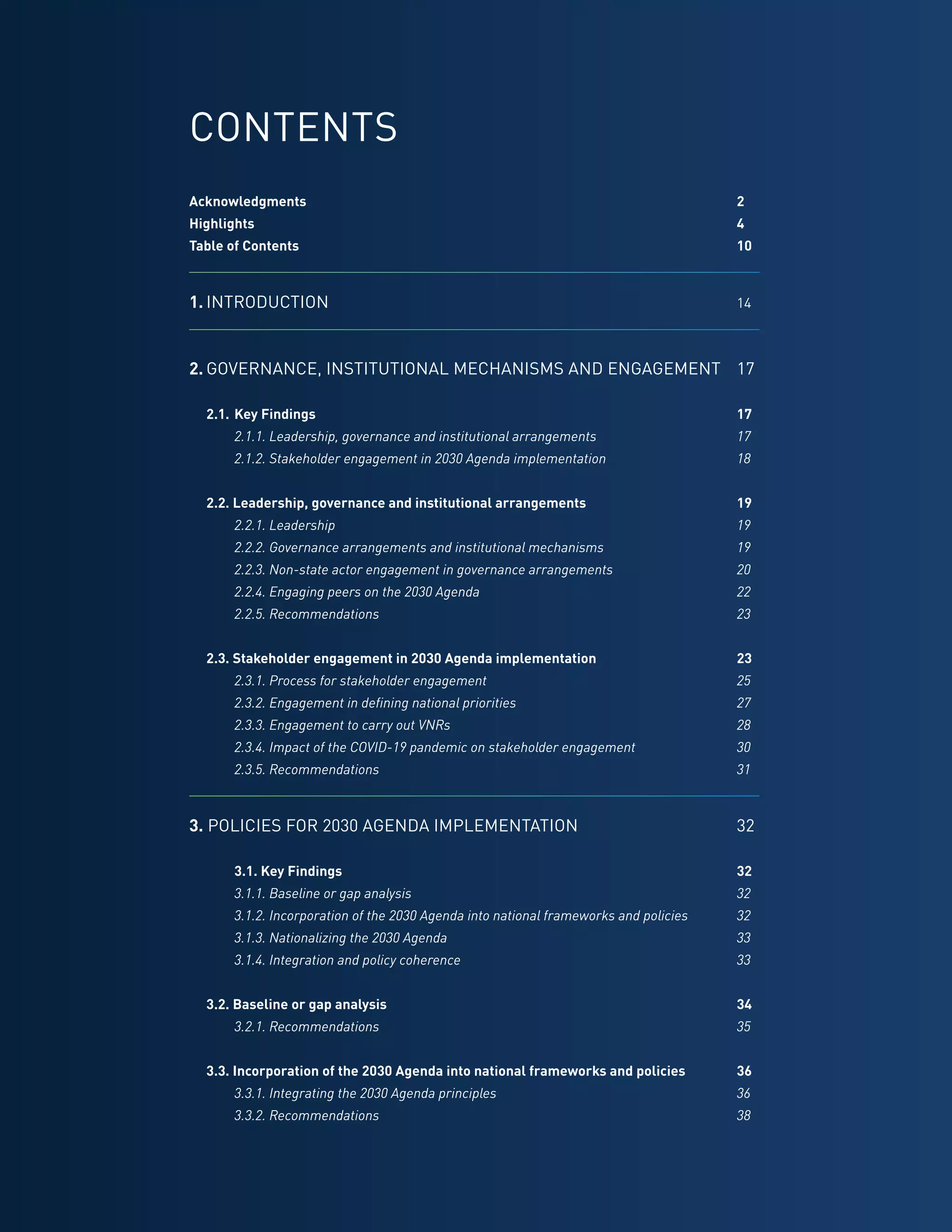
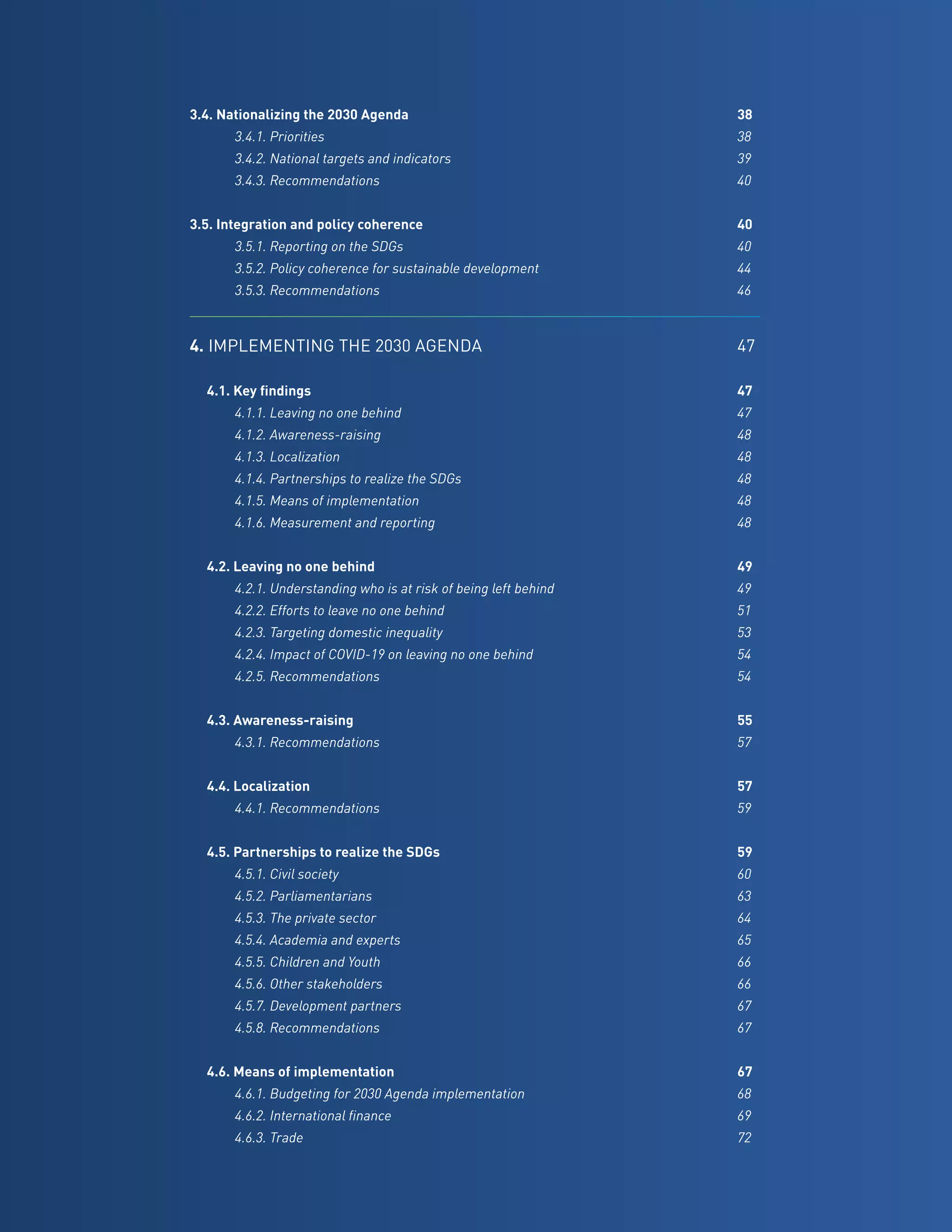





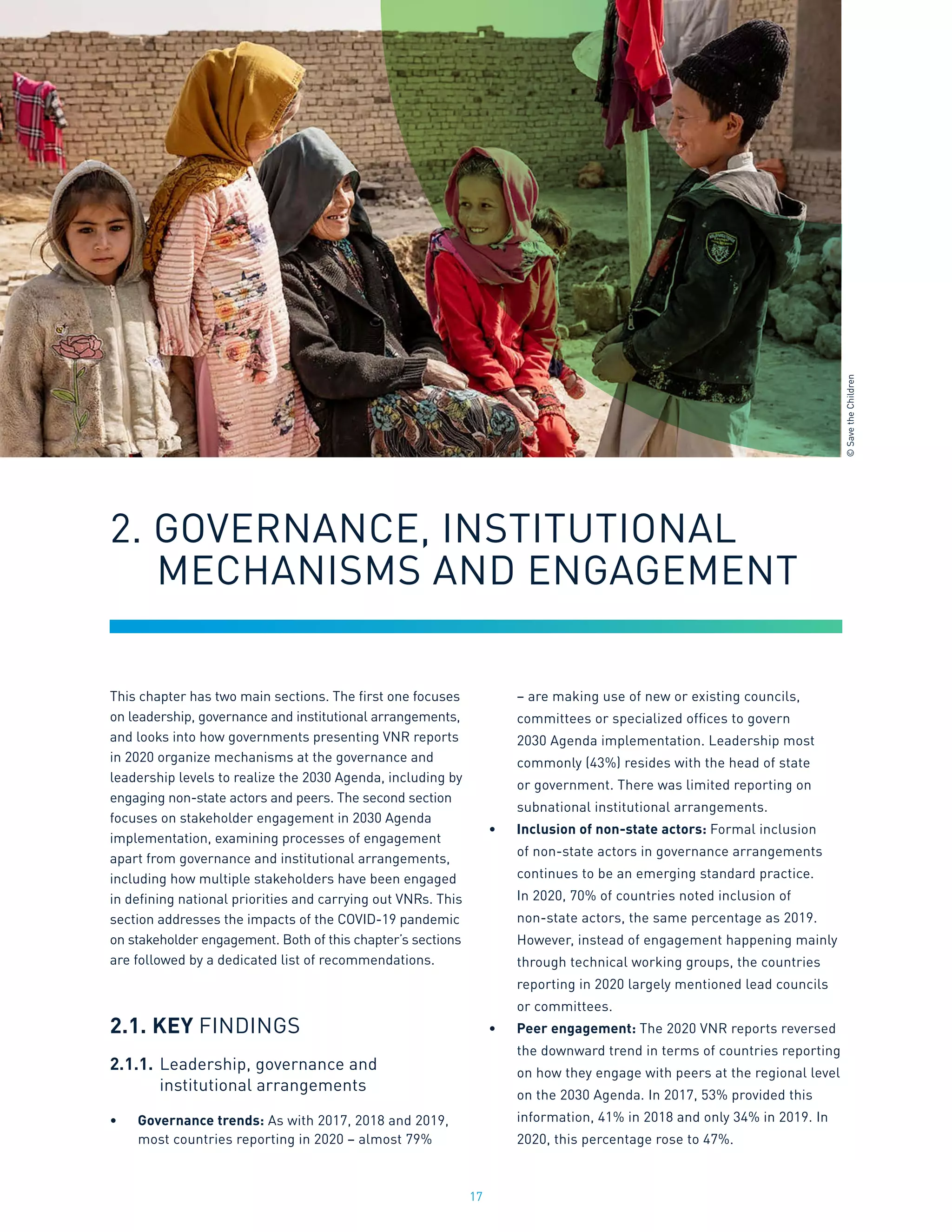

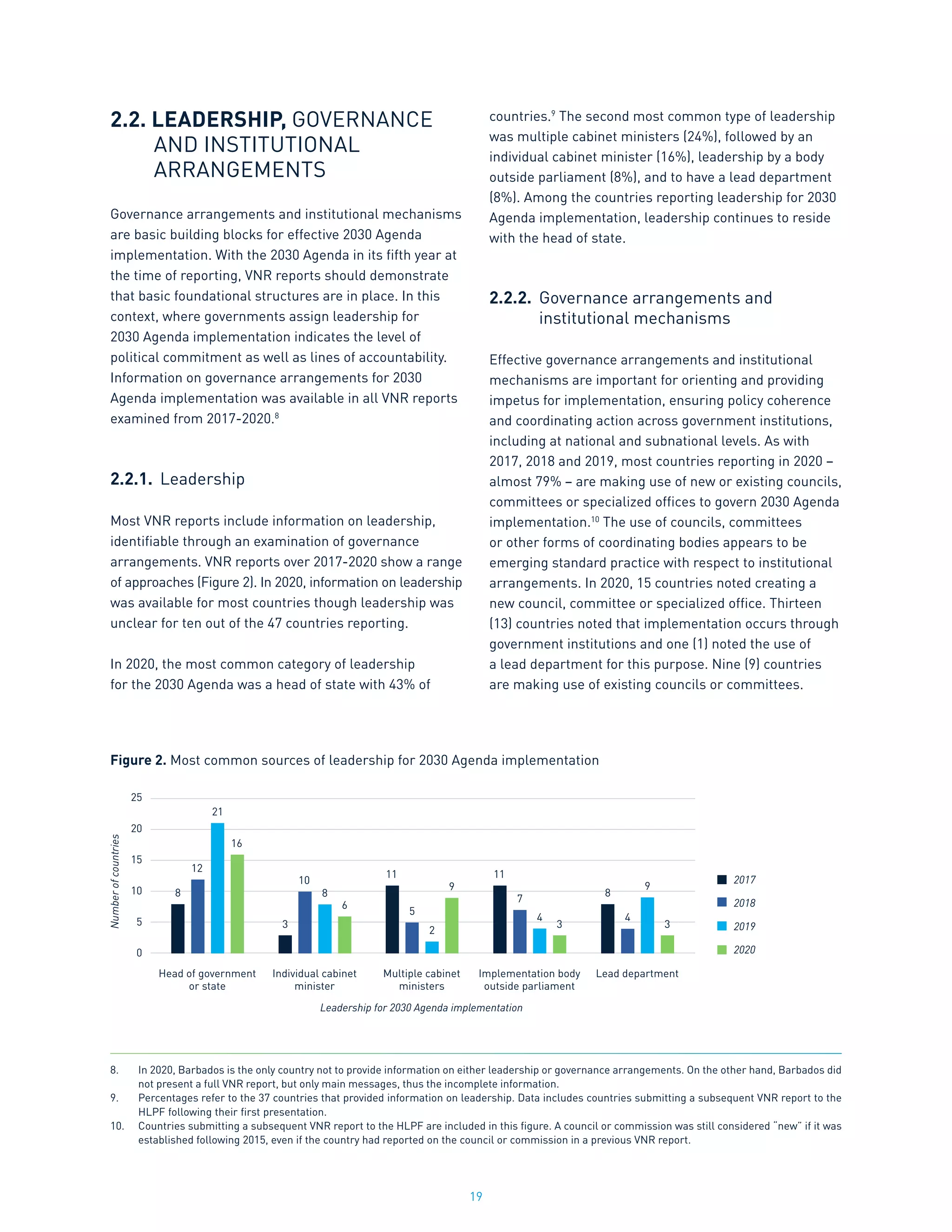



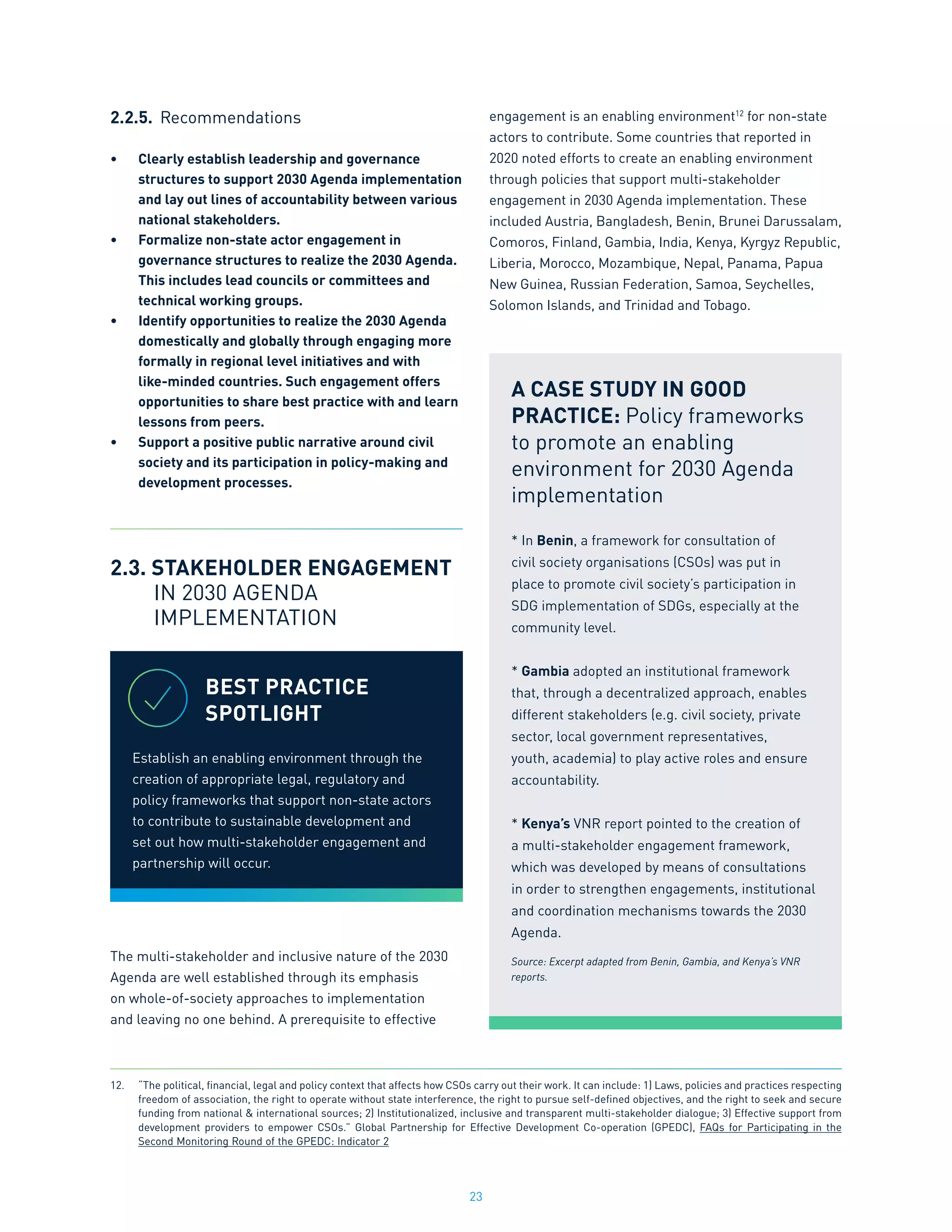


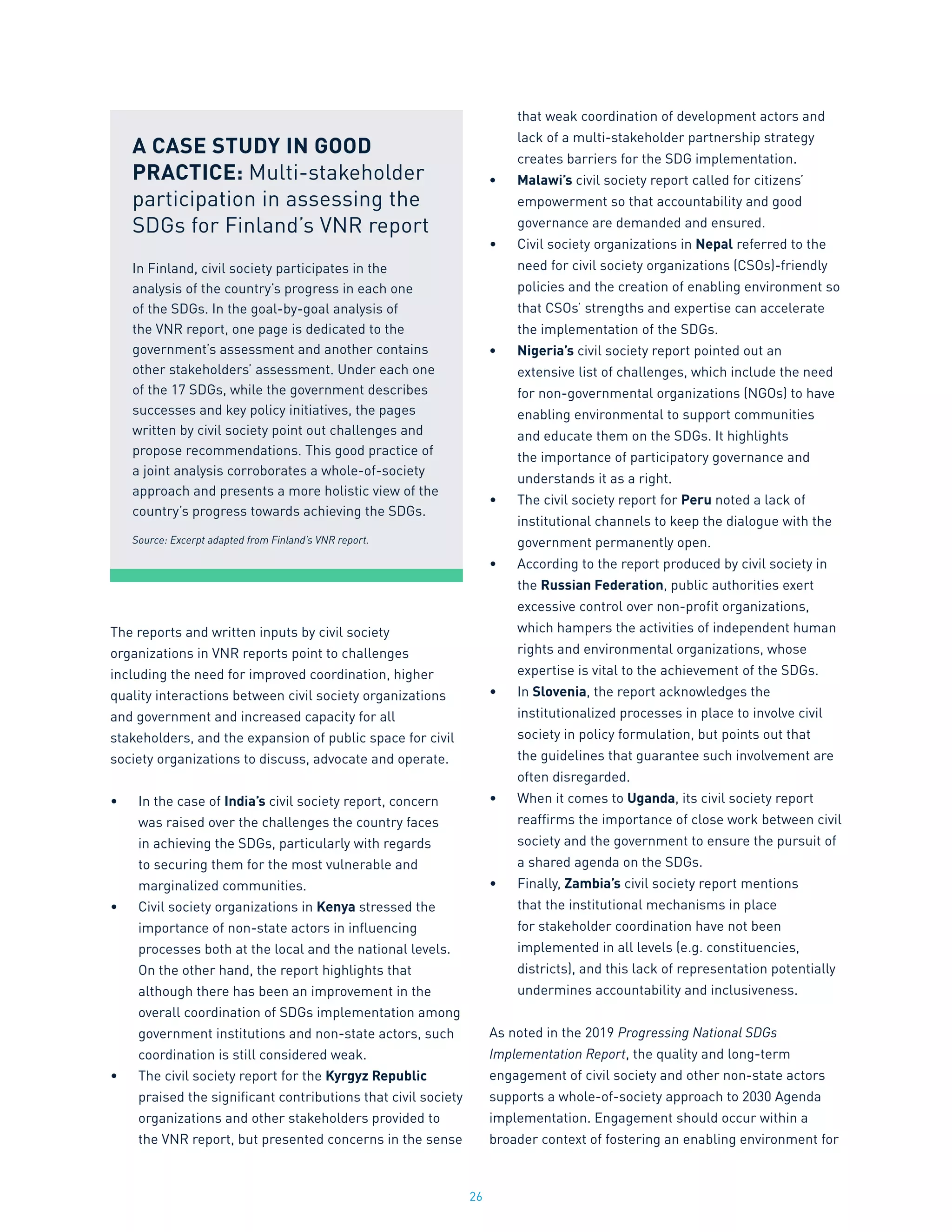
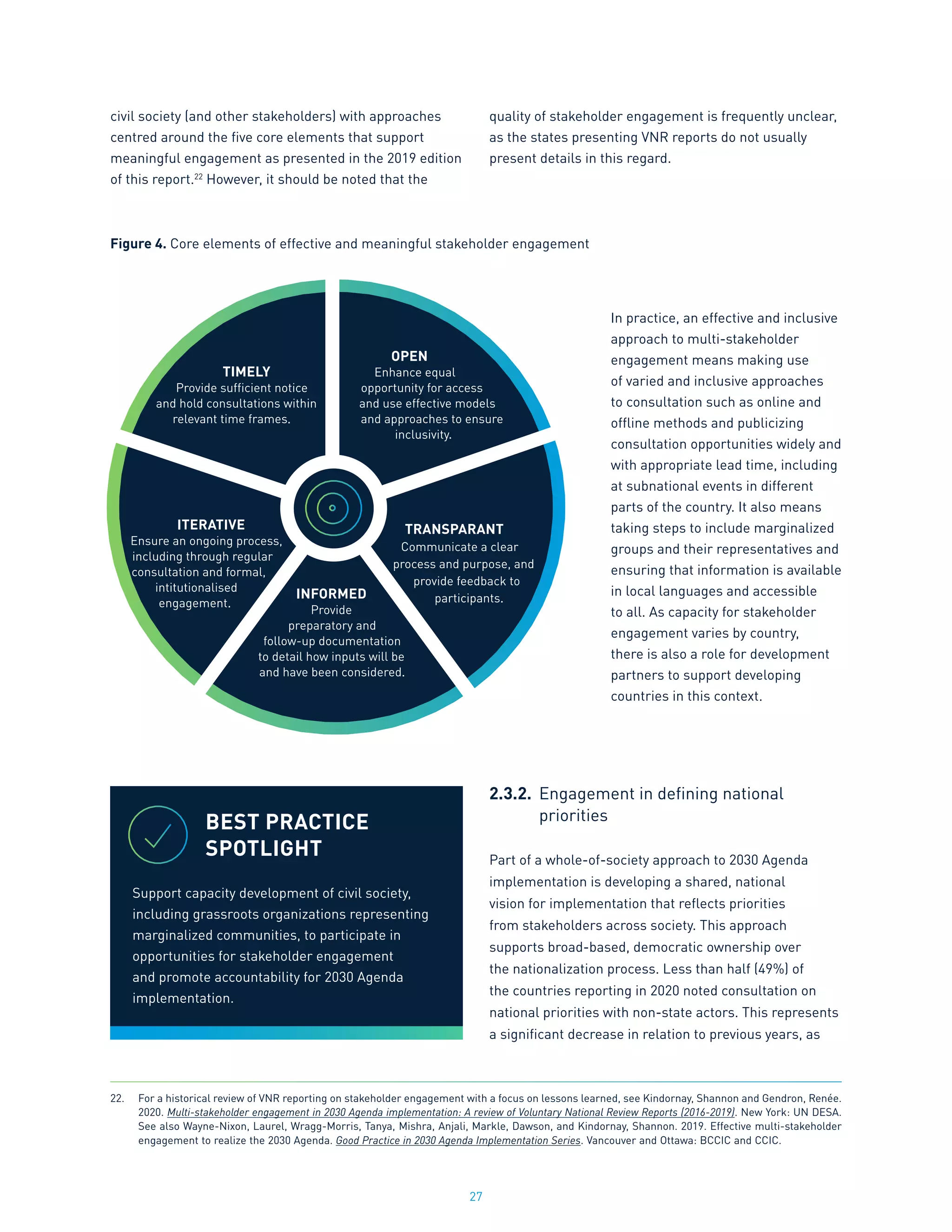

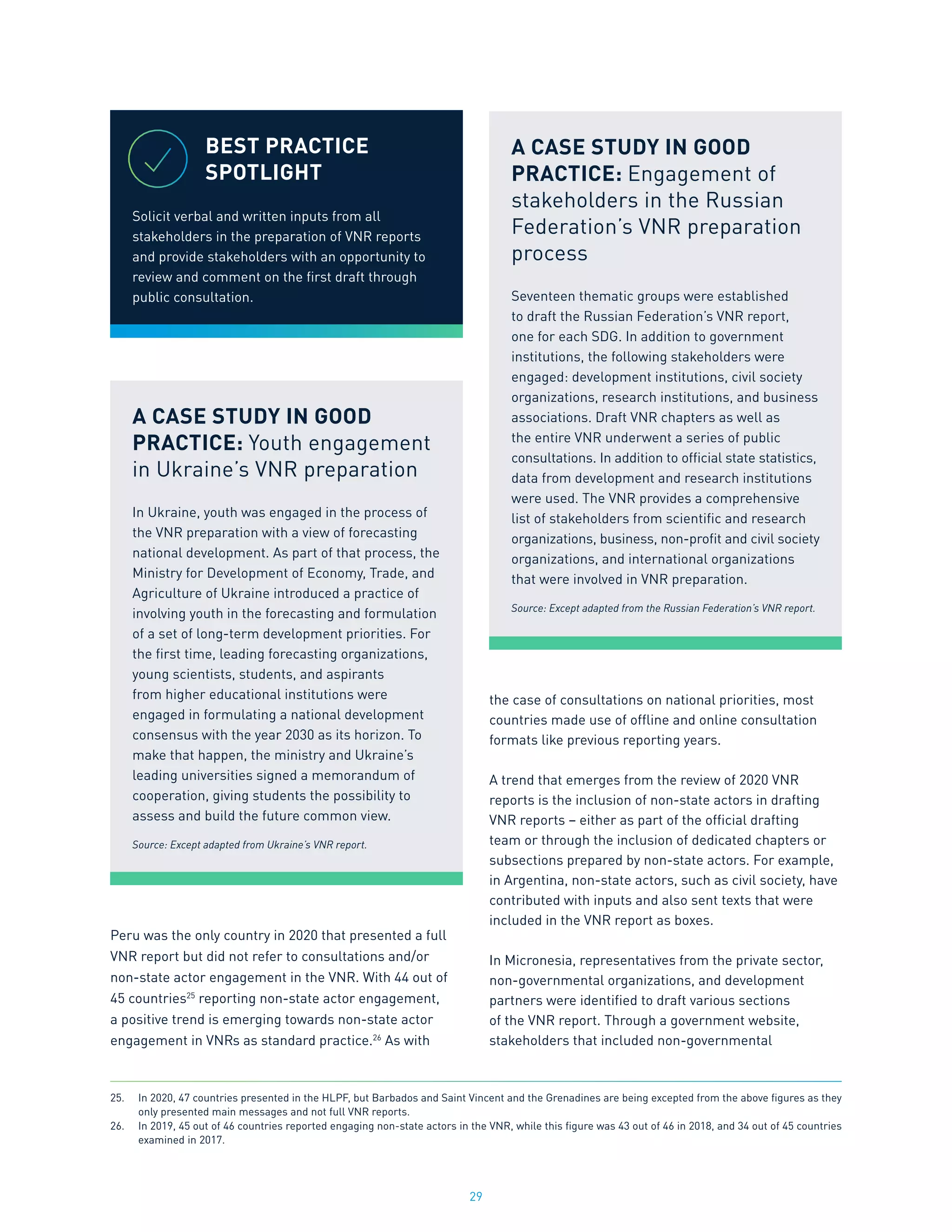
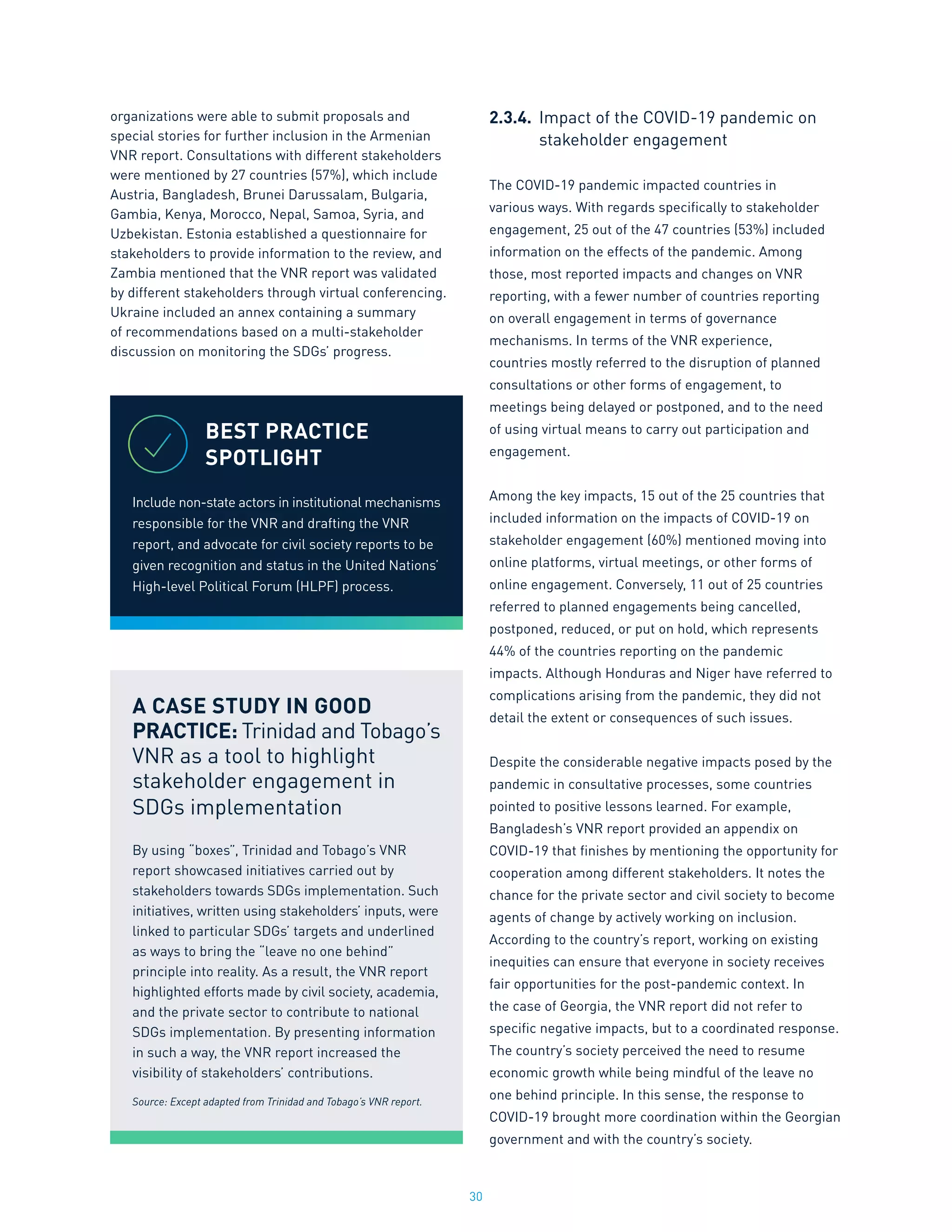
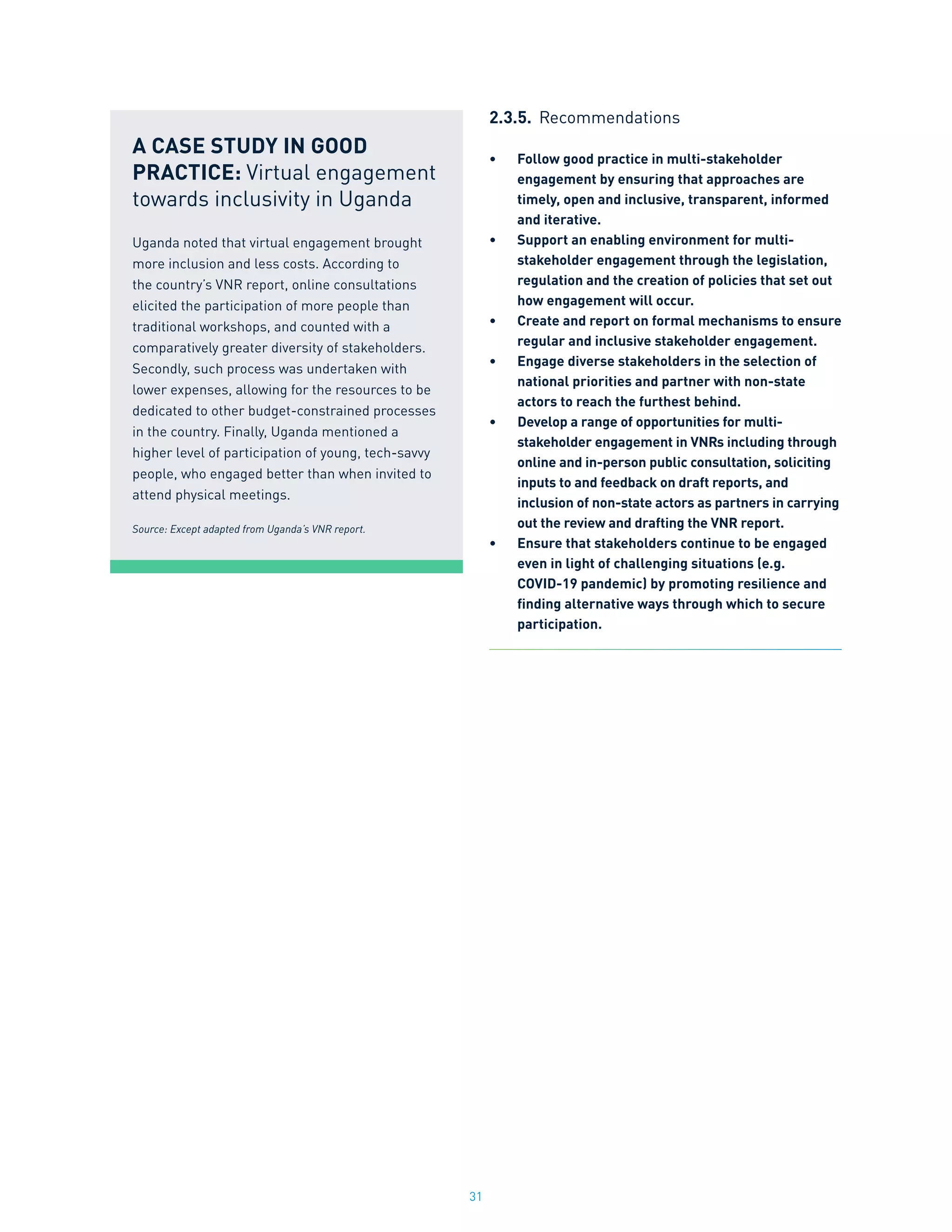





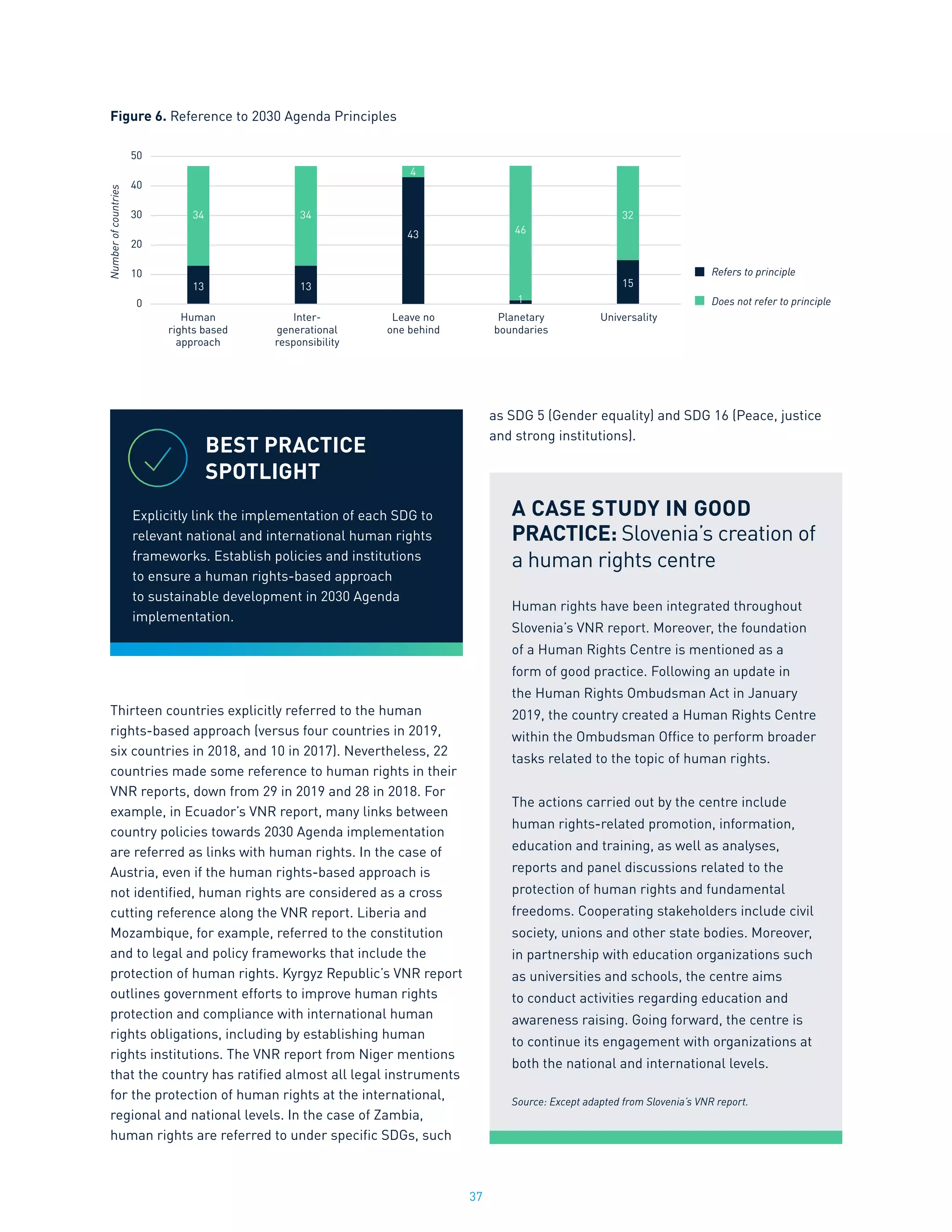
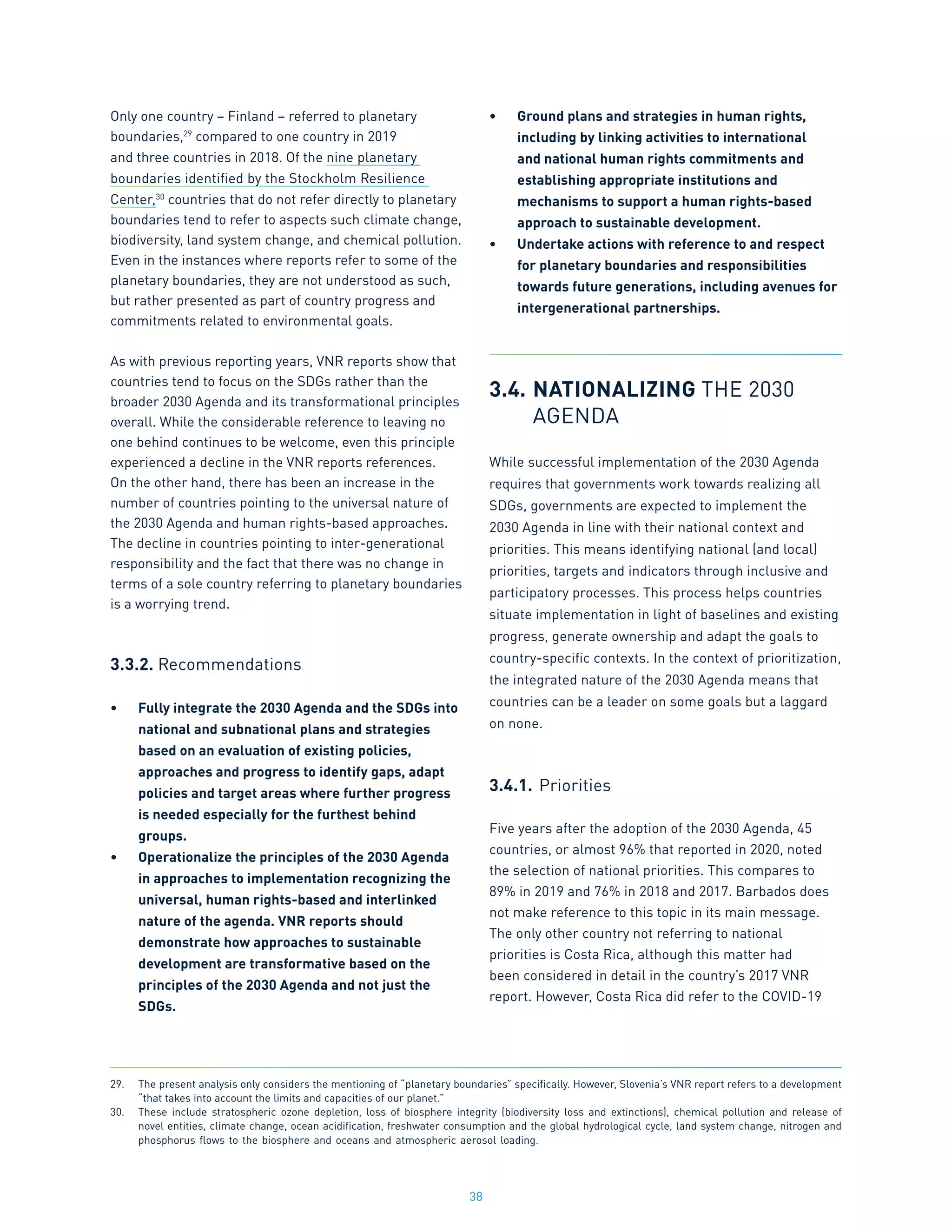


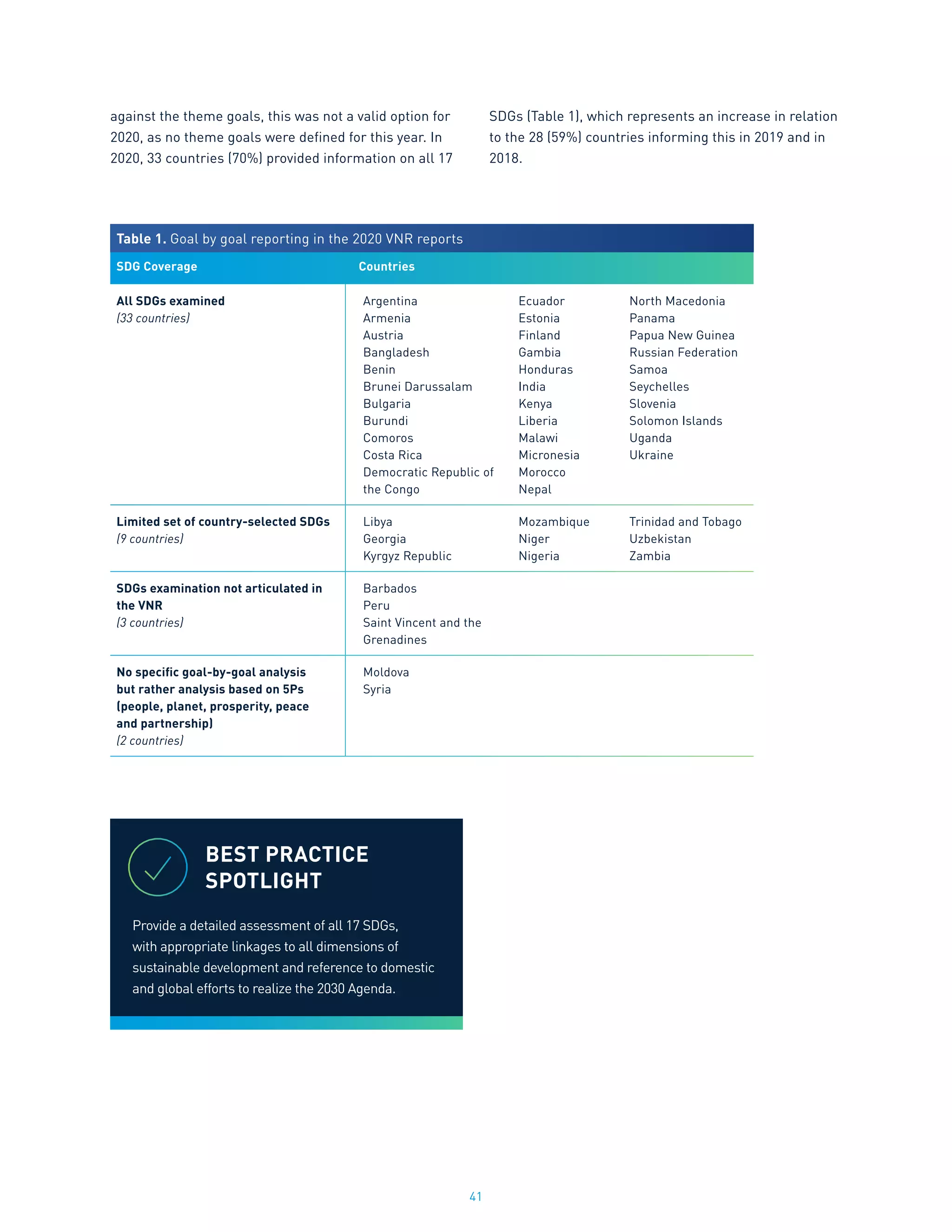

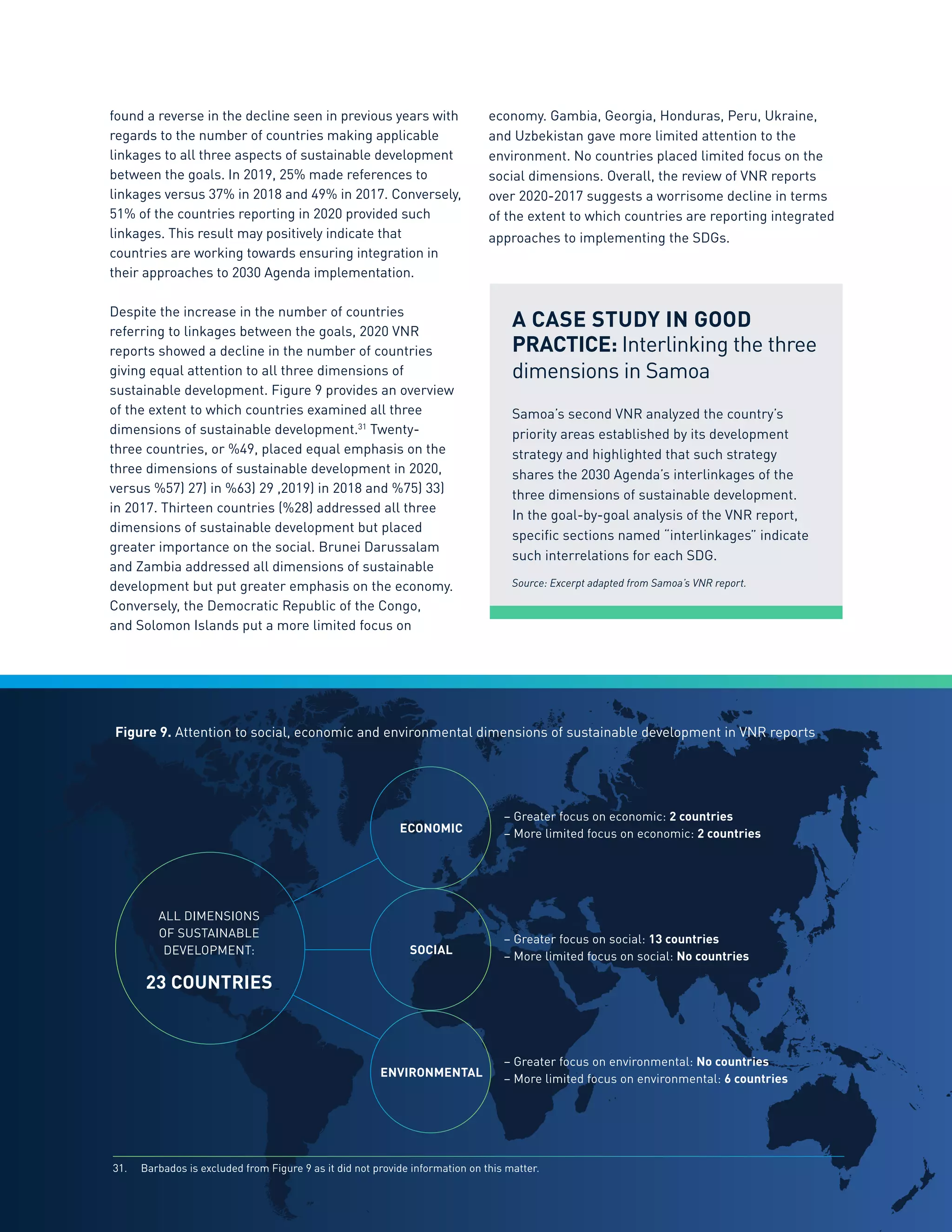
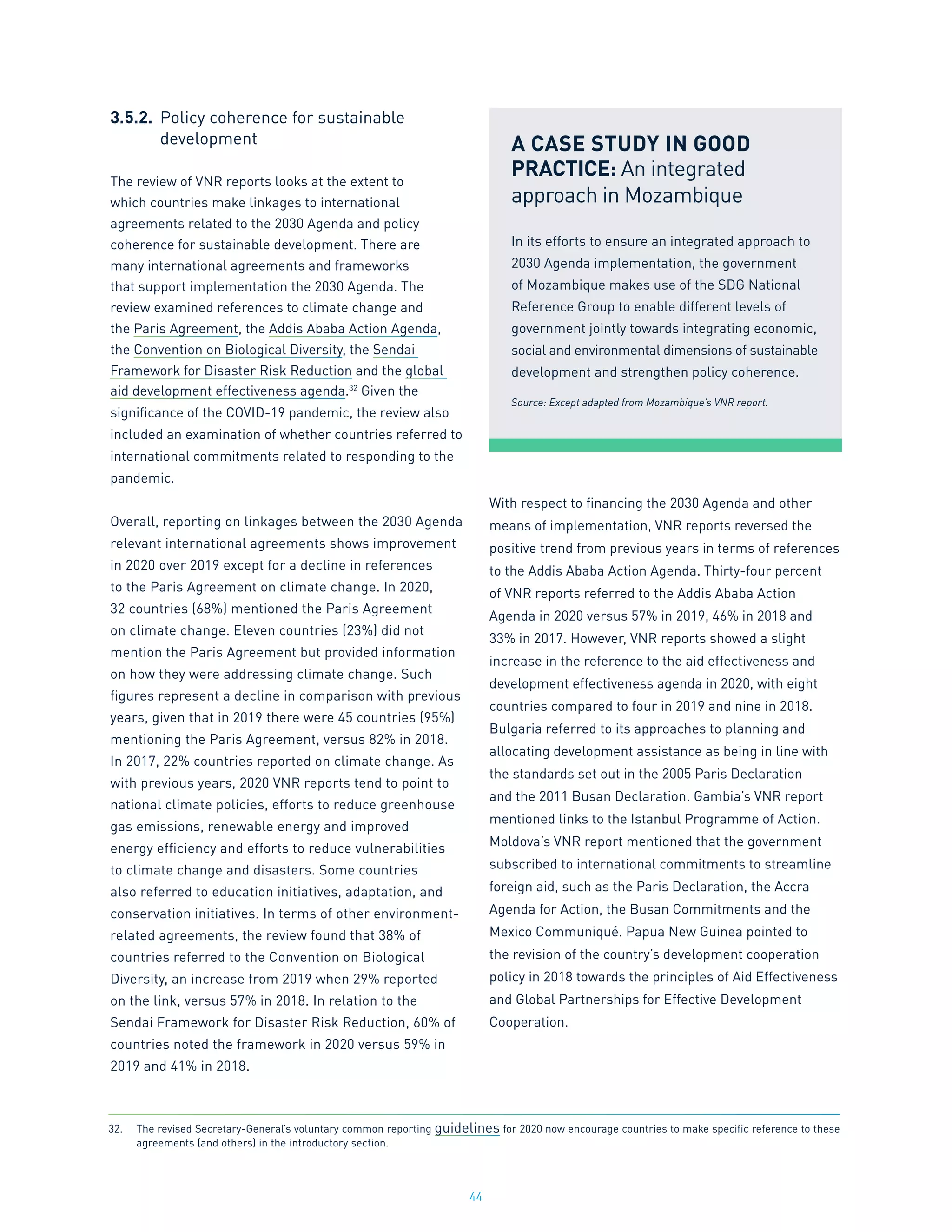




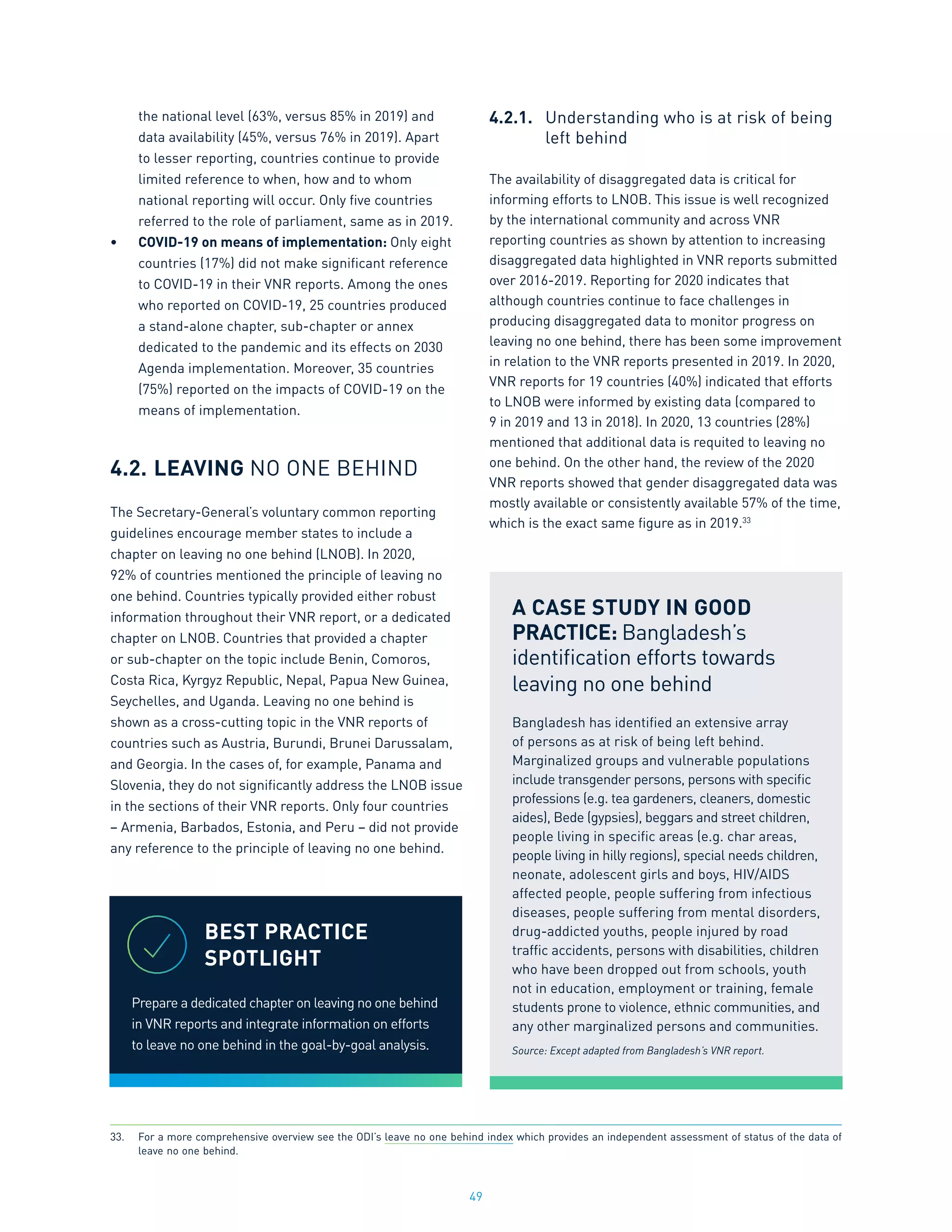

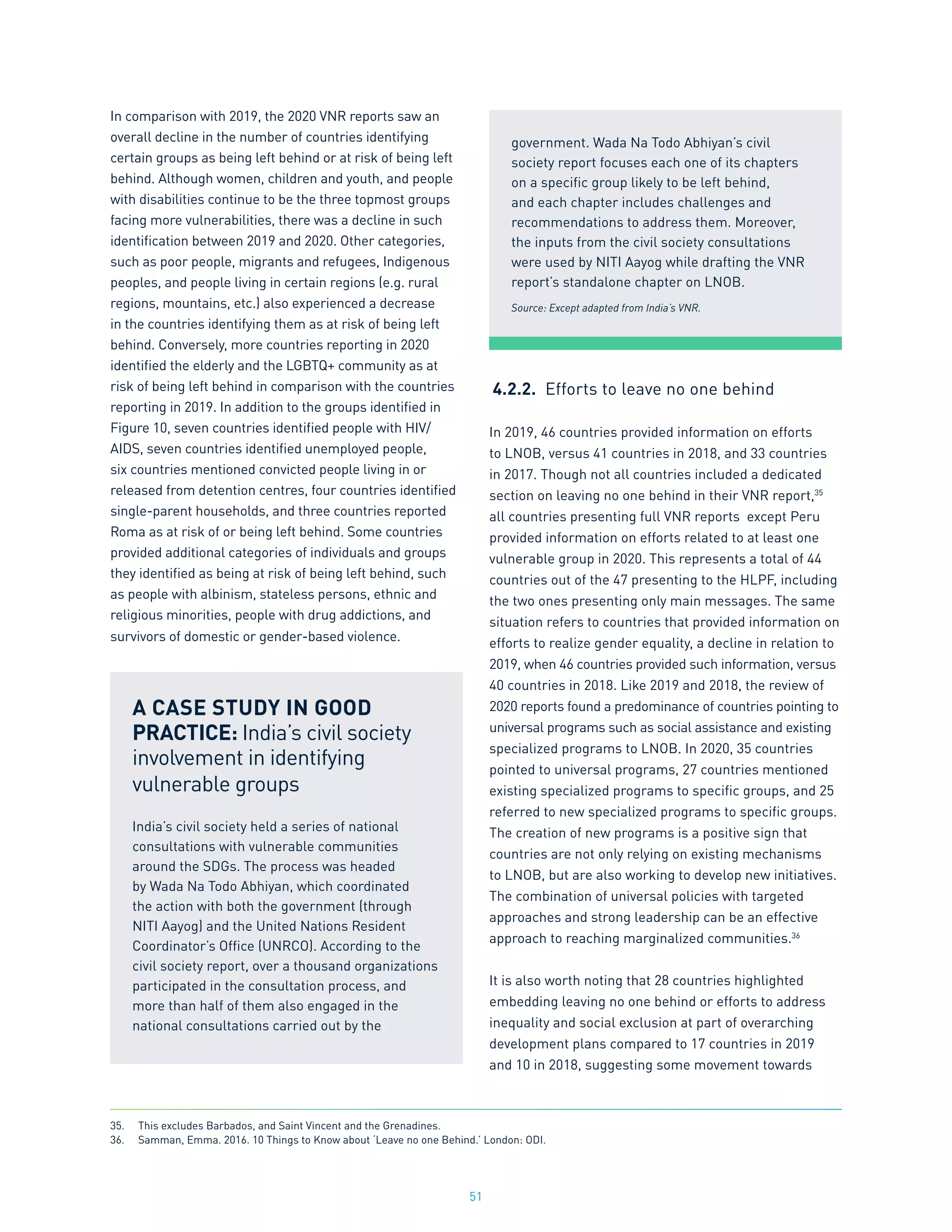
![52
incorporating the principle of leaving no one behind
in the creation of national sustainable development
policies. Moreover, some countries noted either
reference to specific groups as part of national
sustainable development policies or the creation of
national policies related to targeting specific vulnerable
groups such as women, children, migrants and people
with disabilities.
In terms of efforts not to leave specific groups behind,
most countries reporting in 2020 provided information
on actions being carried out. The group mostly covered
by actions described in the 2020 VNR reports refers to
people living in poverty, with 43 countries (92%) describing
approaches to avoid them from being left behind. People
with disabilities, and children are the two following groups,
covered by actions from 40 countries (85%). Twenty-five
countries (53%) referred to efforts to leave no migrants
and refugees behind, and 15 VNR reports (32%) provided
information on efforts towards ethnic groups. Only 9
countries (19%) mentioned actions not to leave Indigenous
Peoples behind. Apart from these, 25 countries (53%)
also referred to other groups as being at risk of being
left behind and particular efforts to address them.
For example, Ecuador has been forming consultative
councils for LGBTQI+ people, and has been providing
assistance to public institutions to incorporate the
gender approach. According to Brunei Darussalam’s VNR
report, since 1955, the country has been distributing old
age pensions to citizens and residents upon reaching 60
years old, which is part of the country’s social safety nets
and is in accordance with legislation towards the elderly.
The 2020 data show a continued emphasis on similar
approaches compared to 2019 and 2018. Still, overall
approaches to LNOB tend to refer to vulnerable groups
more generally, including people living in poverty. As
shown above, more limited references were found
across 2020 VNR reports to efforts related to supporting
Indigenous Peoples, ethnic groups, and migrants and
refugees. LGBTQI+ communities and people living in rural
areas also received limited mention in the VNR reports.
Nevertheless, where such less mentioned groups were
referenced, countries tended to point to similar strategies
for these groups as outlined for the most frequently
mentioned ones. Such strategies and approaches include
social protection, policies (national and sectoral), legal
instruments, cash transfers, employment or training
programs, institutions dedicated to specific groups, and
improved access to health of education. In addition to
these approaches, a limited number of countries also
reported awareness-raising related to hate crimes and
discrimination against the LGBTQI+ community (for
example, in the case of Georgia), training programs to
rehabilitate imprisoned persons (such as in the case
of Trinidad and Tobago), and improvement of access to
treatment for people suffering with drug addiction (for
example, in the case of Bulgaria). No specific programs
or efforts were reported at the international level.
A CASE STUDY IN GOOD
PRACTICE: Uzbekistan’s efforts
towards gender equality
Despite the lack of data disaggregated by gender,
Uzbekistan’s VNR report highlights the country’s
recent efforts to promote gender equality and
considerable shifts in achieving it. In 2019,
the Parliament adopted the “Law to Ensure
Equal Rights and Opportunities for Men and
Women” and the “Law to Protect Women from
Discrimination and Violence.” The proportion
of women in leadership positions grew by
5.3 percentage points from 27.7% in 2015 to
33% in 2019. Women’s employment is one of
priority areas in Uzbekistan’s socioeconomic
development, and the VNR report highlights many
initiatives to increase it. The proportion of women
in the total workforce is currently 45%. The VNR
report is also cognizant of areas where further
progress in needed.
Source: Except adapted from Uzbekistan’s VNR.
A CASE STUDY IN GOOD
PRACTICE: Niger’s strategy to
leaving no one behind
Niger’s strategy of “les Nigériens Nourrissent
les Nigériens” [Nigériens feed Nigériens] and the
country’s policy of free health care and education
up to the age of 16 are good practices to leaving
no one behind. Together they support multiple
SDGs and have a multiplier effect on achieving a
sustainable development that is inclusive.
Source: Except adapted from Niger’s VNR.](https://image.slidesharecdn.com/progressingsdgs2020full-reportfinal-1-210407175018/75/Progressing-sd-gs_2020_full-report_final-1-52-2048.jpg)
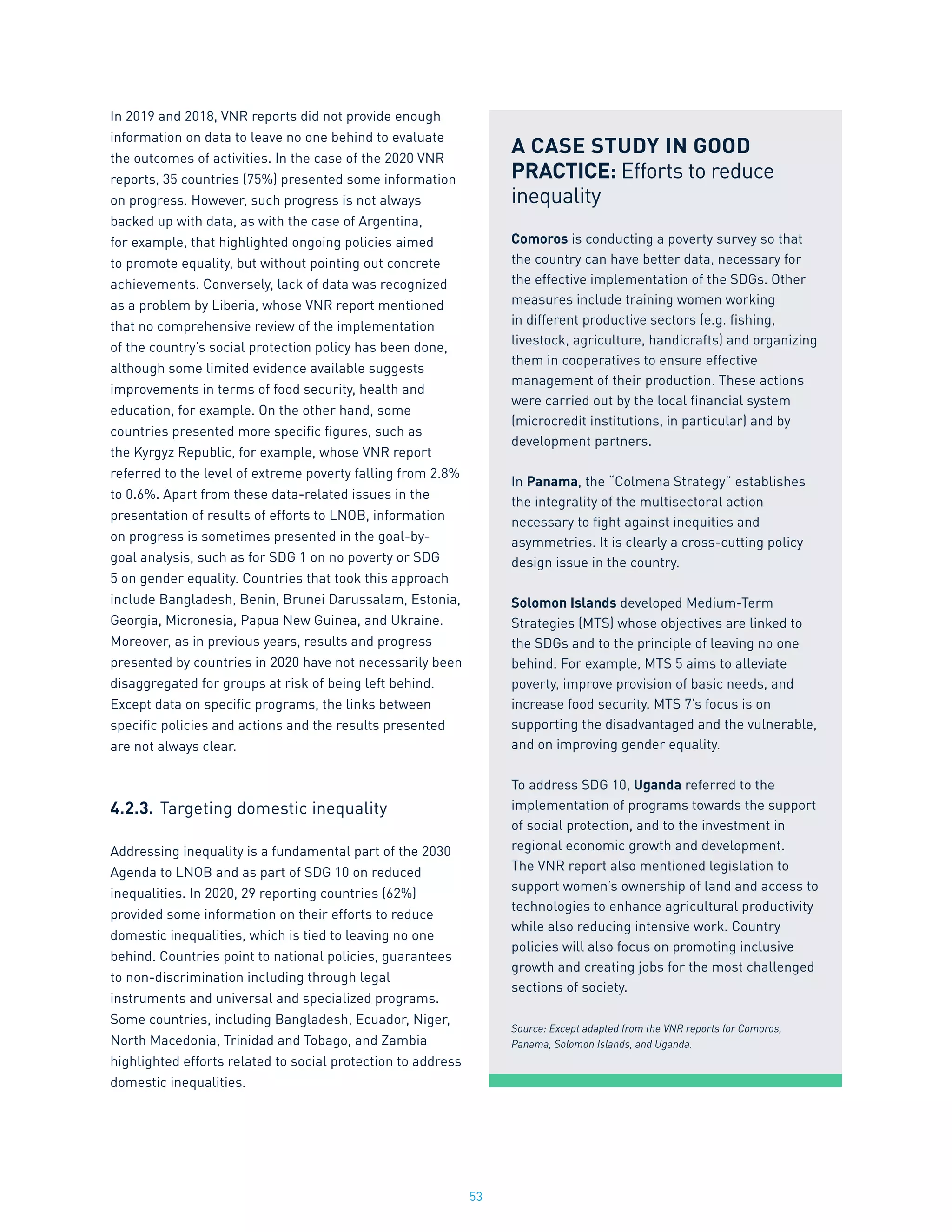

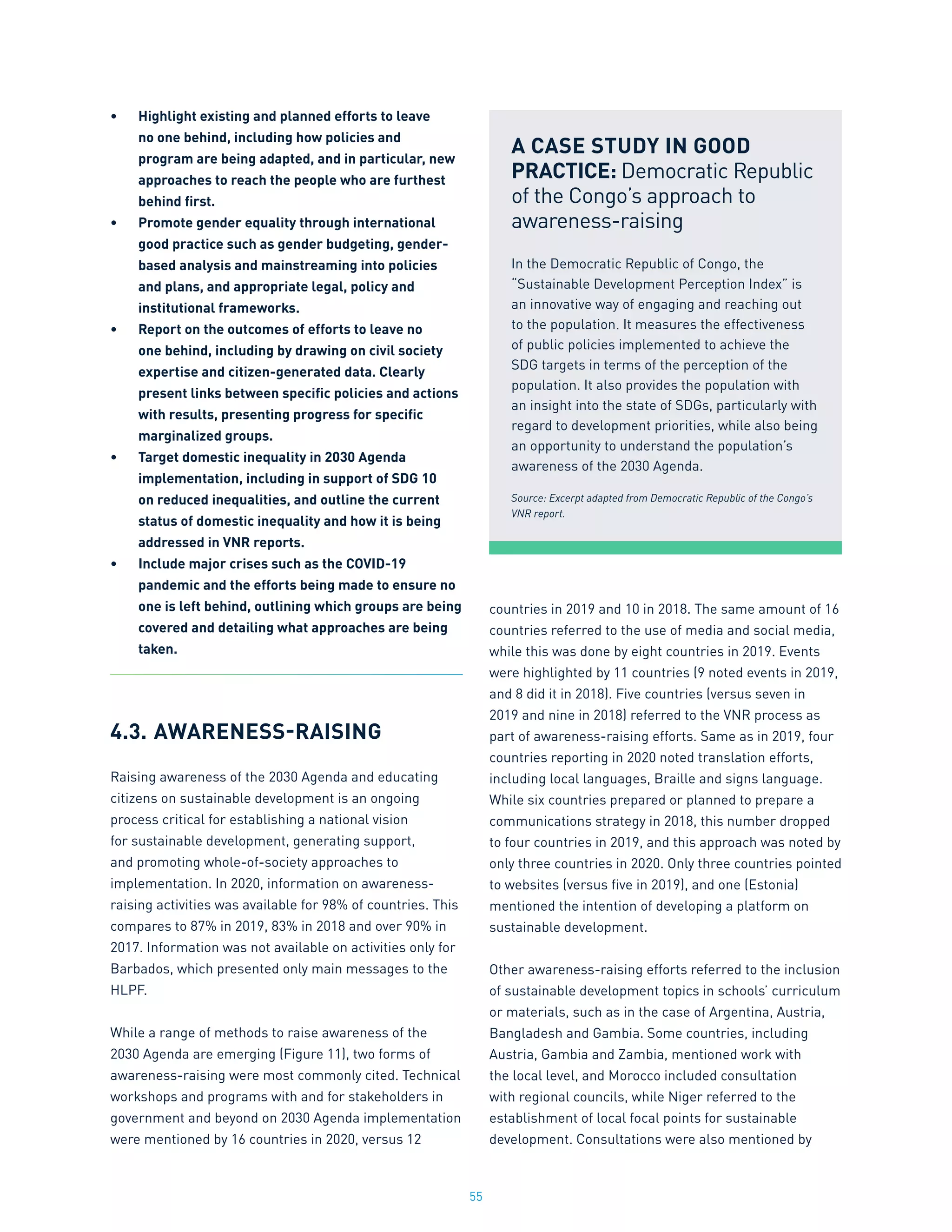
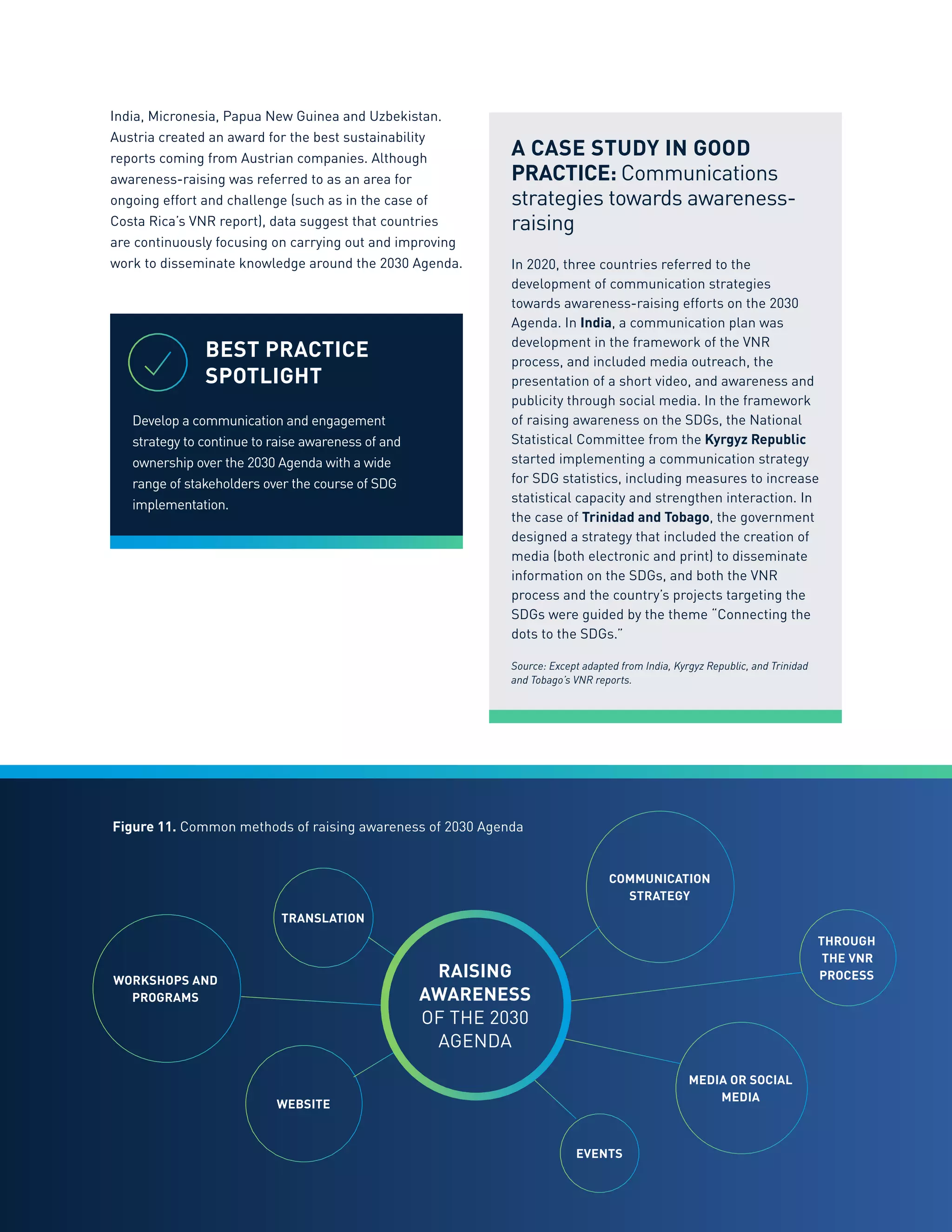


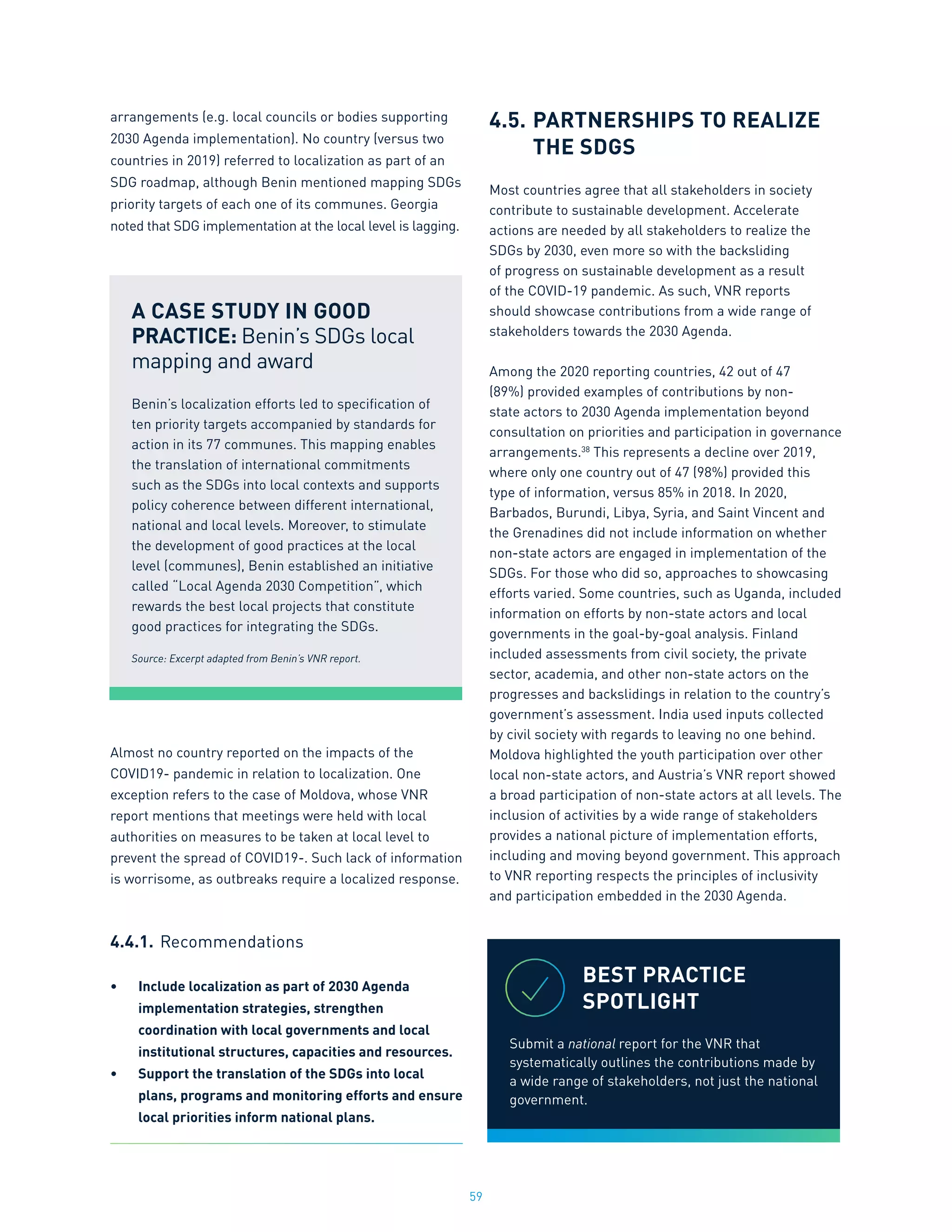

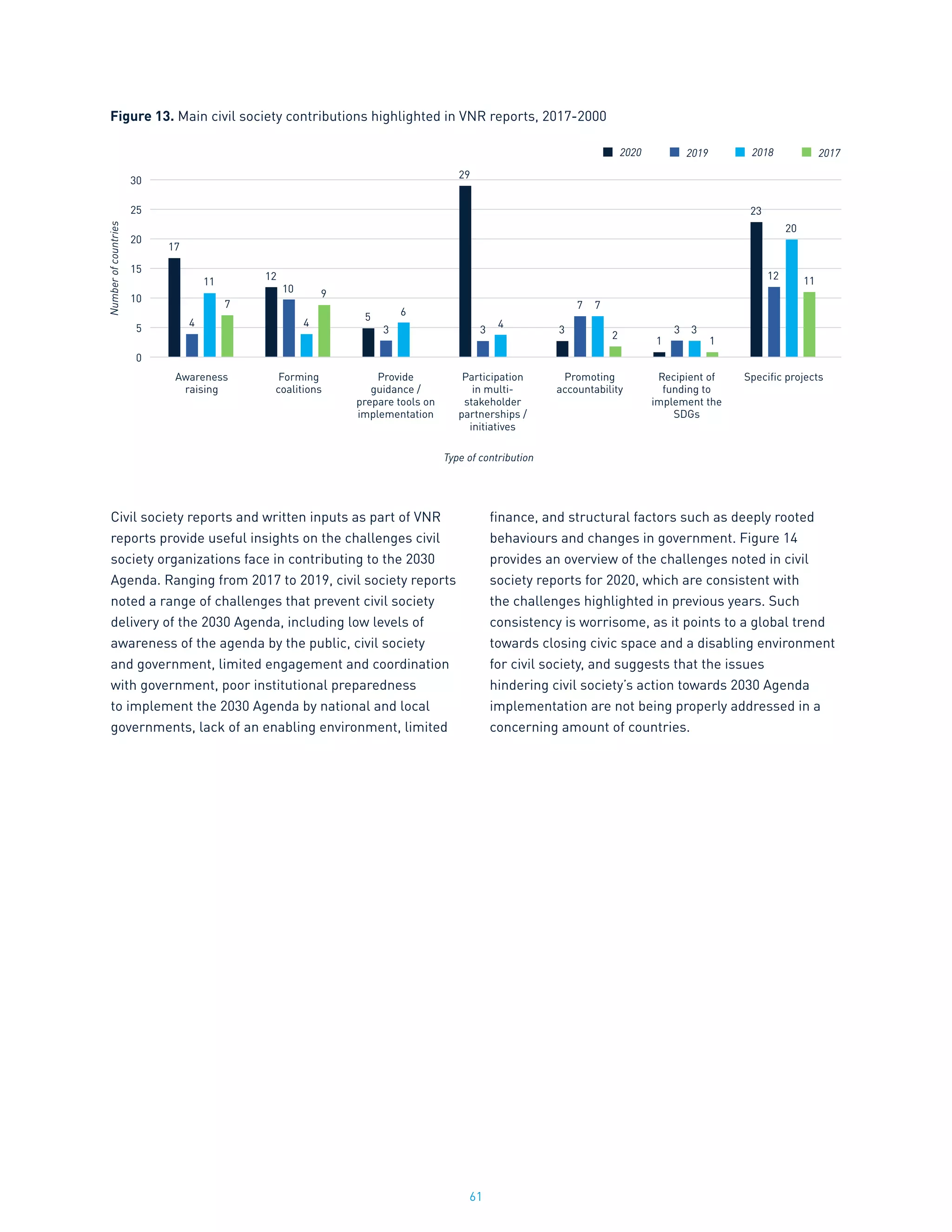




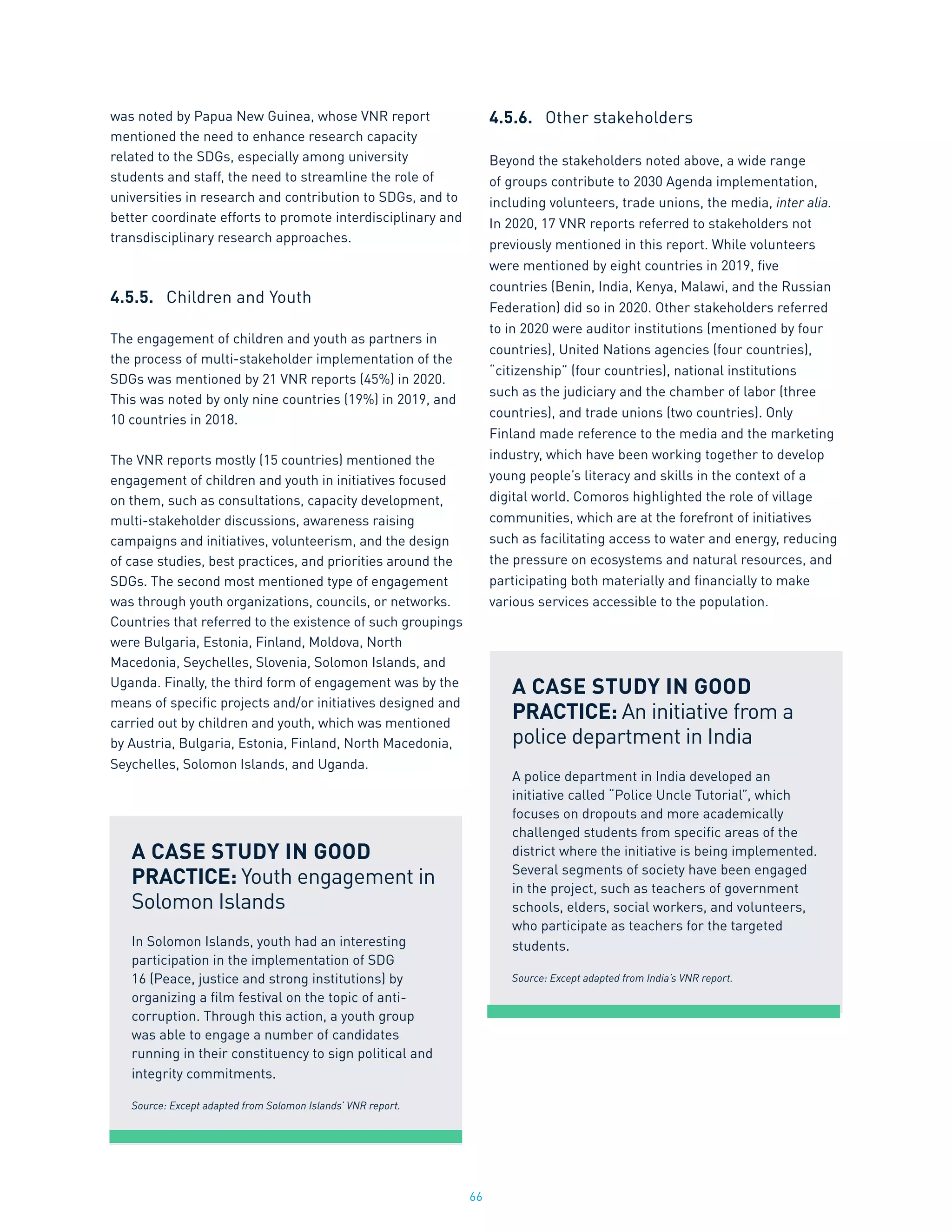
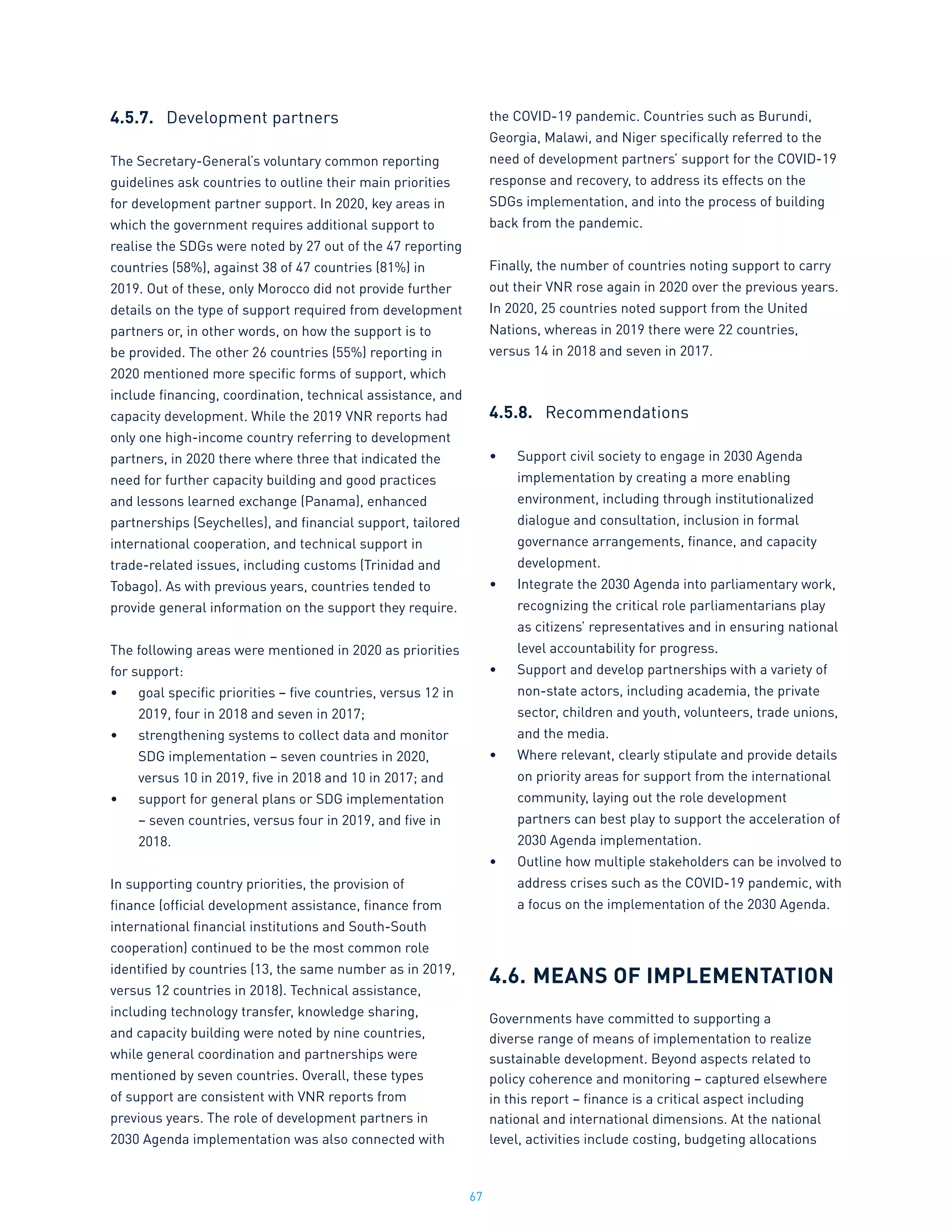
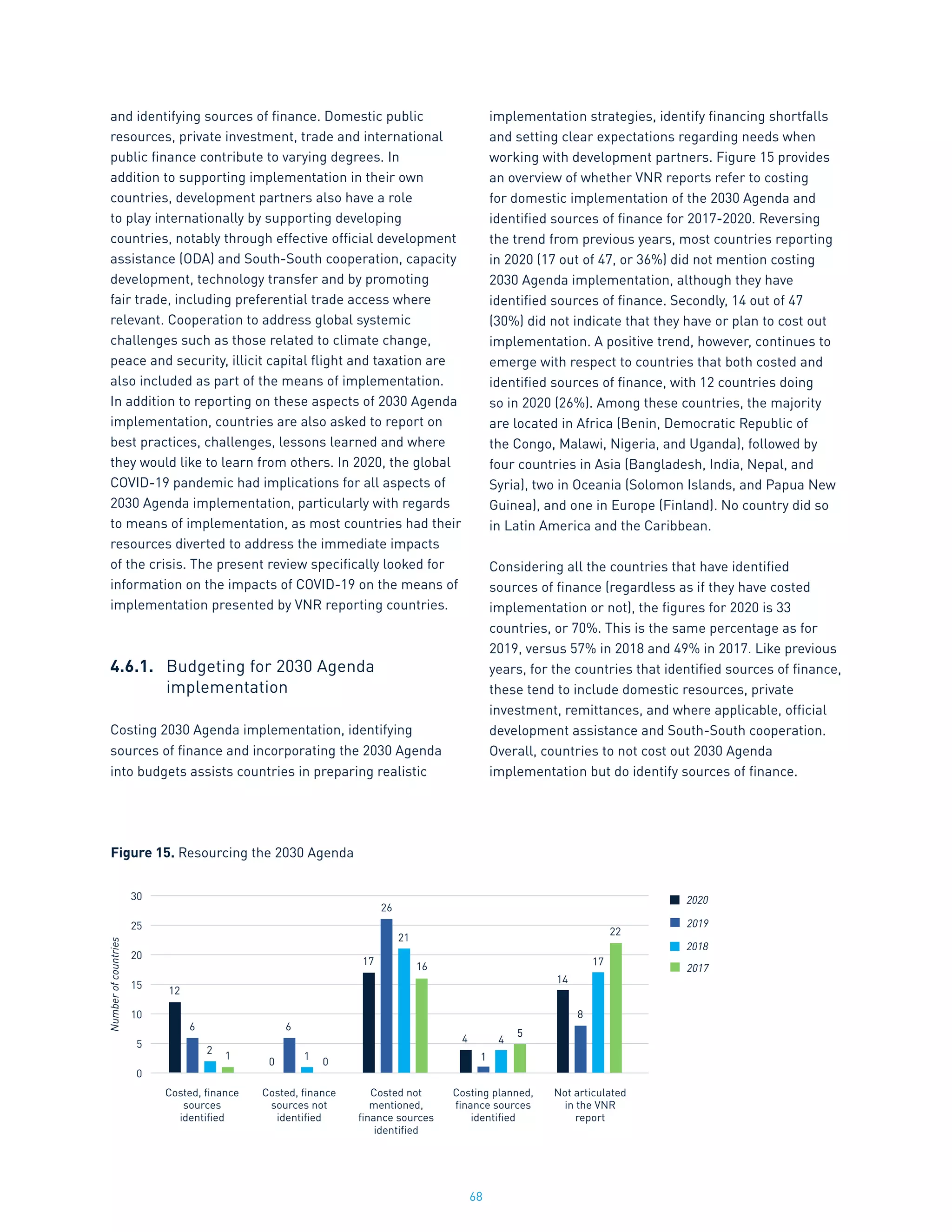
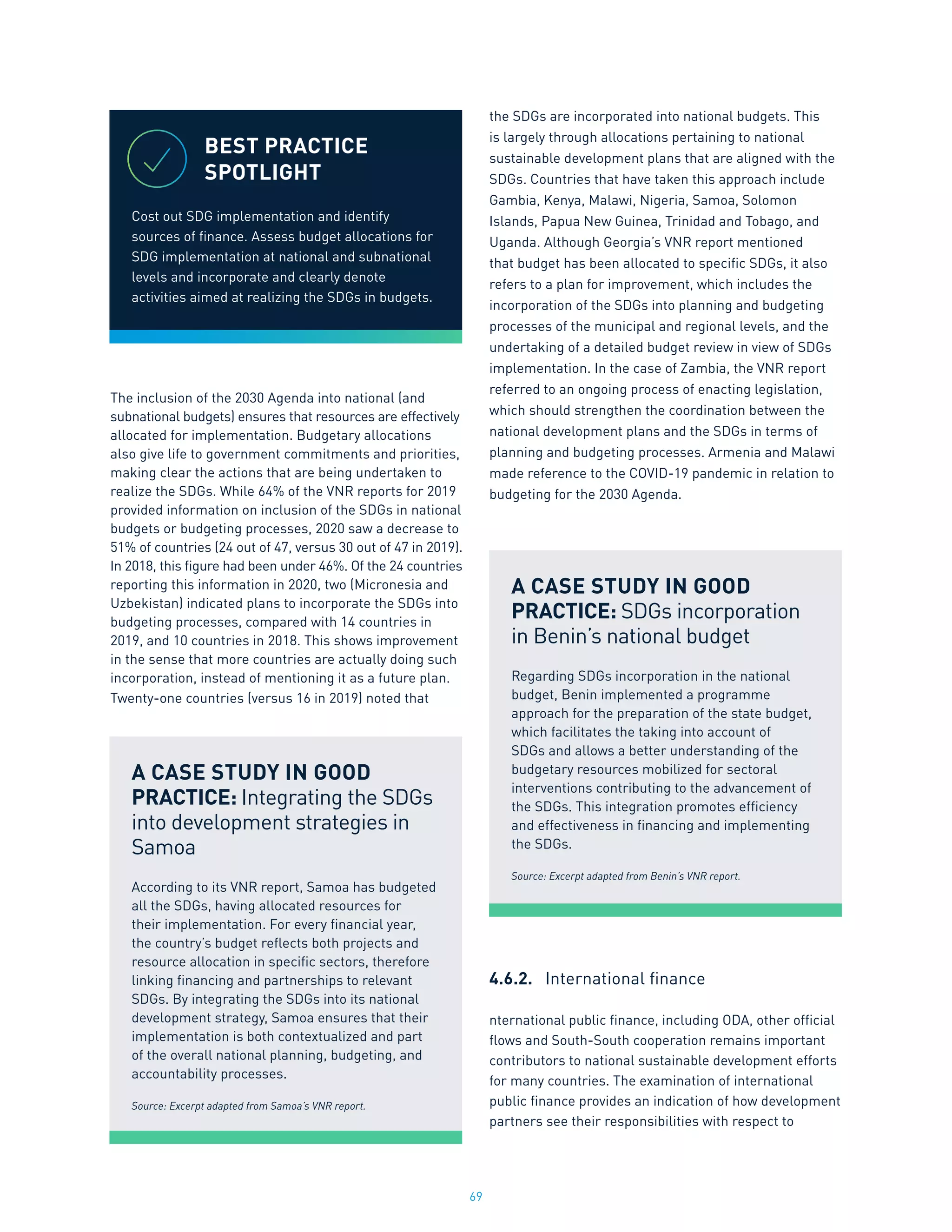

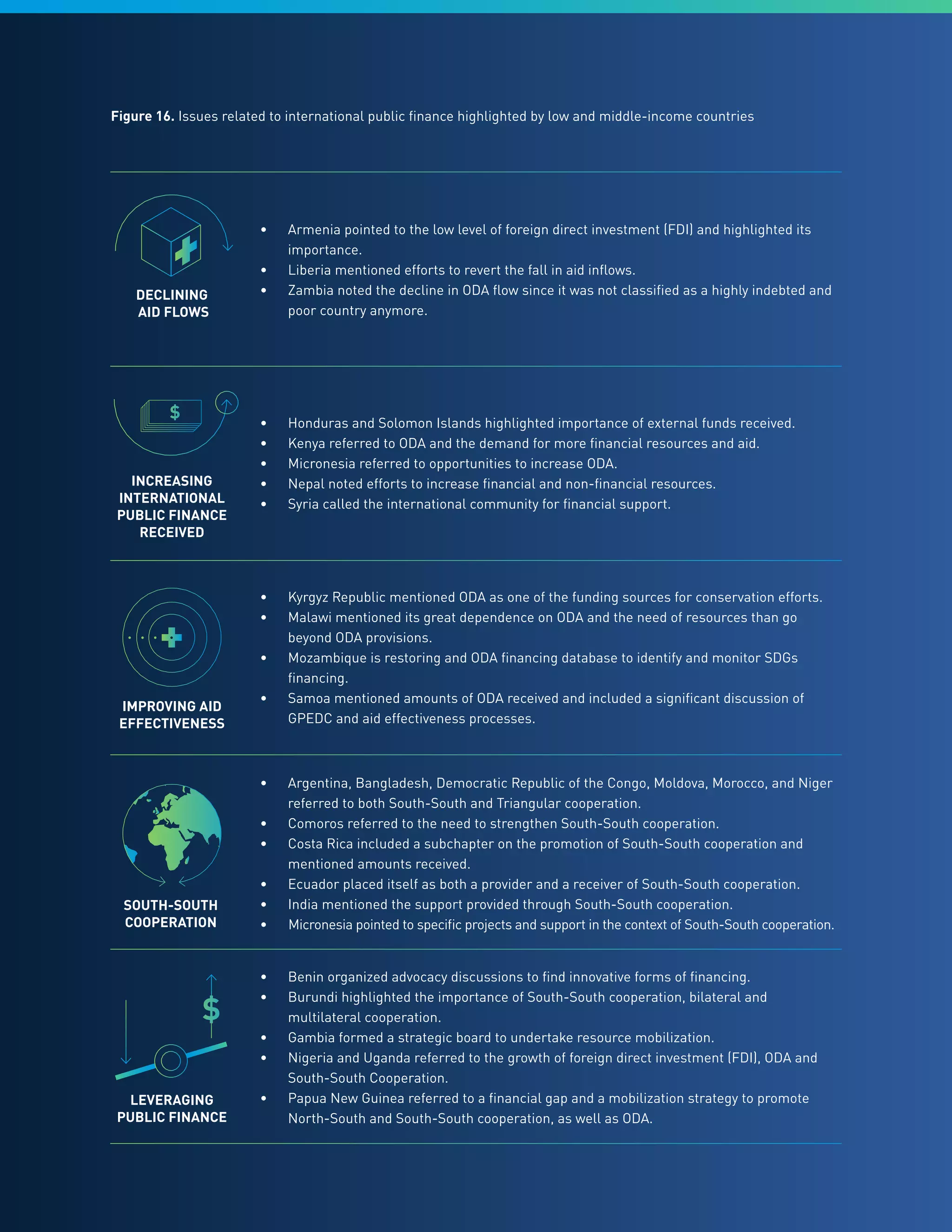
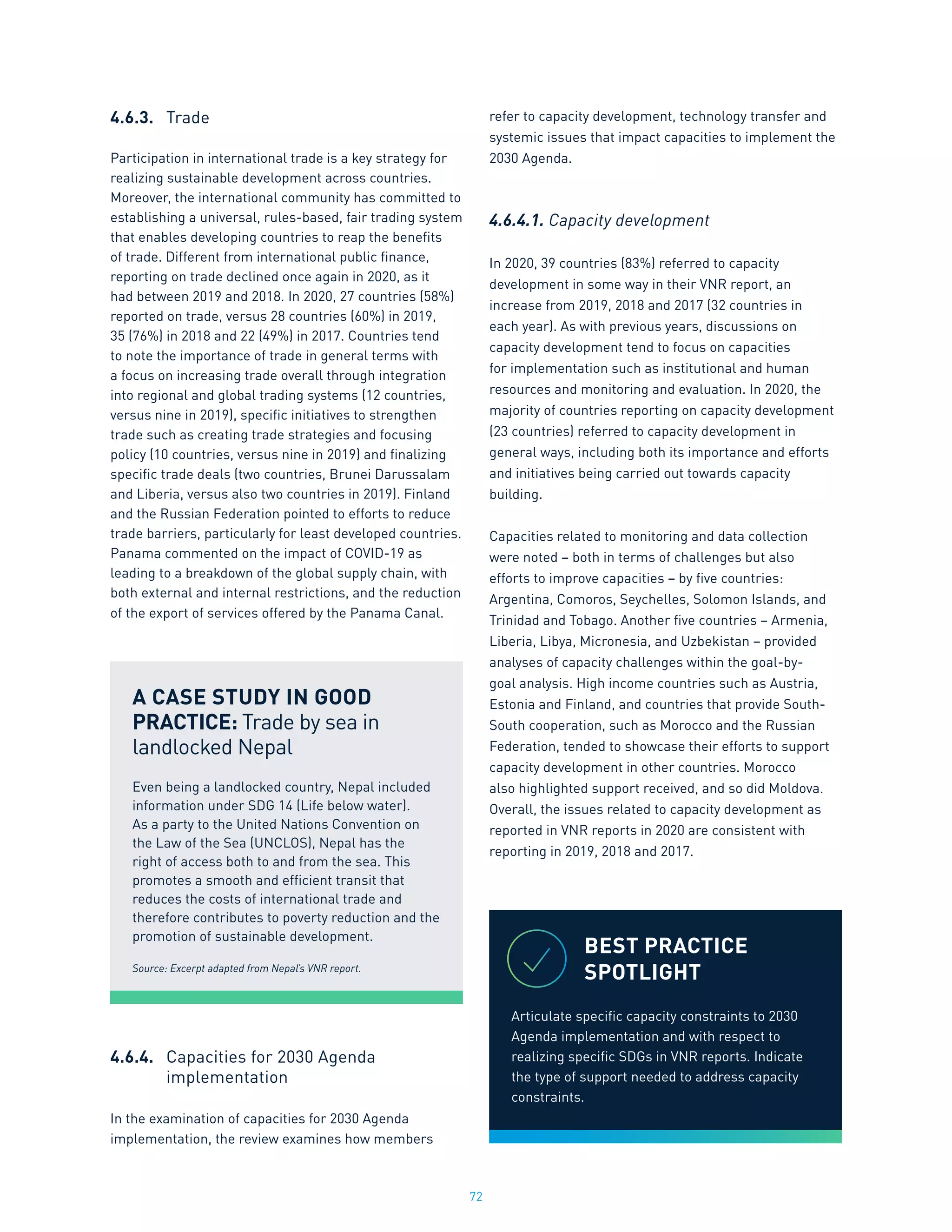
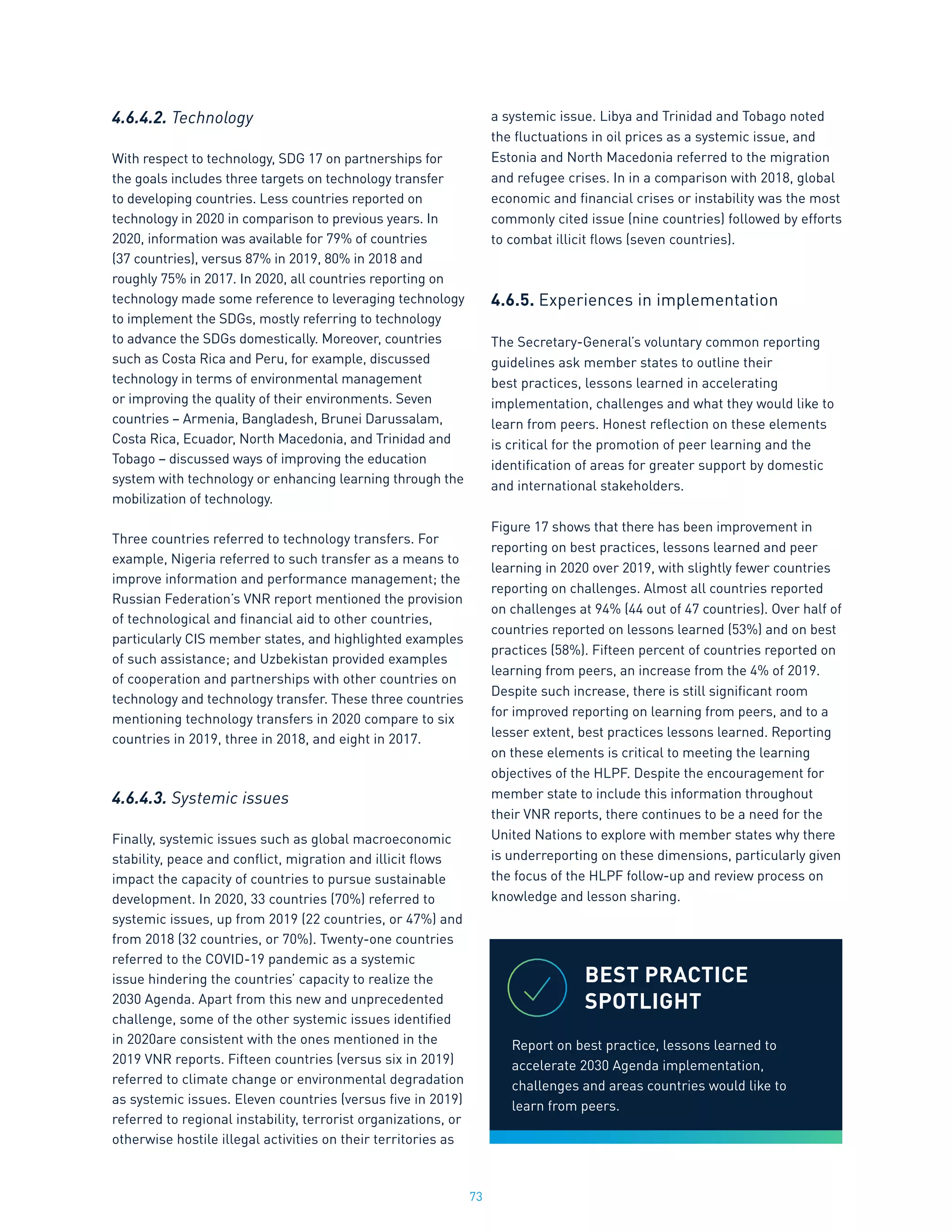
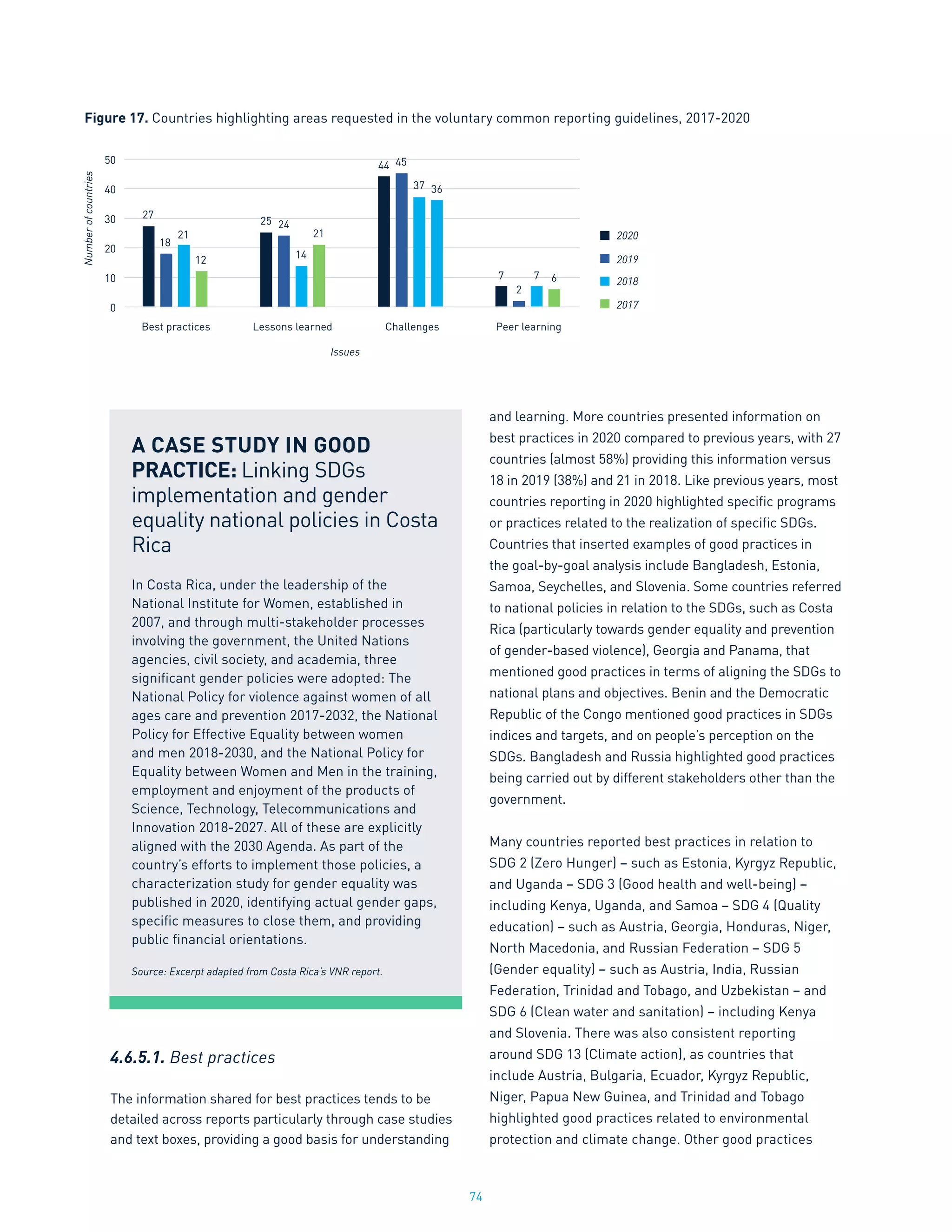

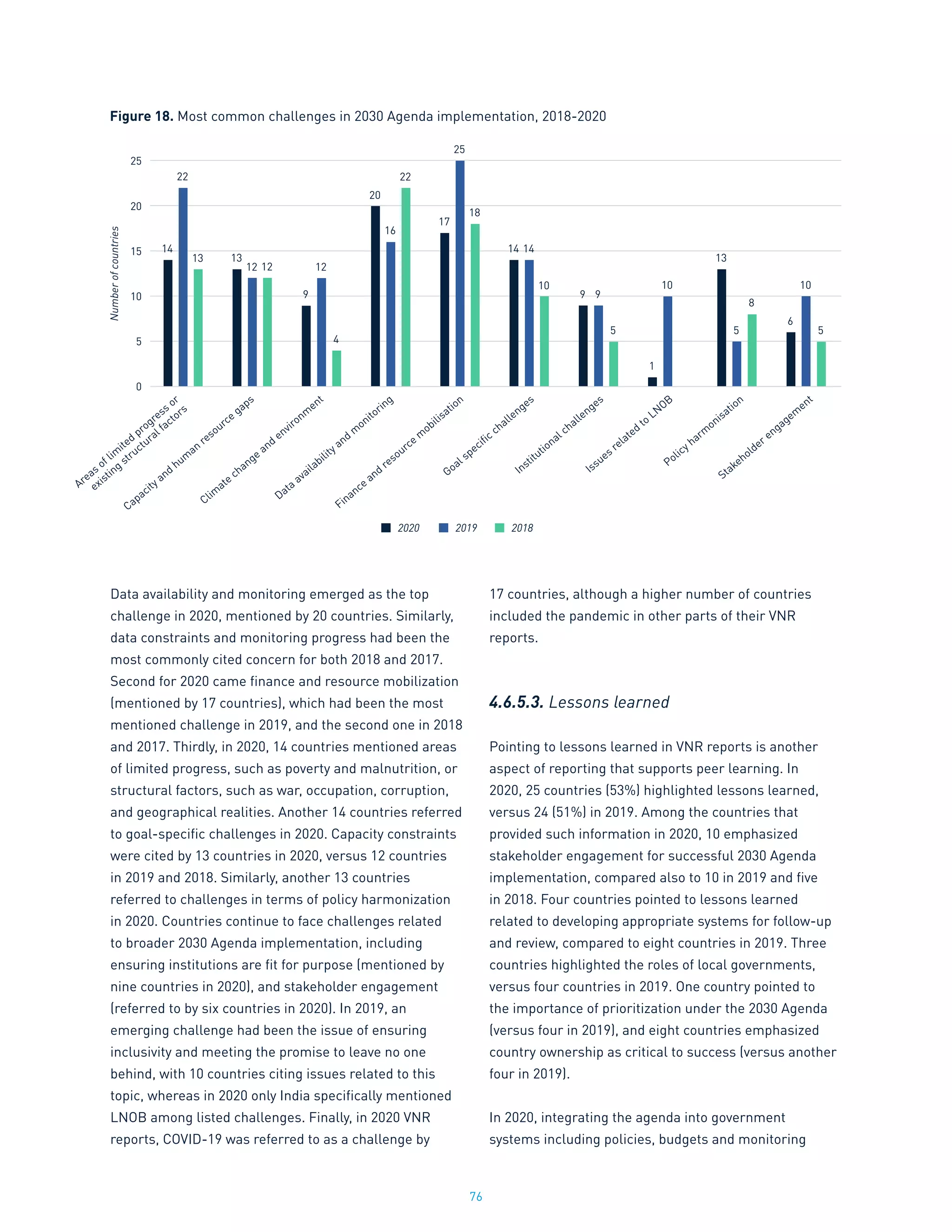
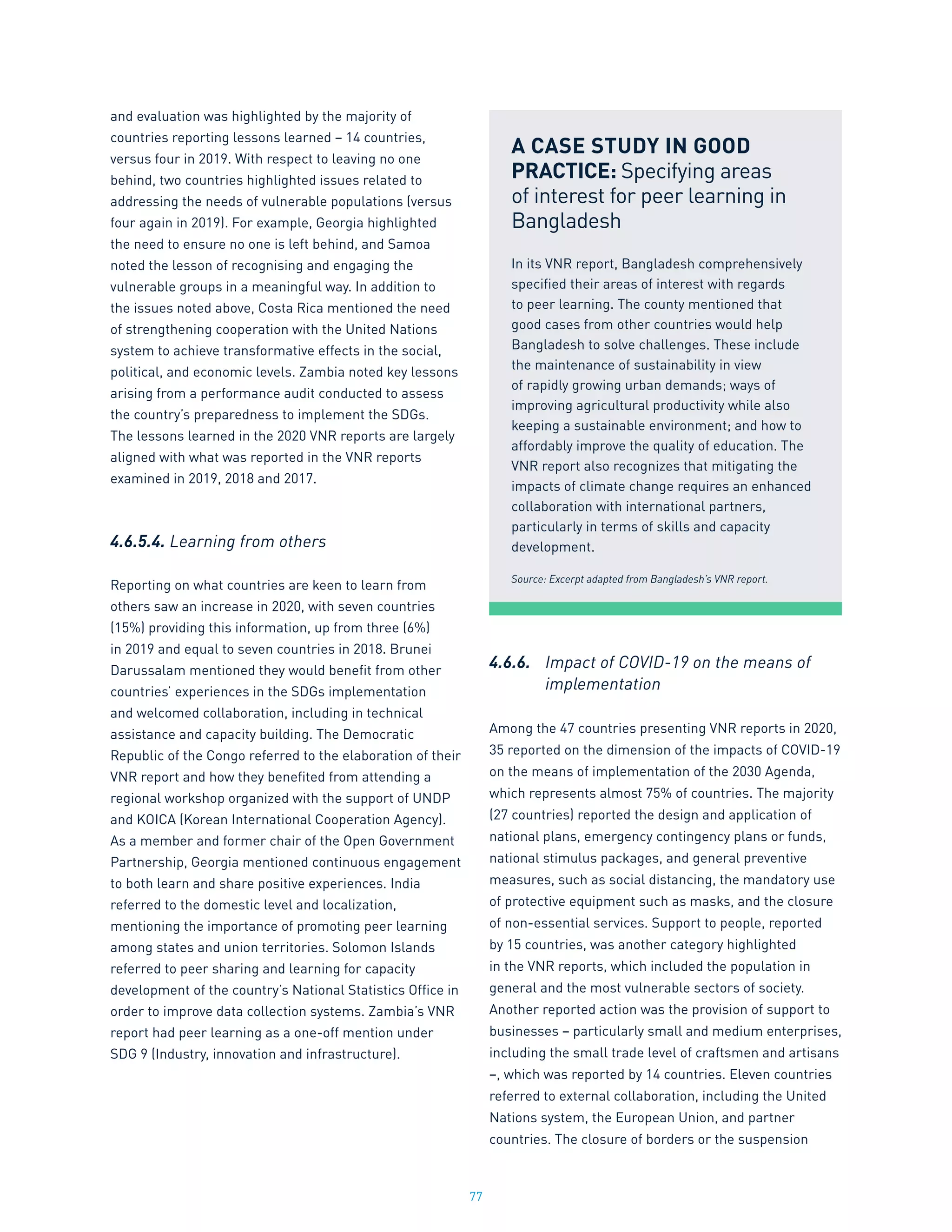
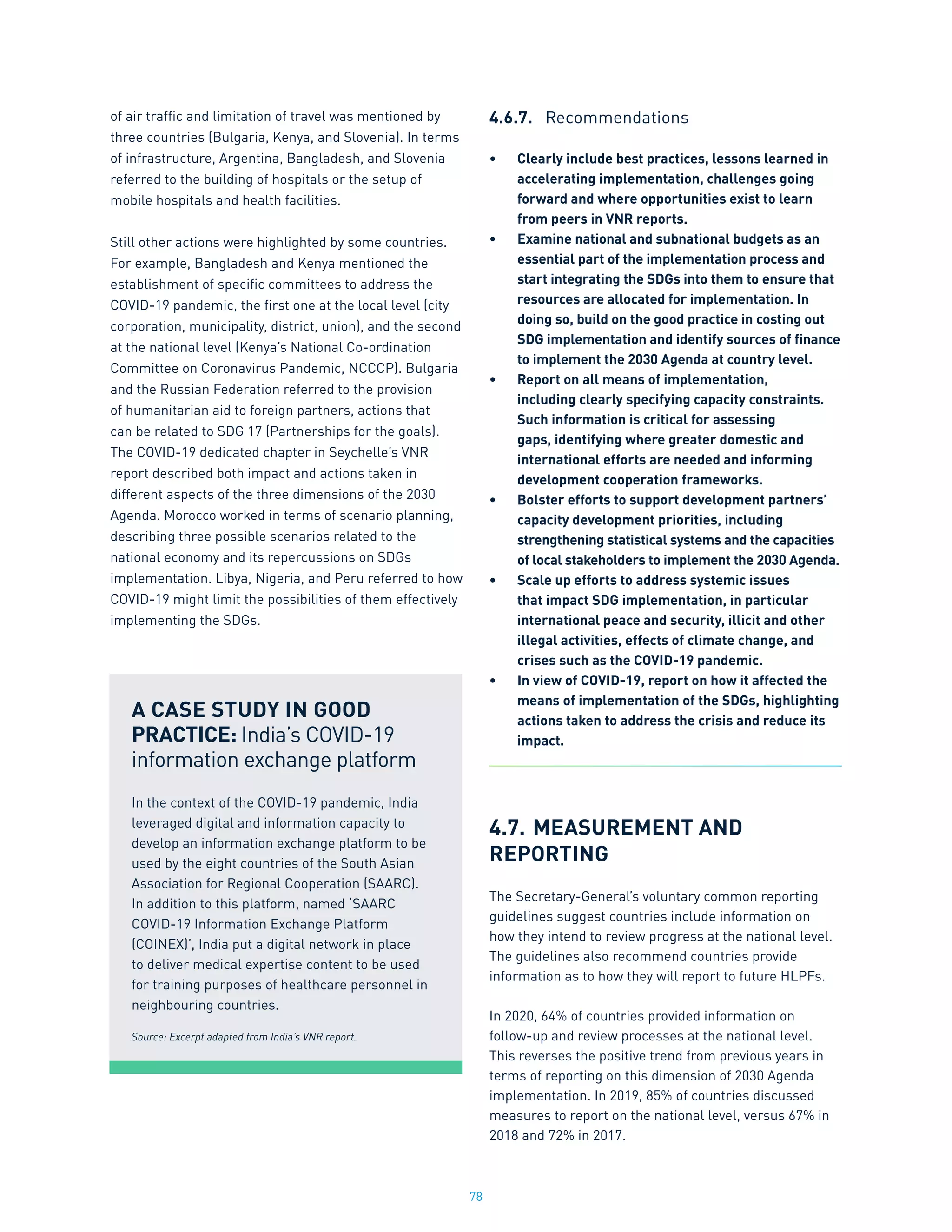


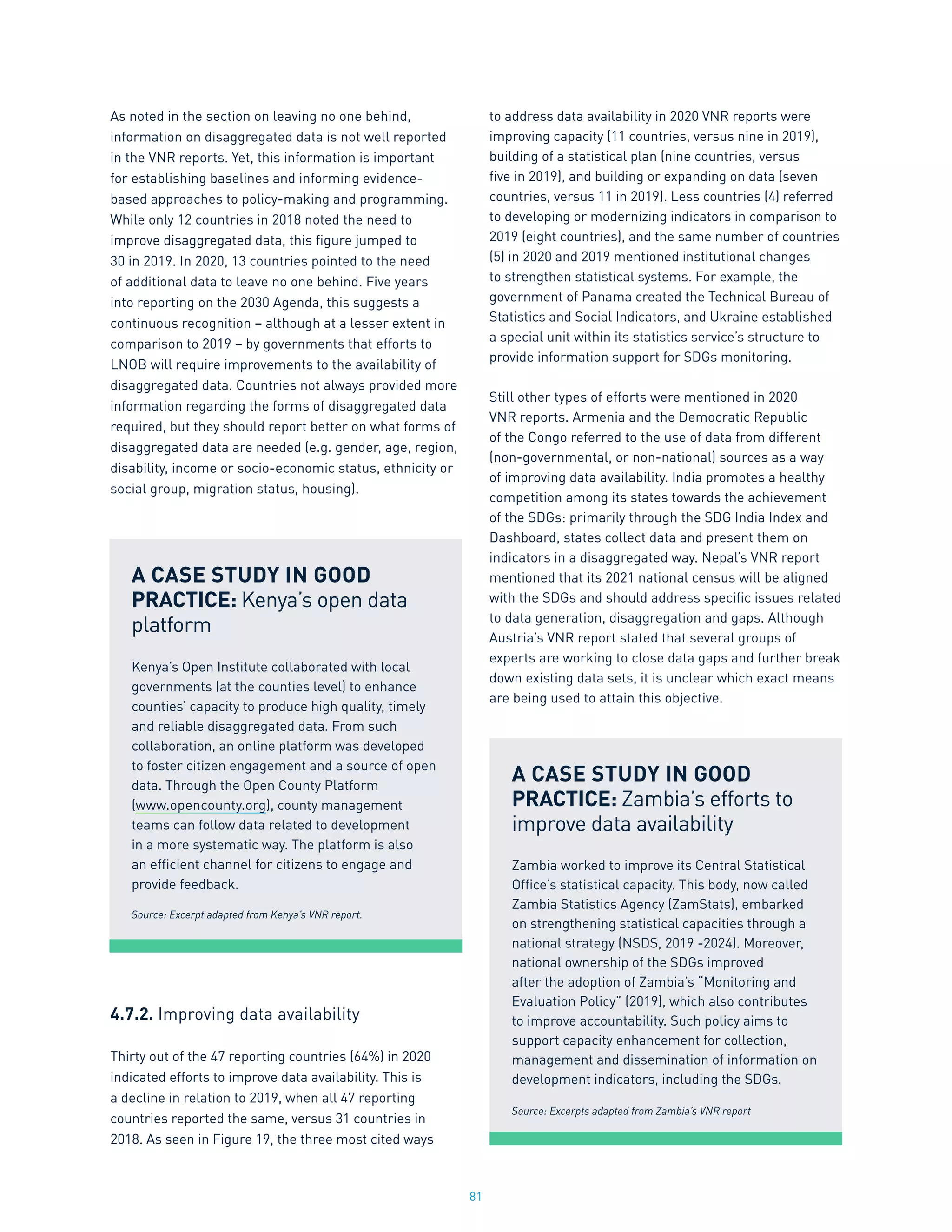
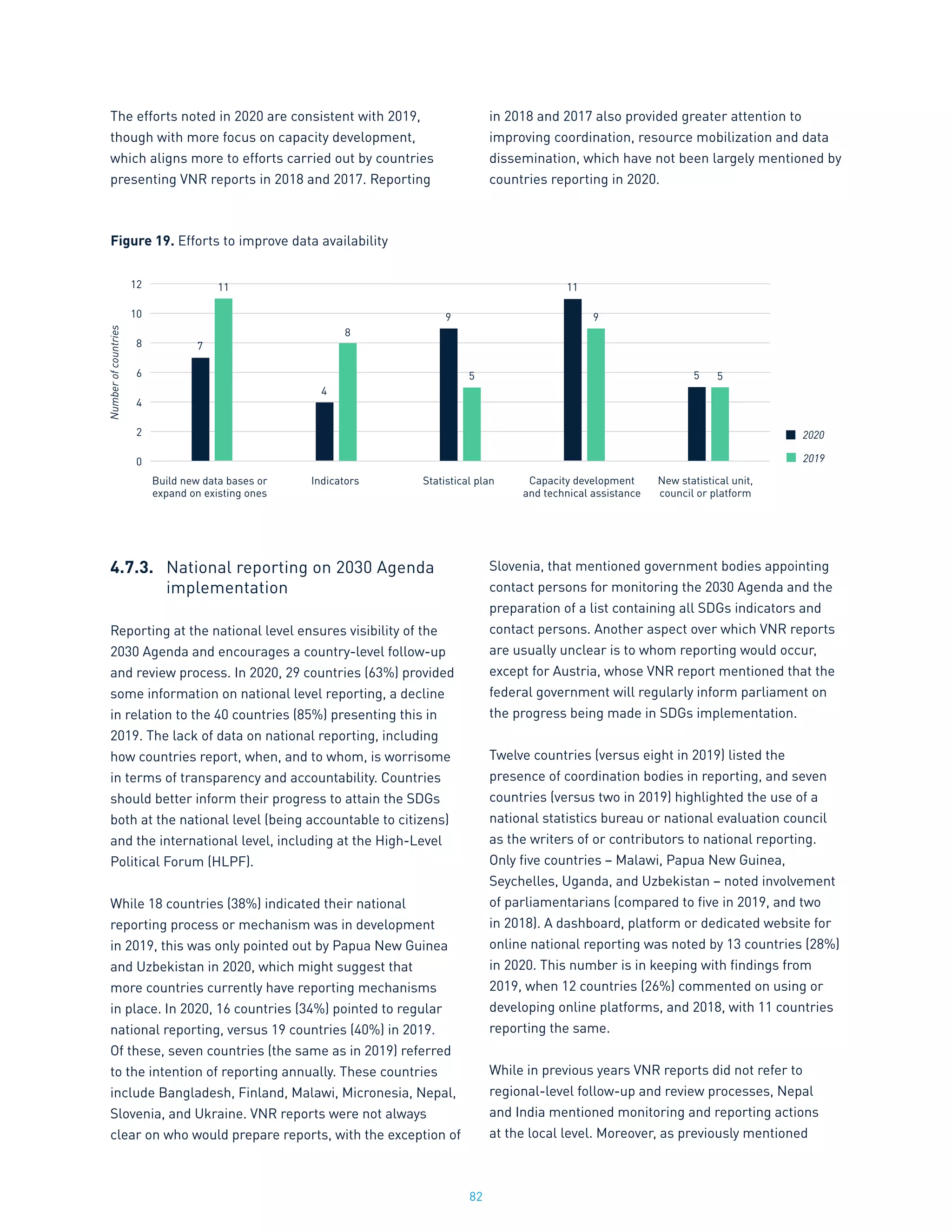
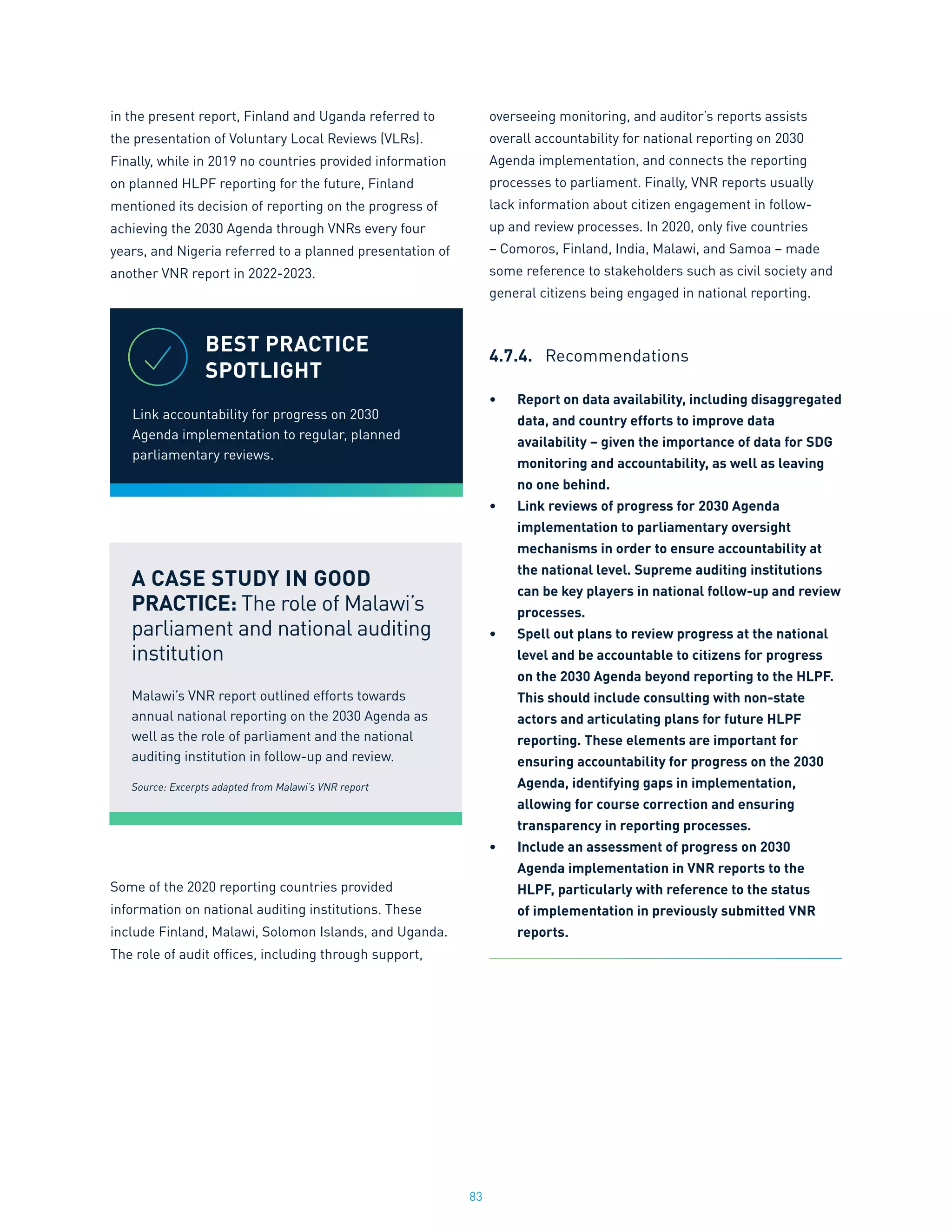
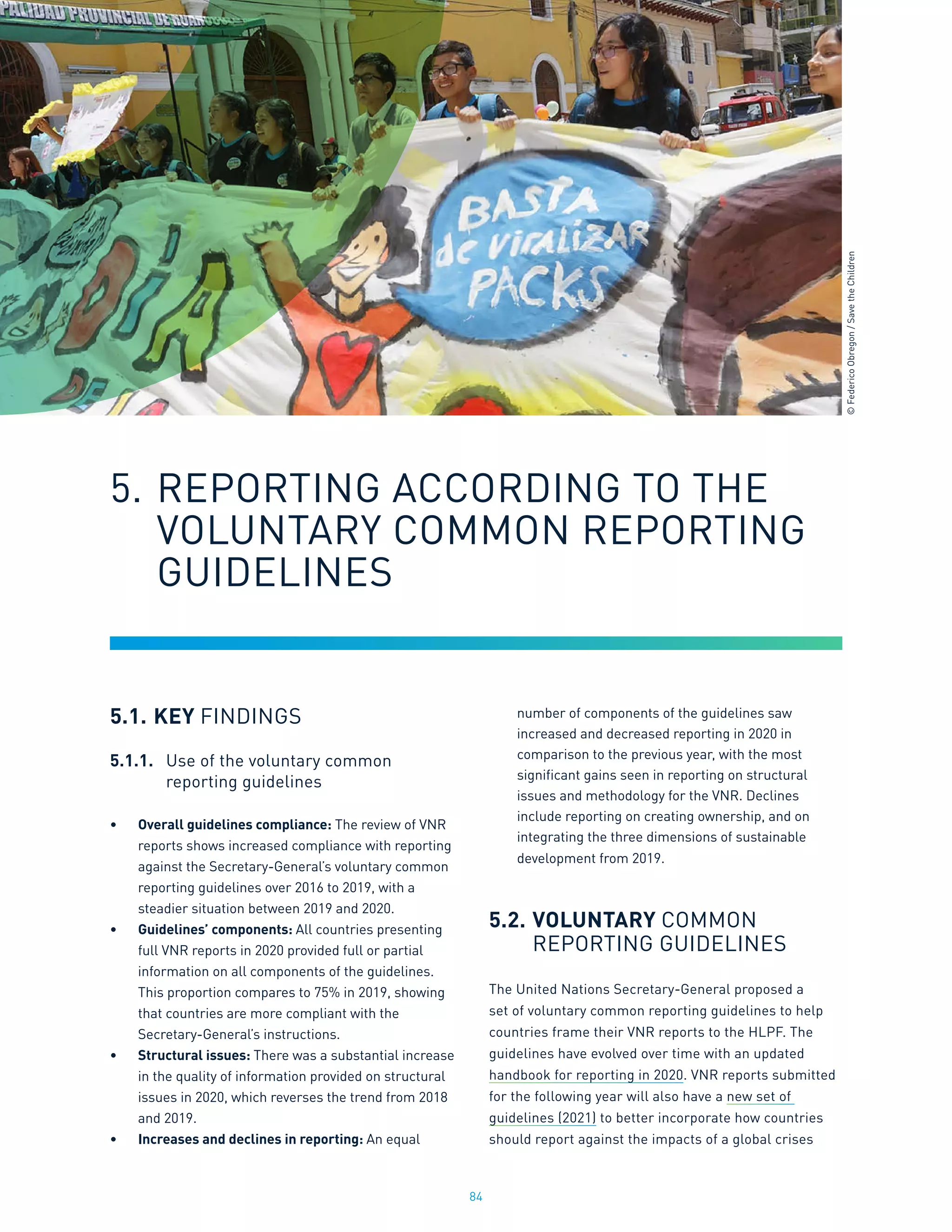
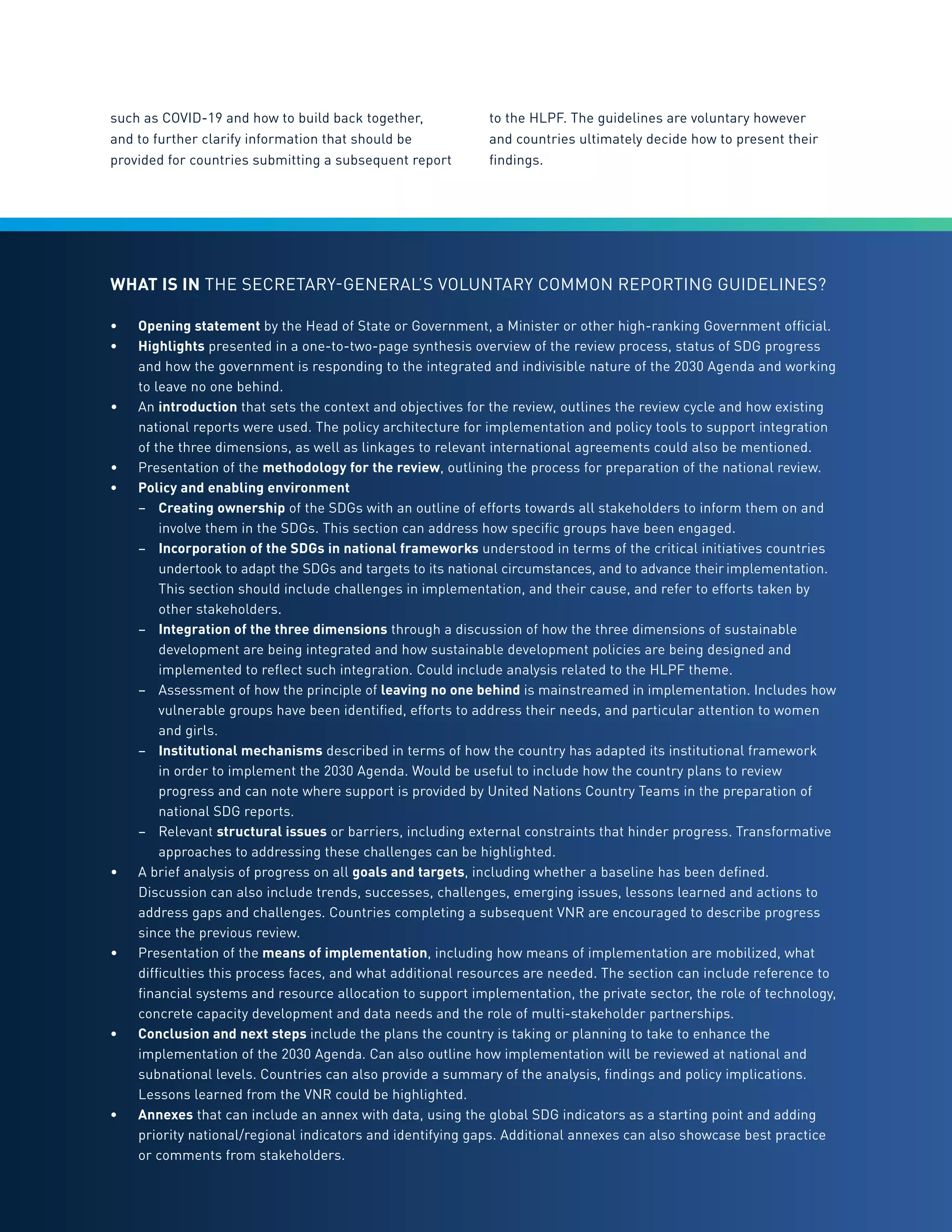

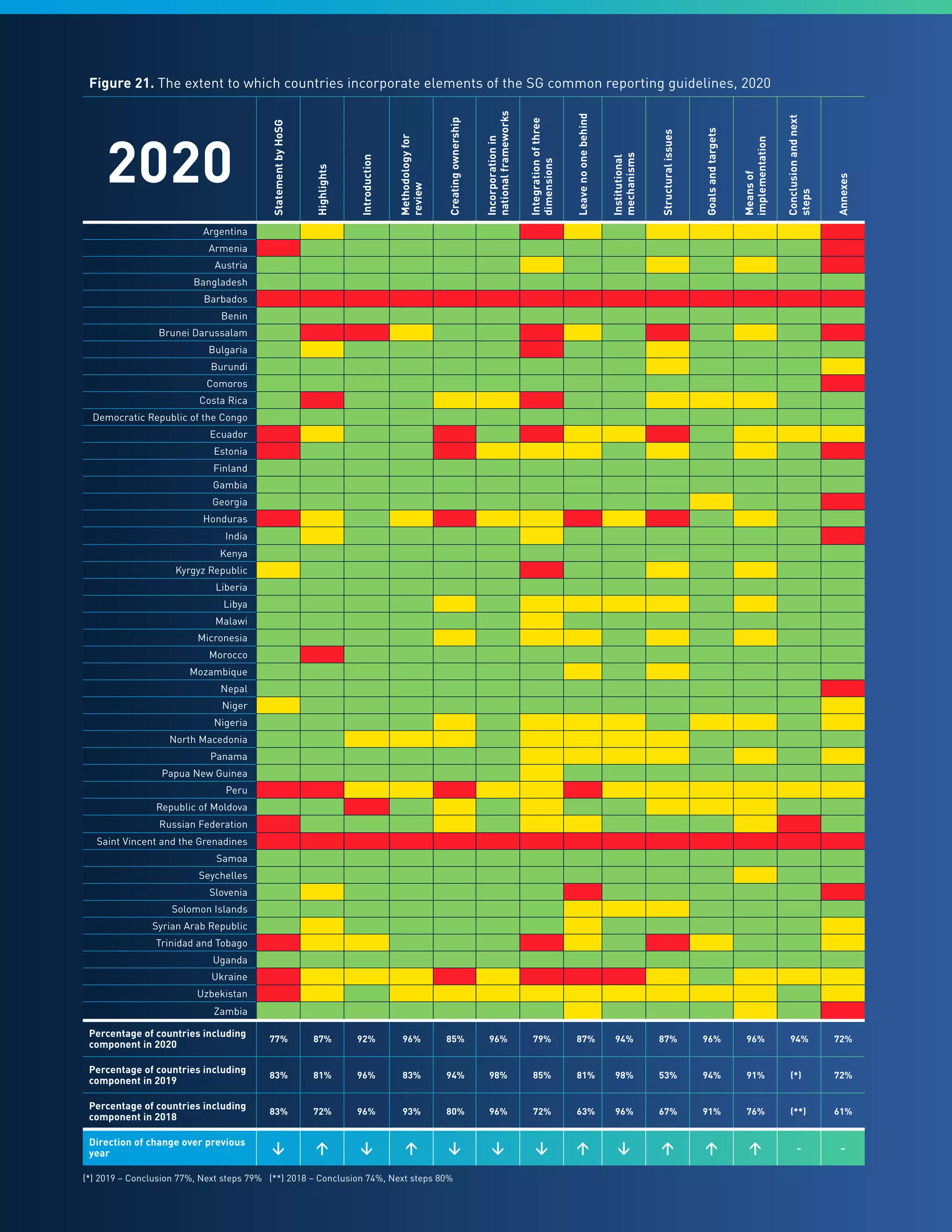







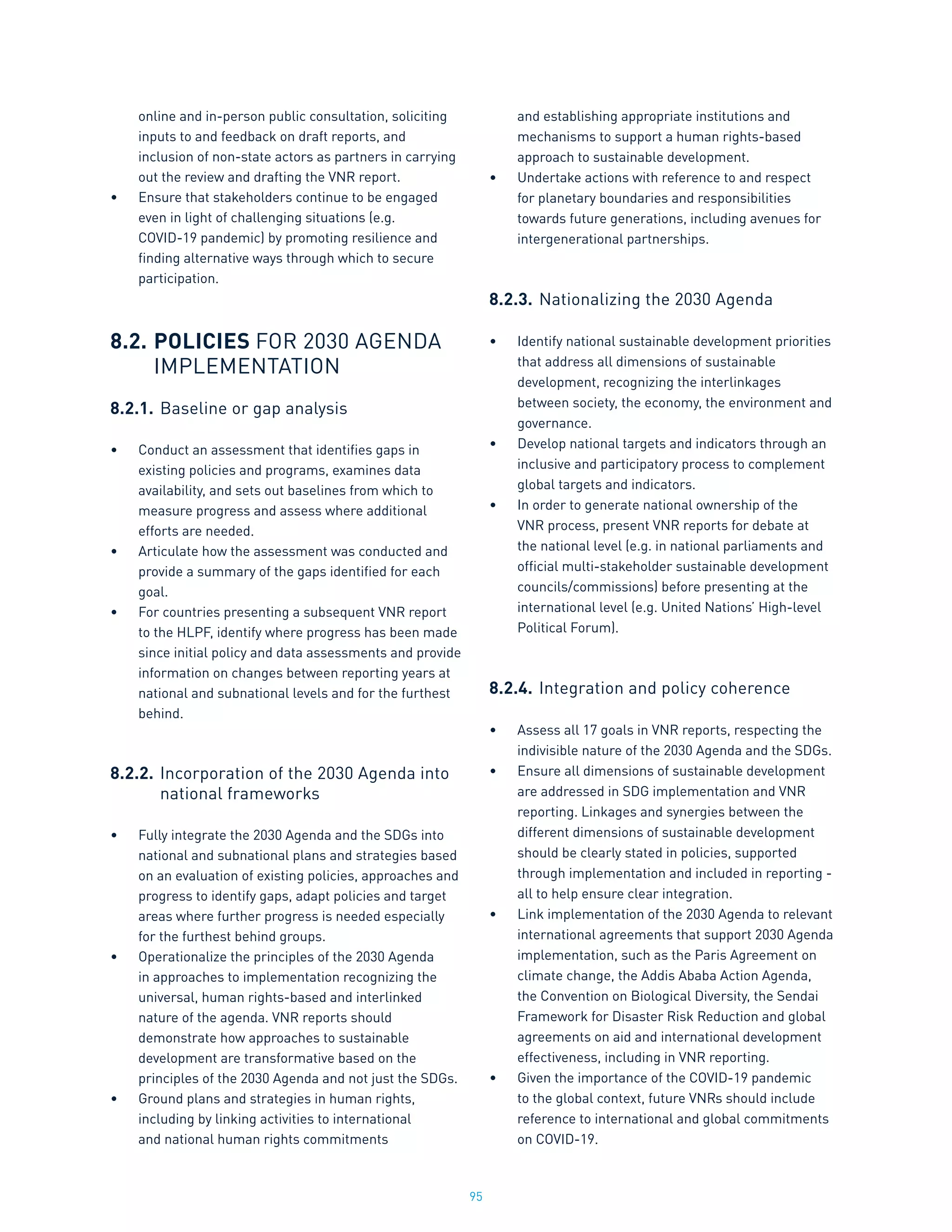

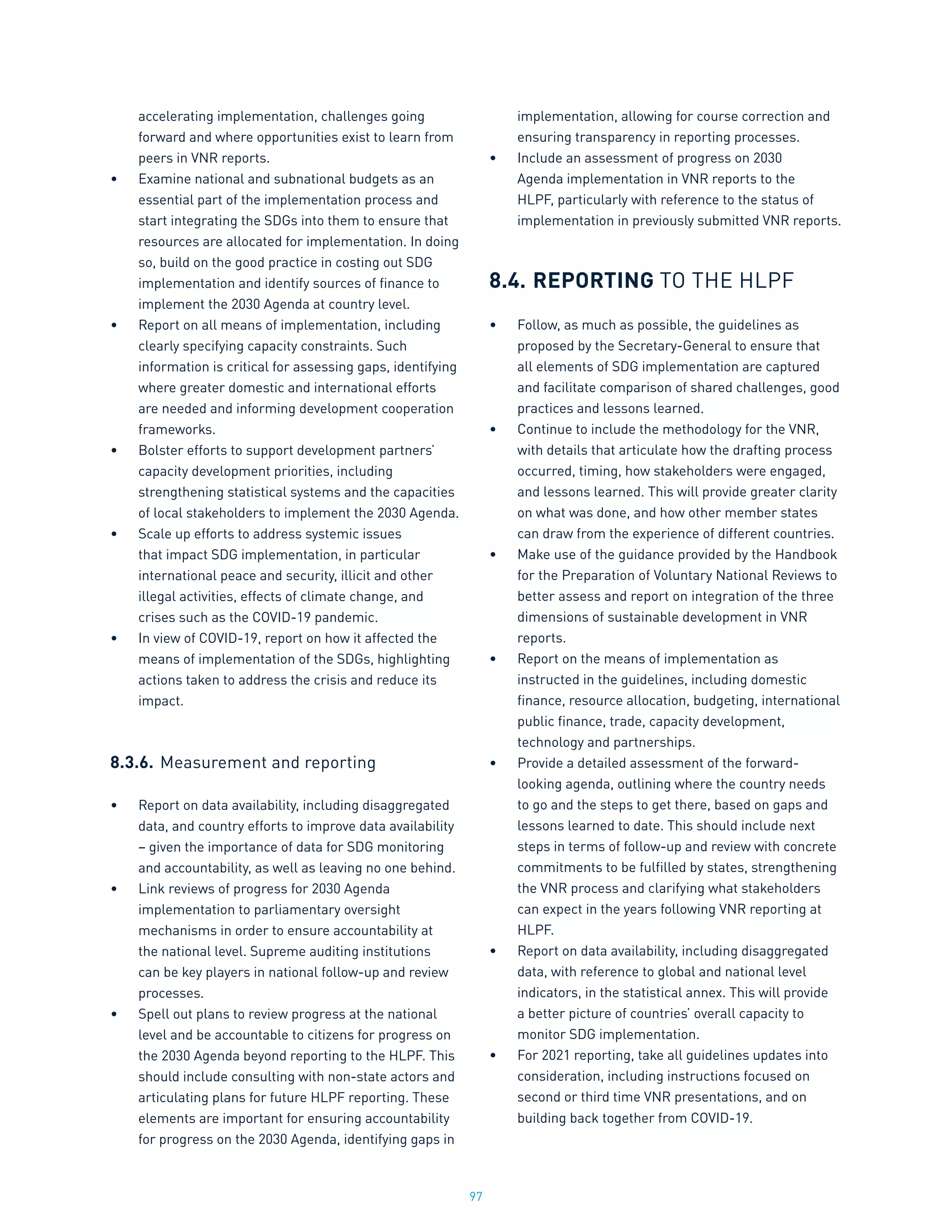

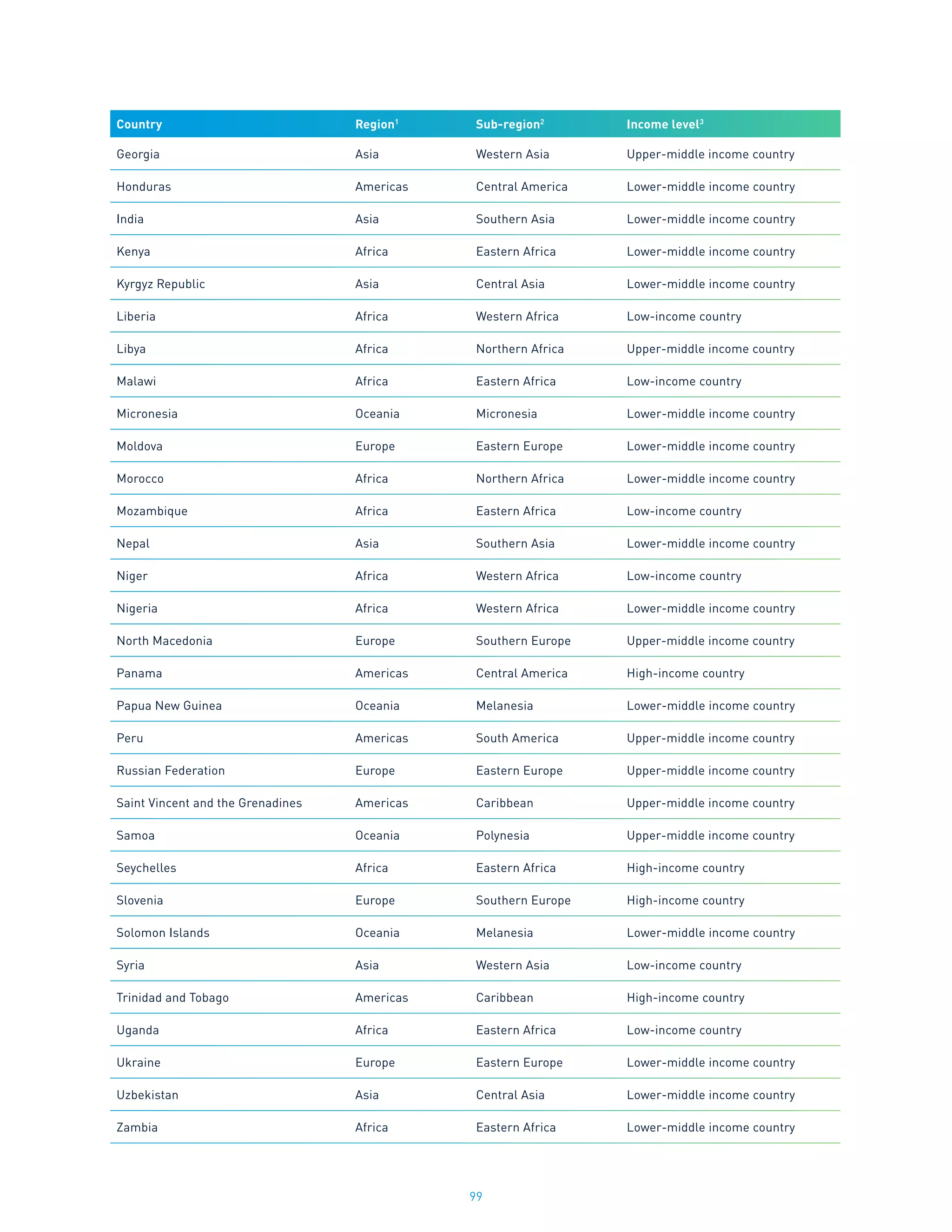
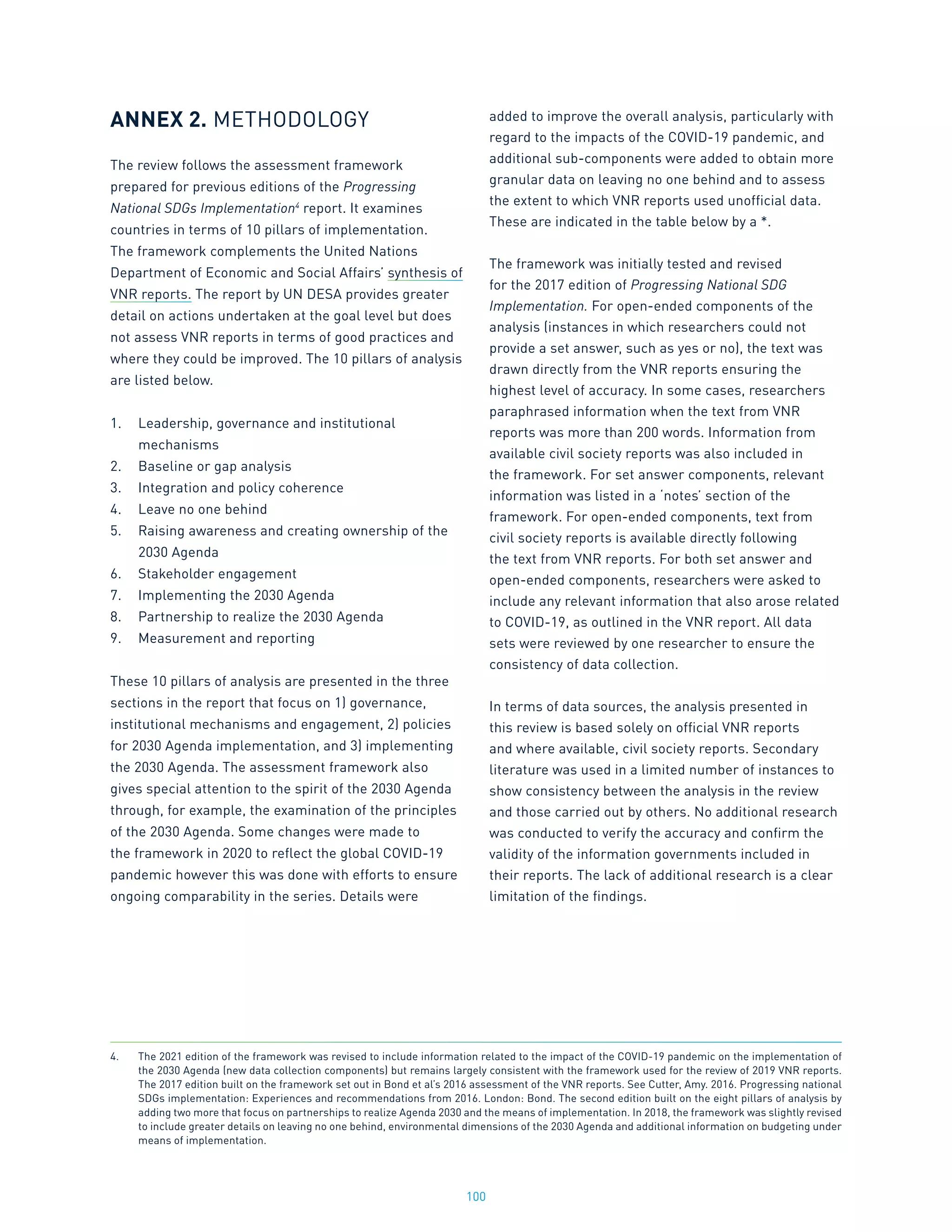
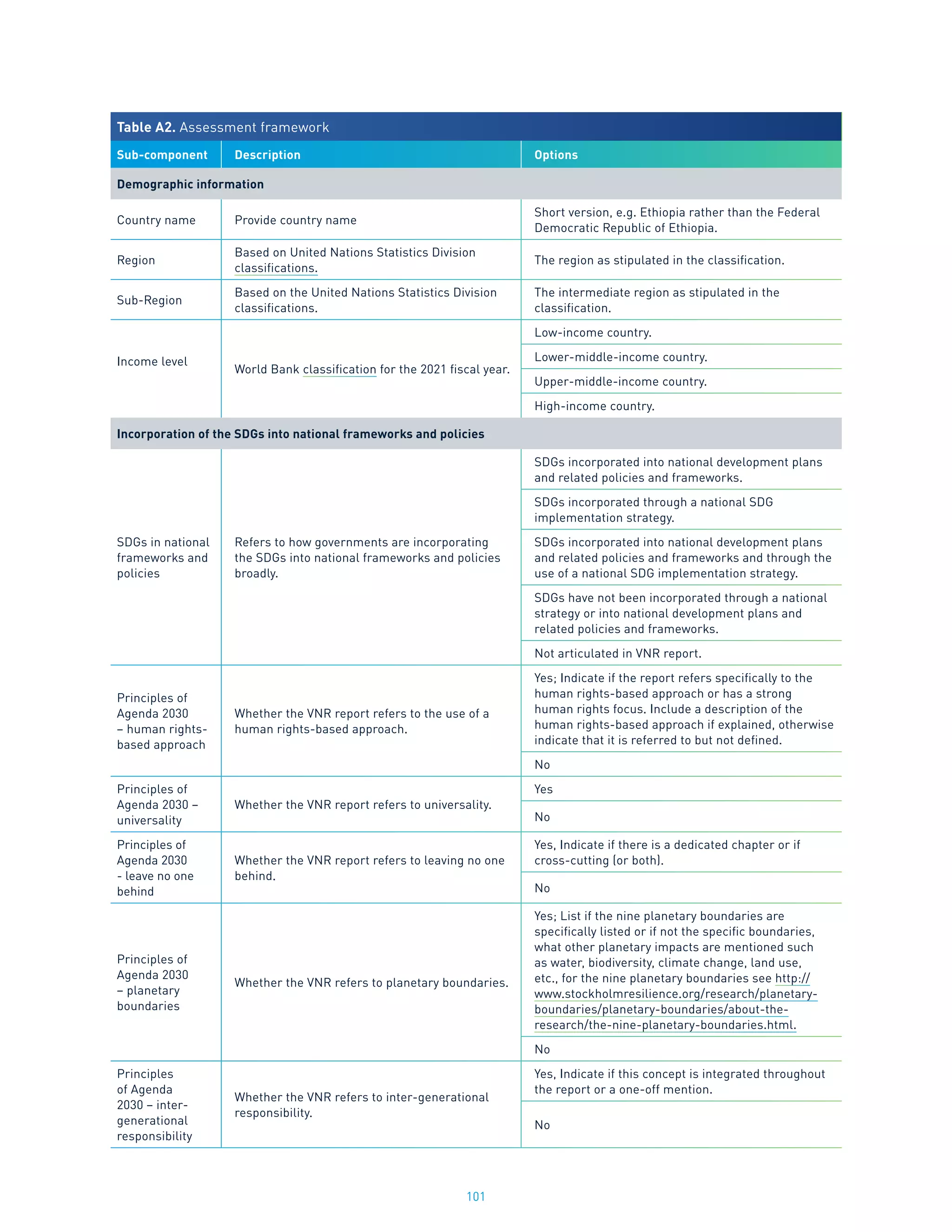











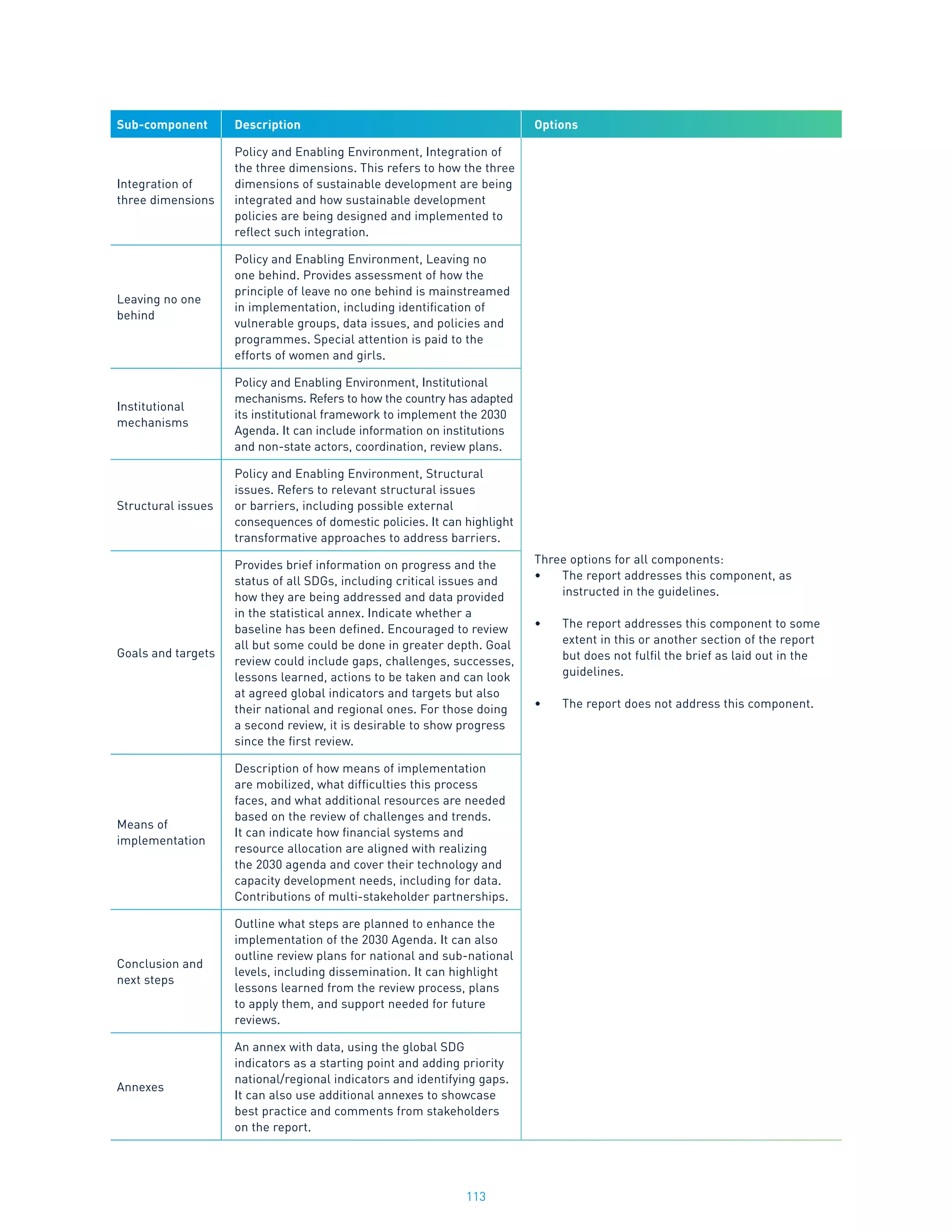









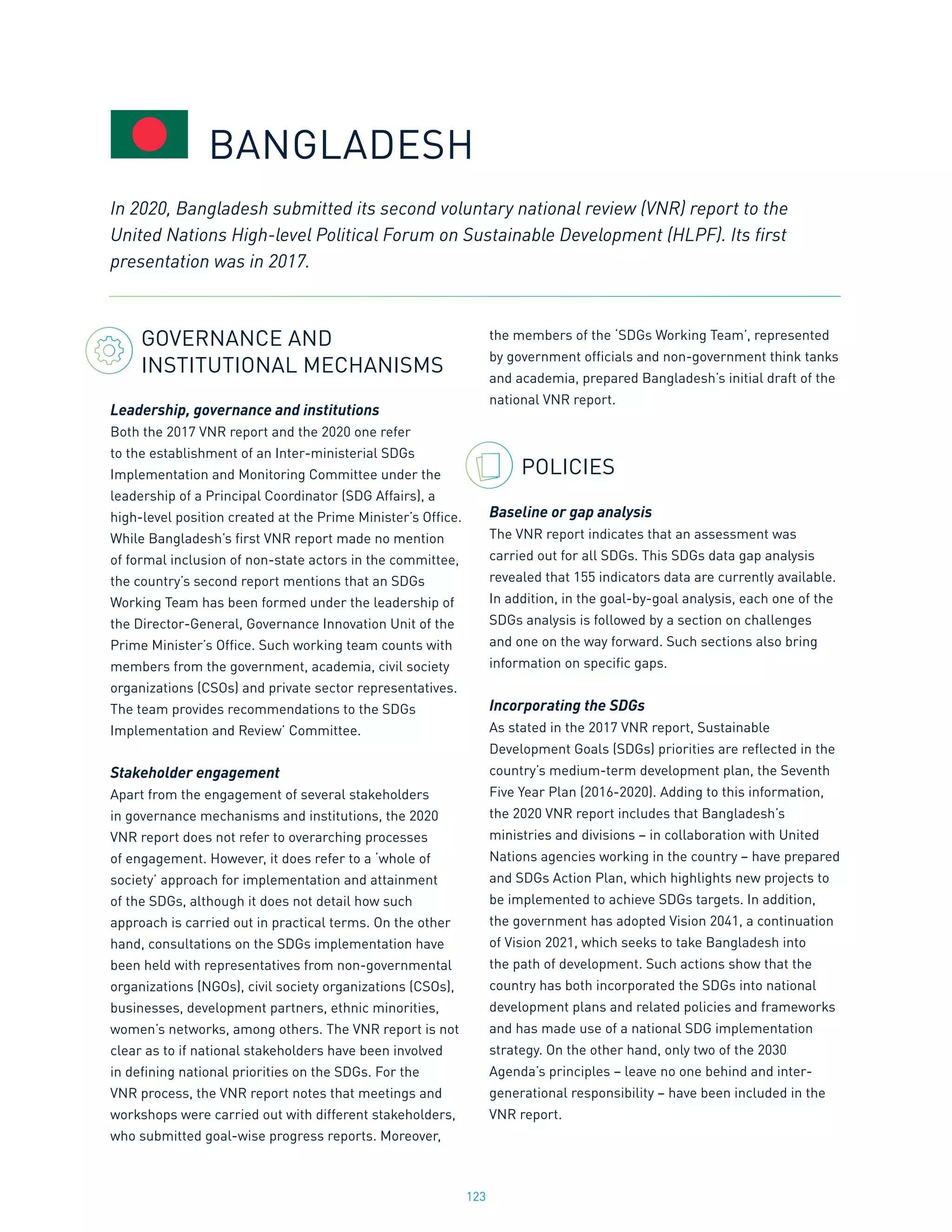



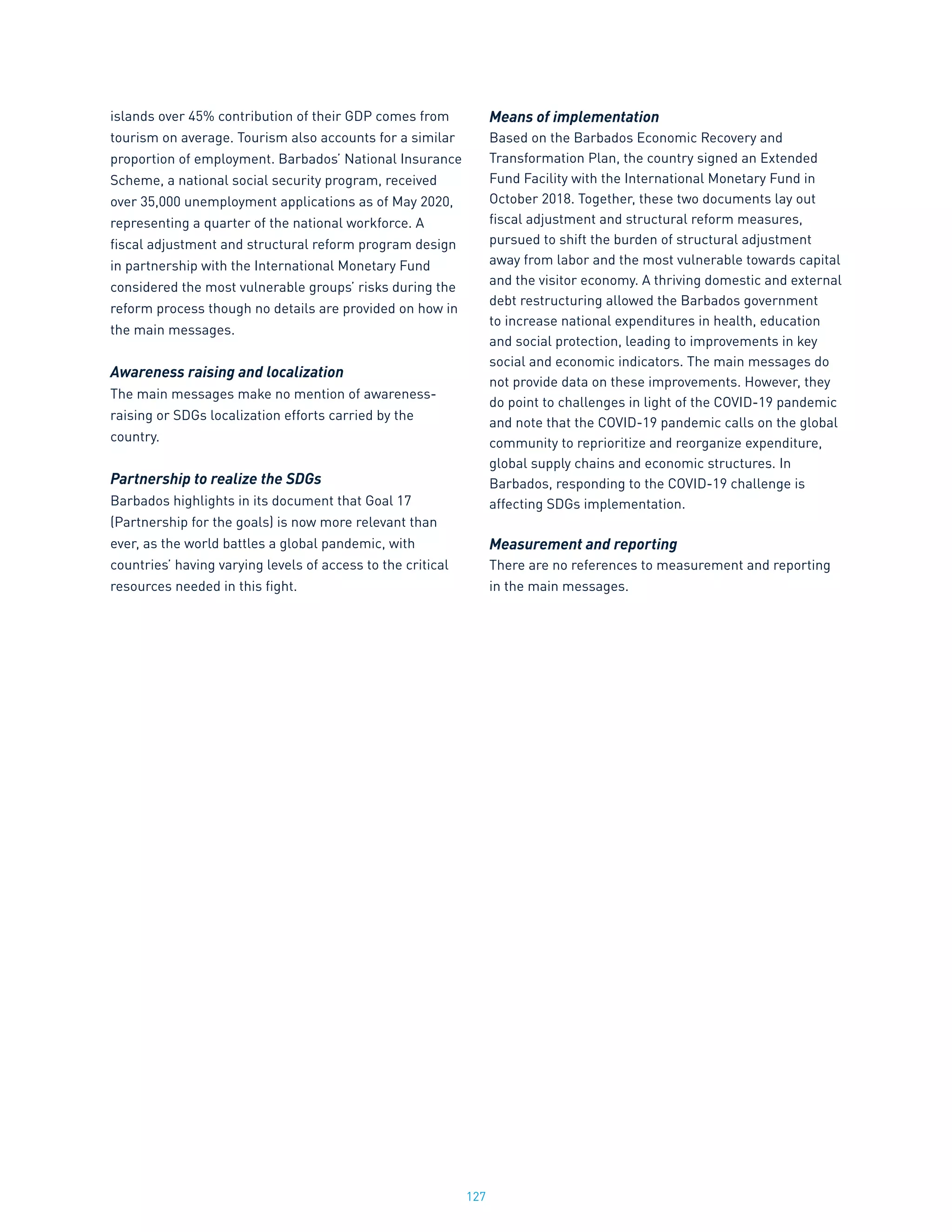

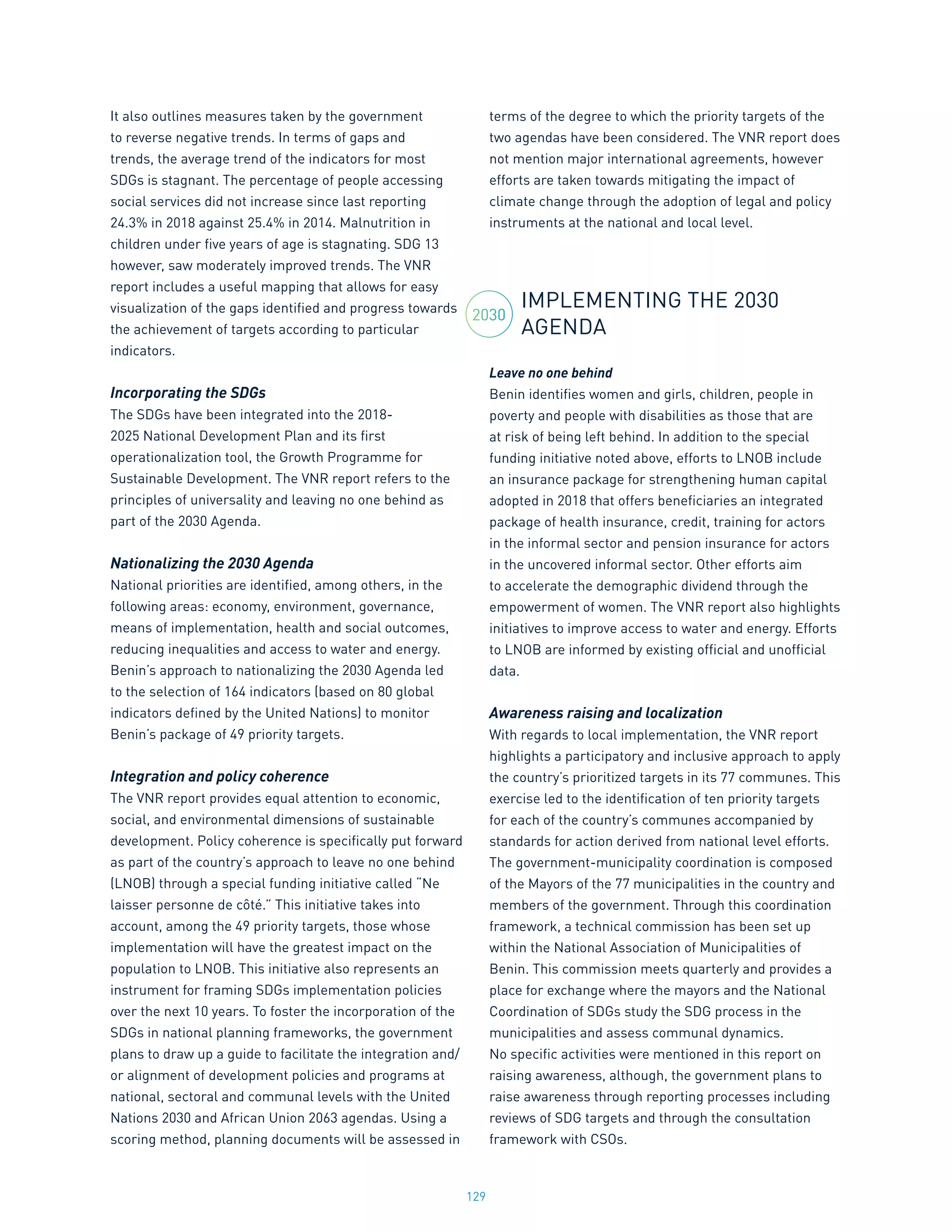


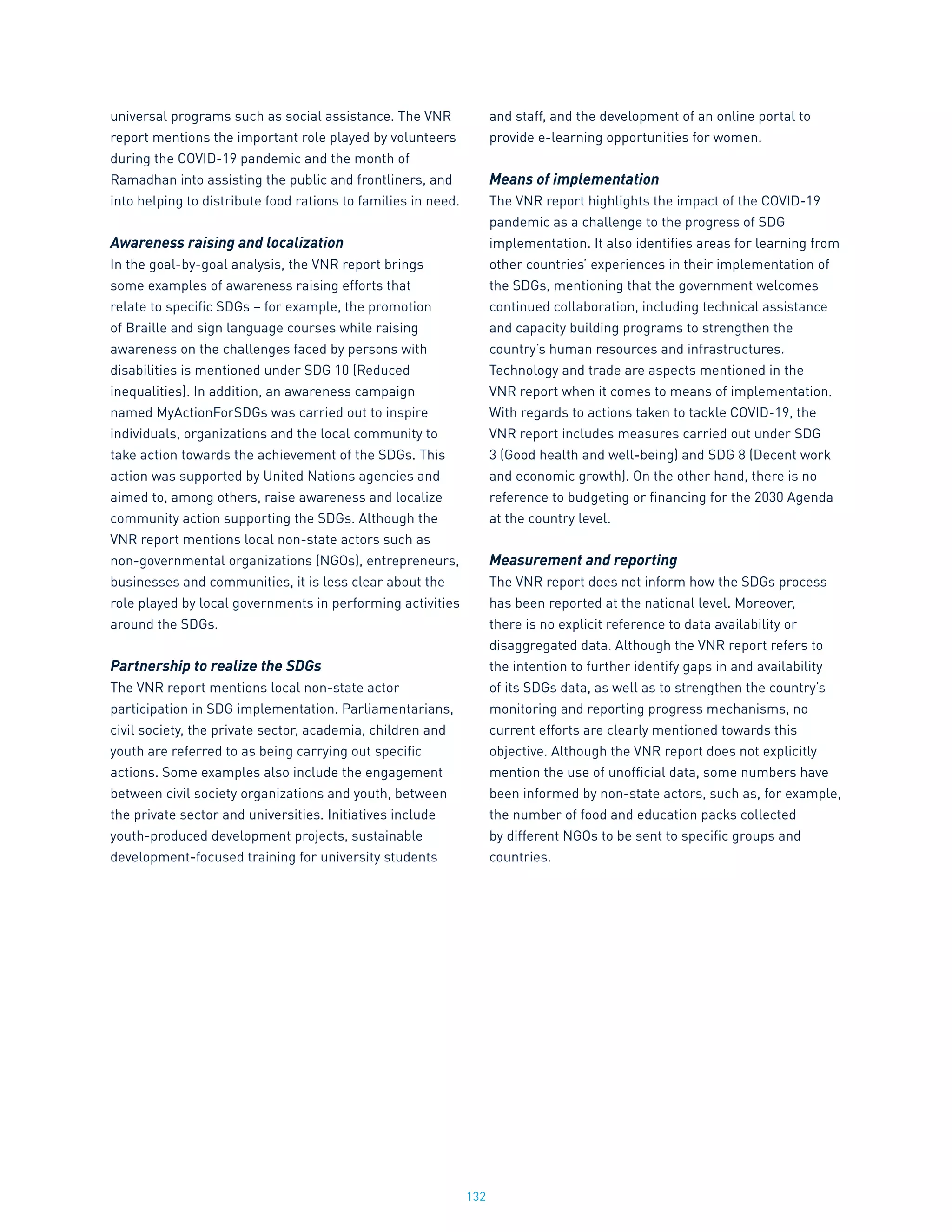


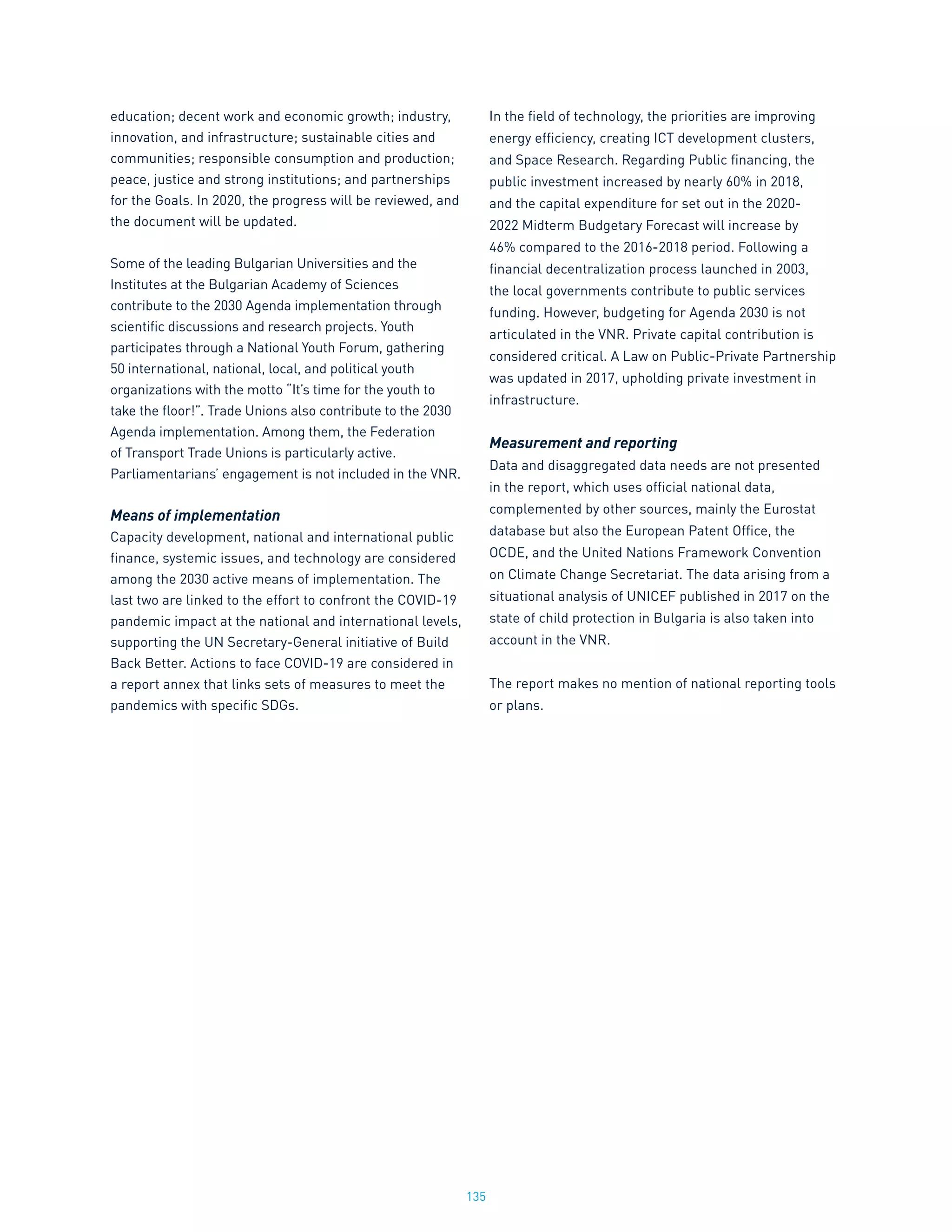
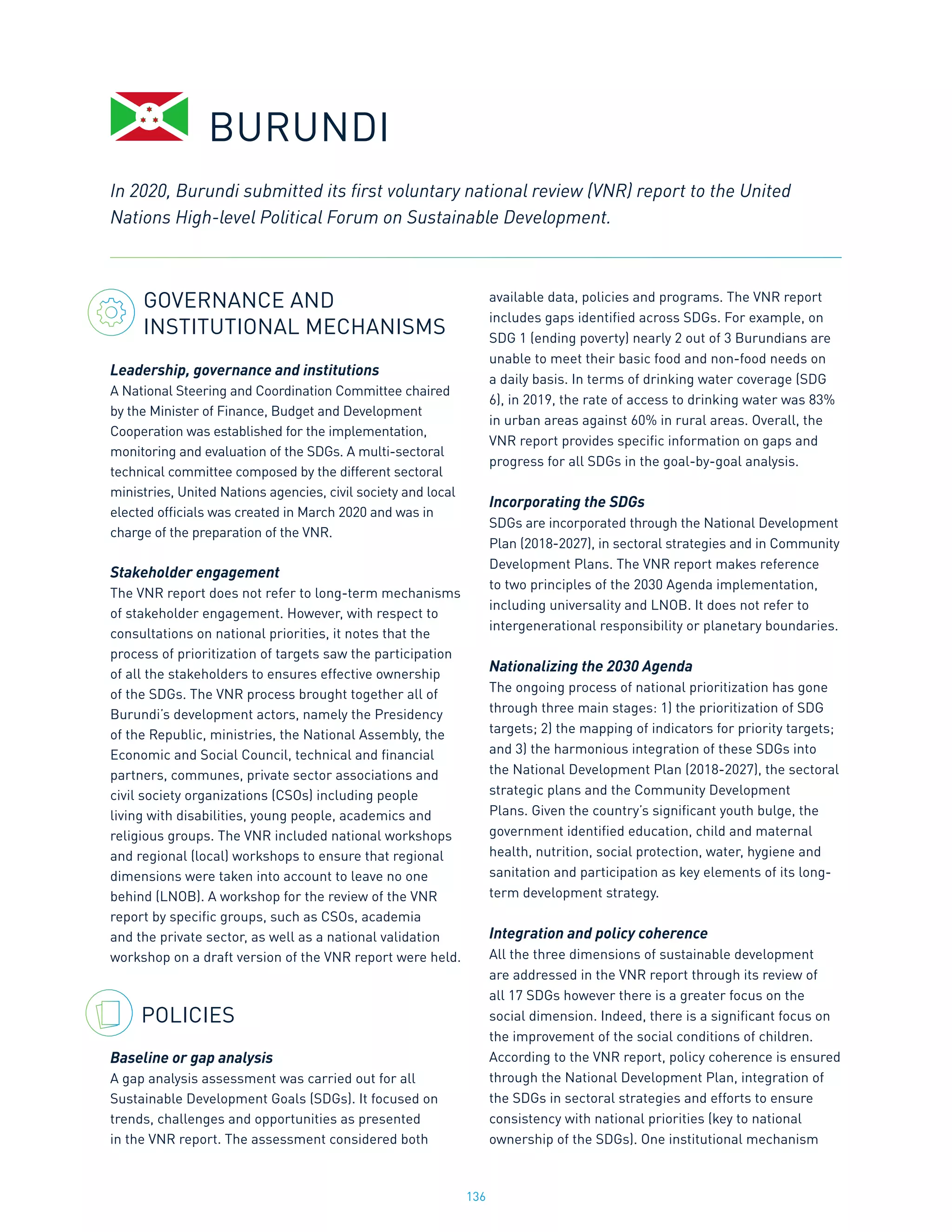
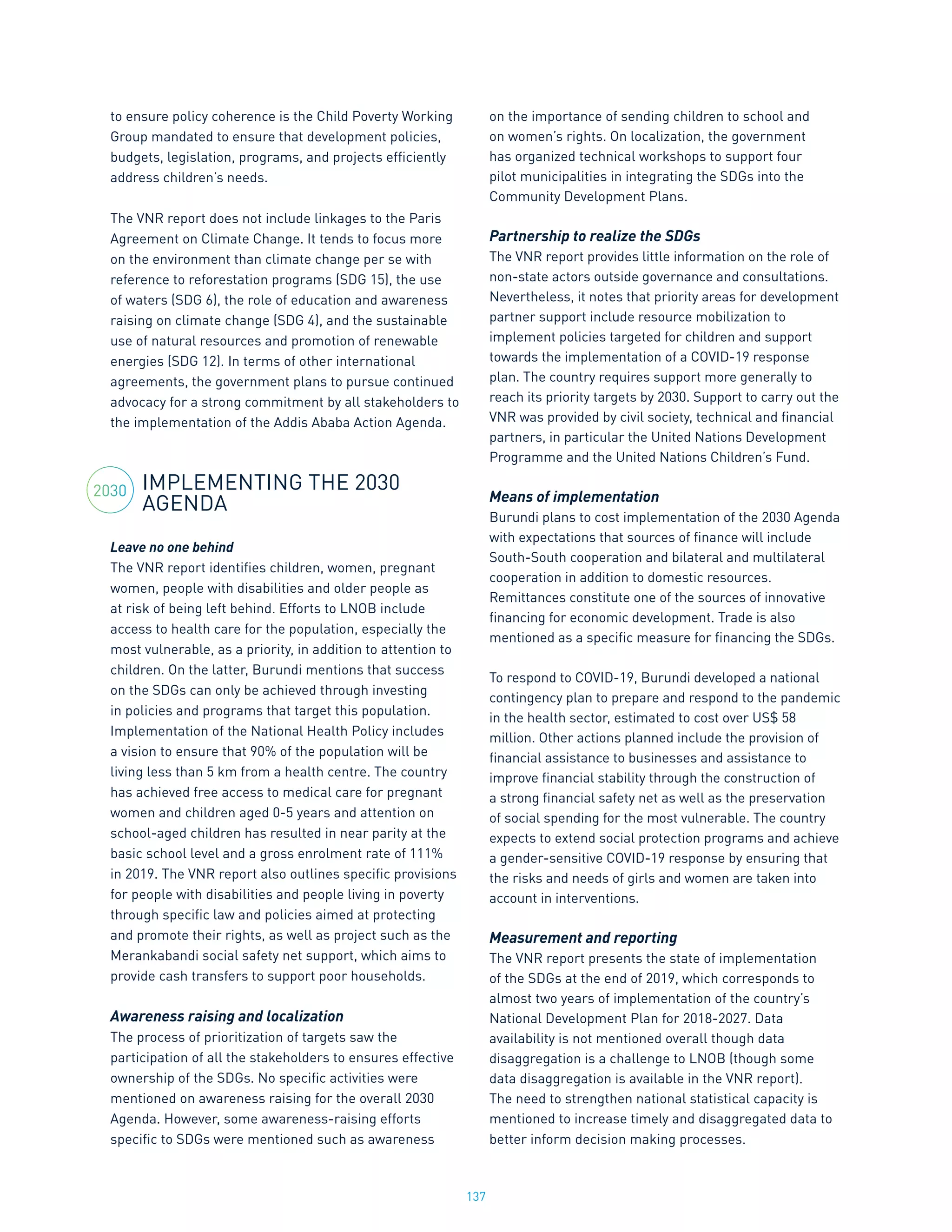
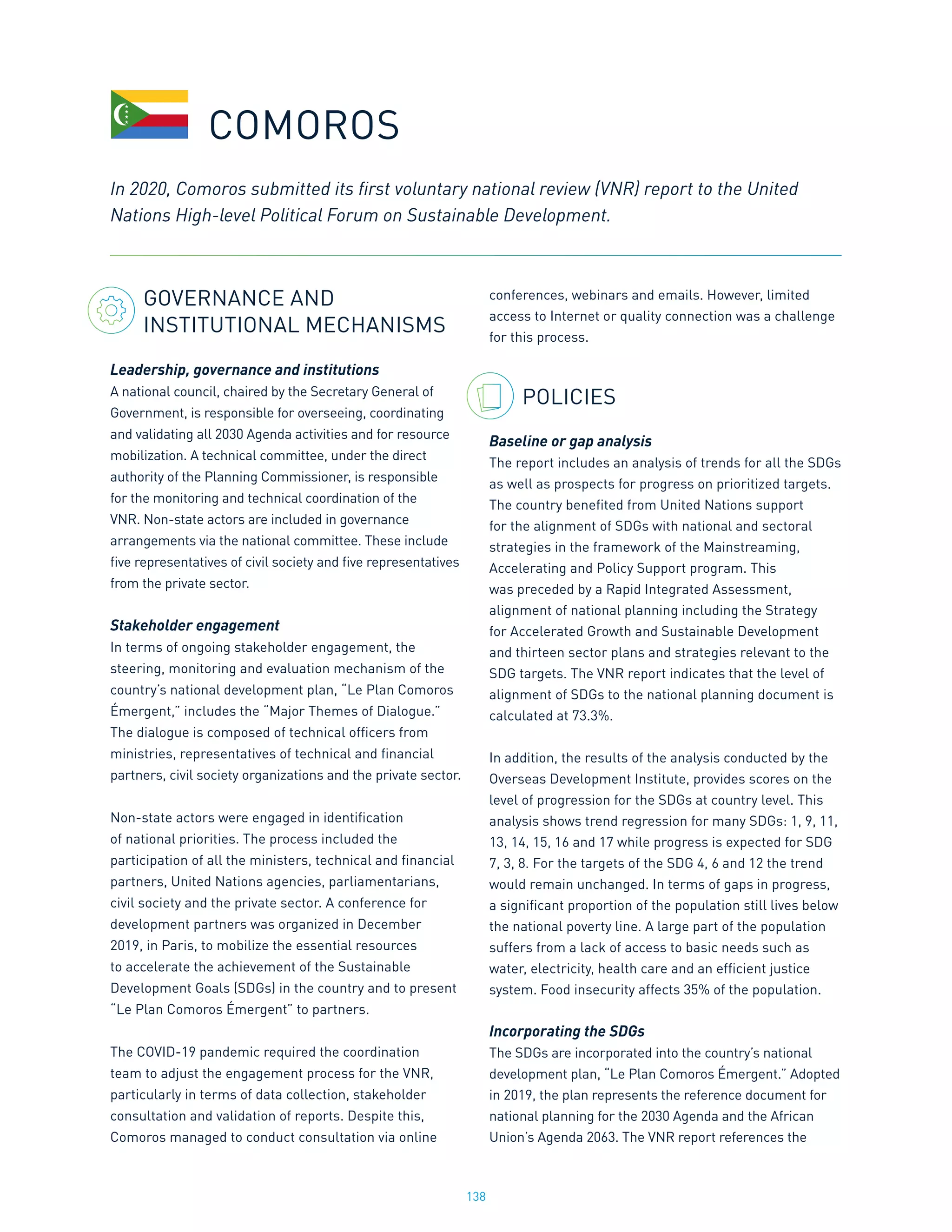
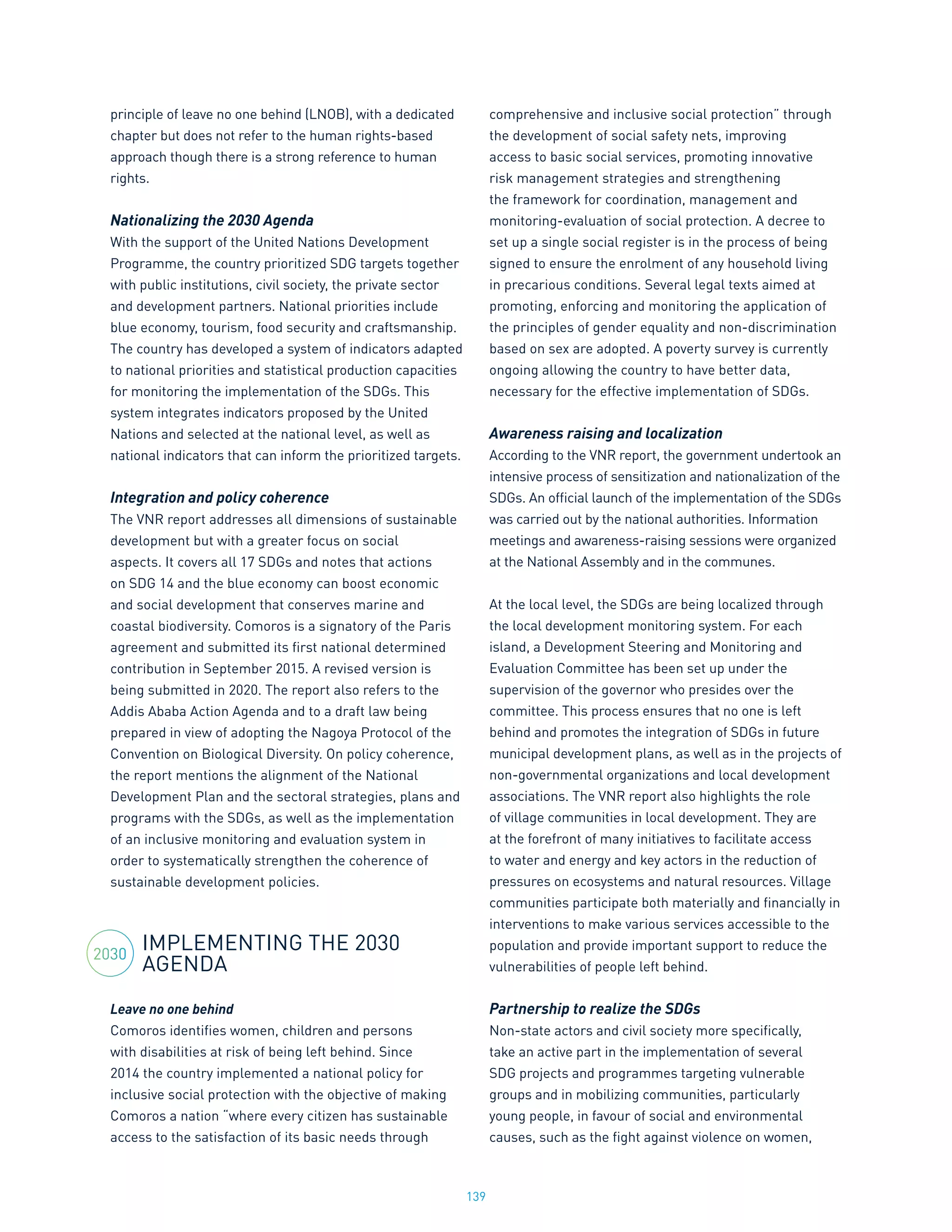



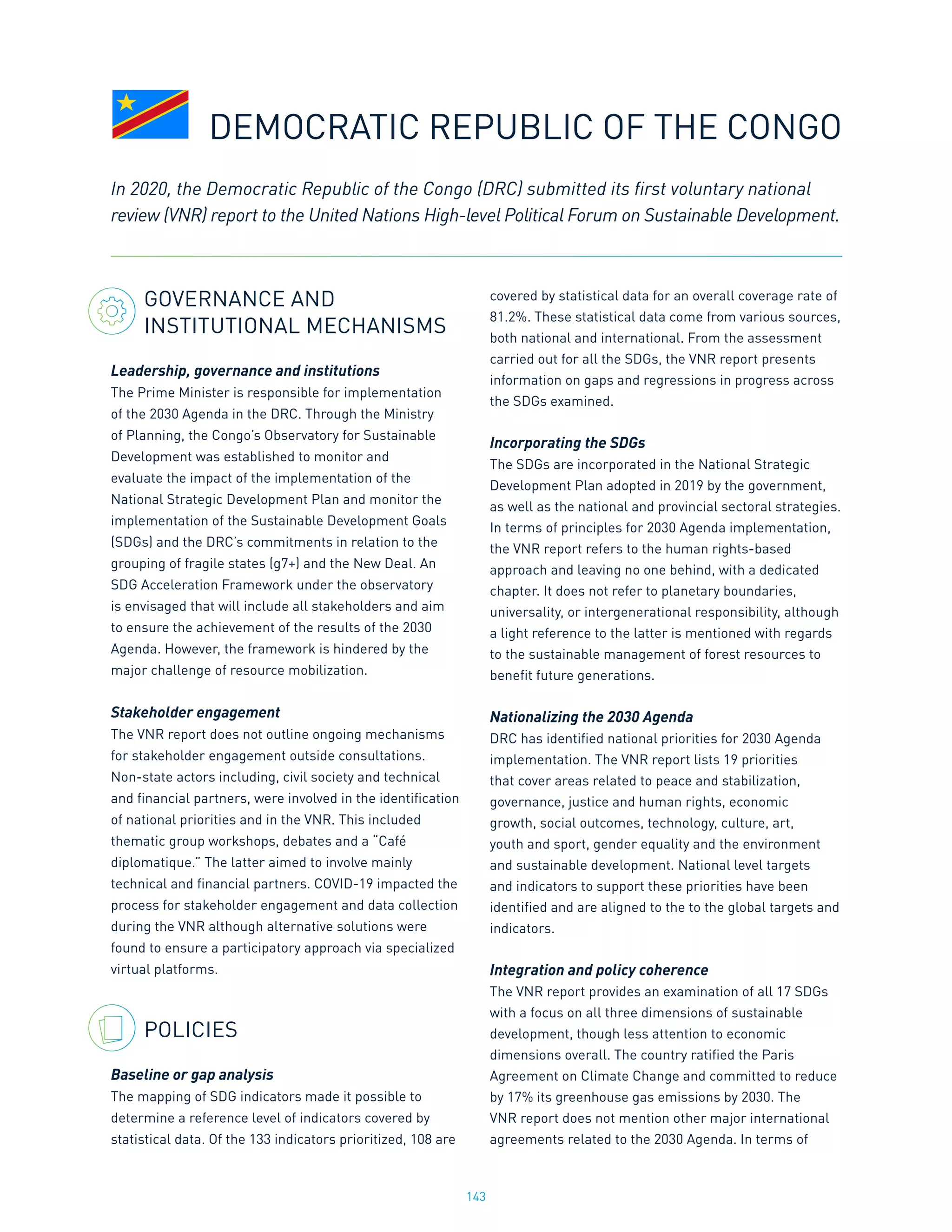


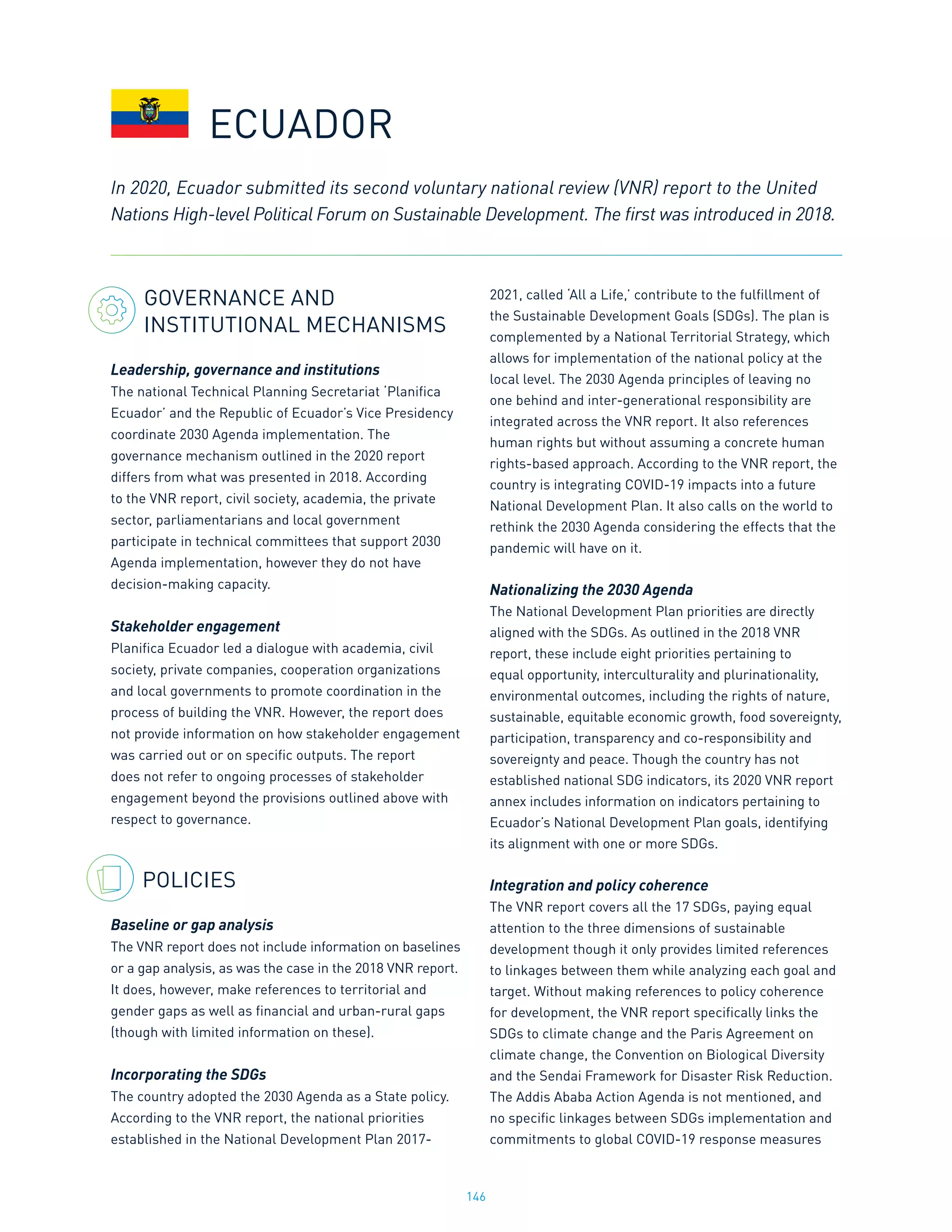

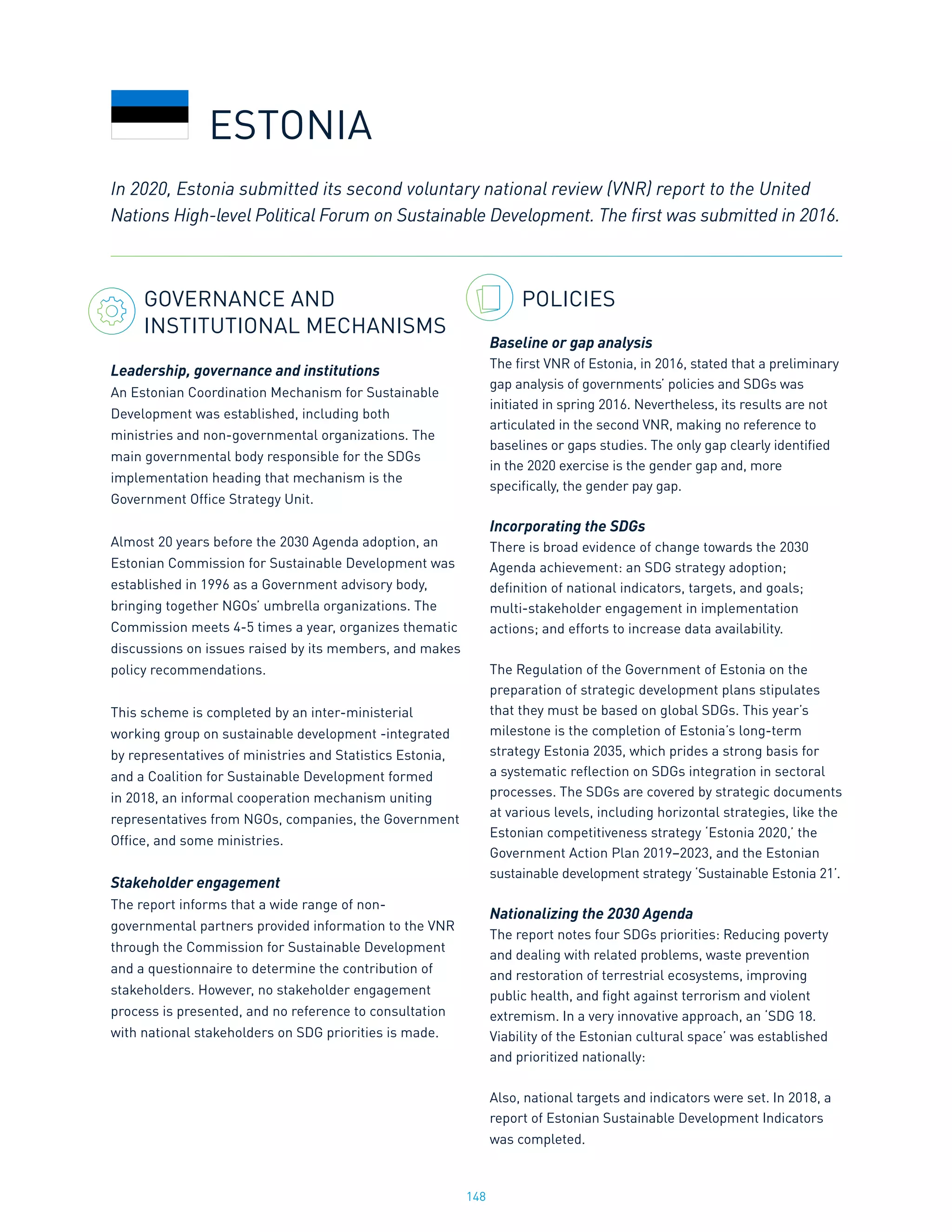



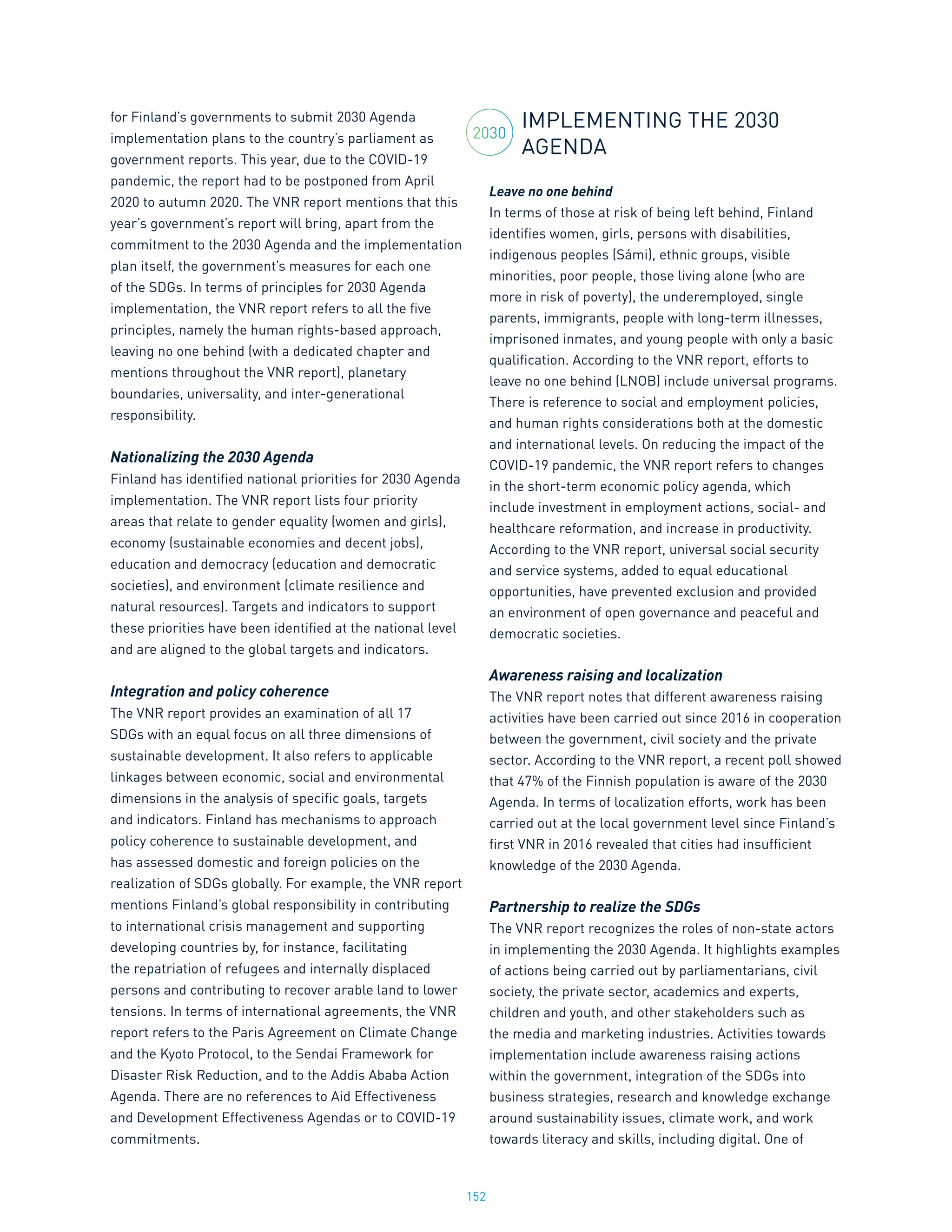

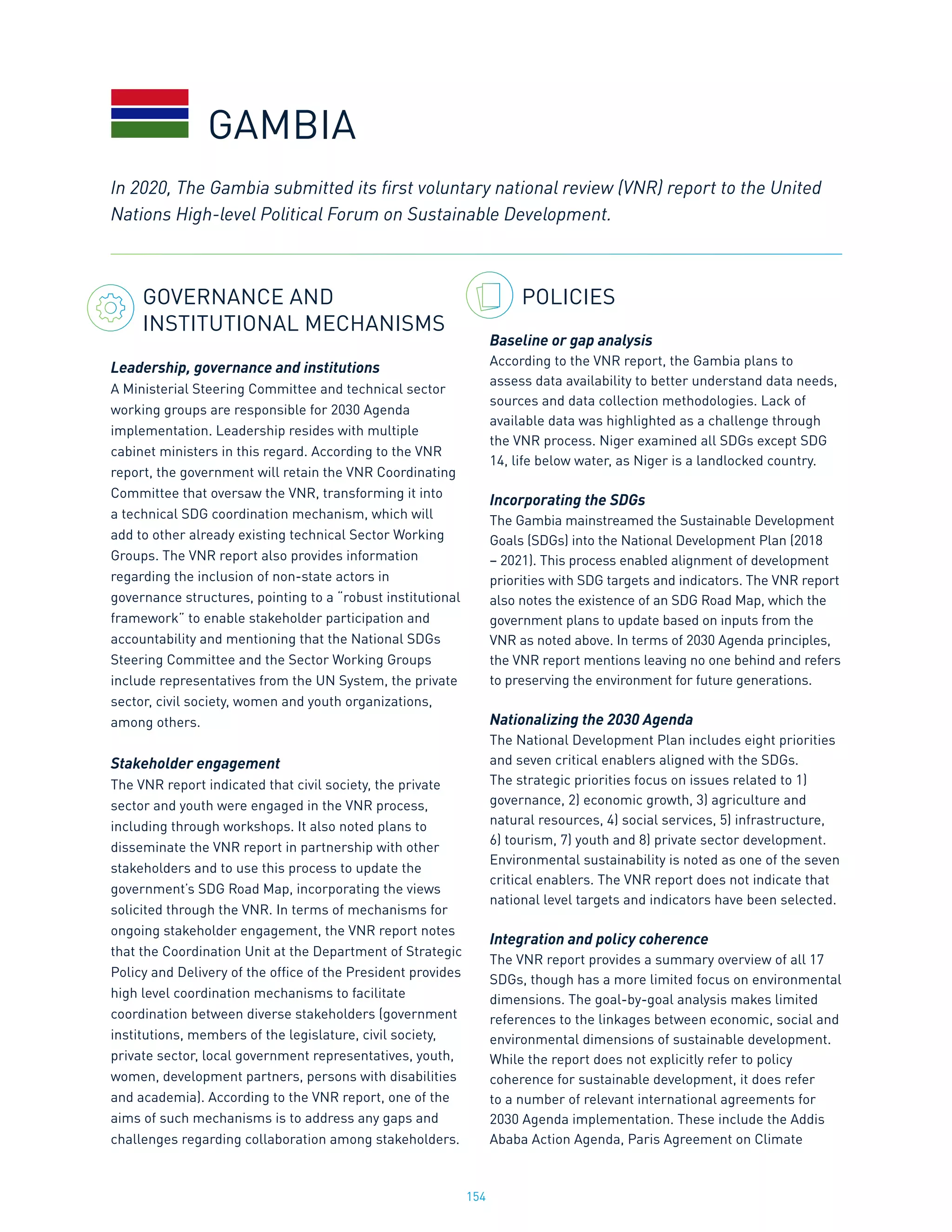
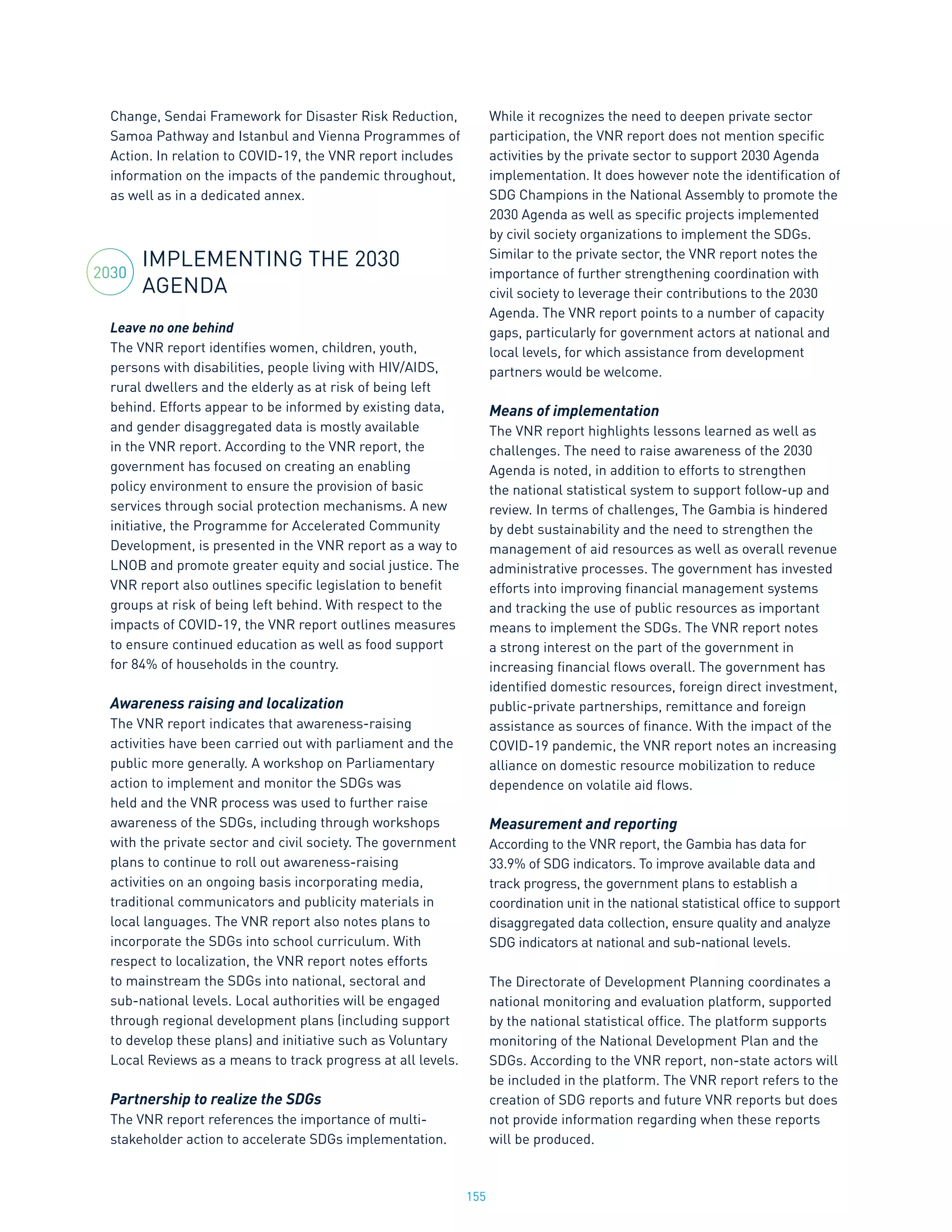
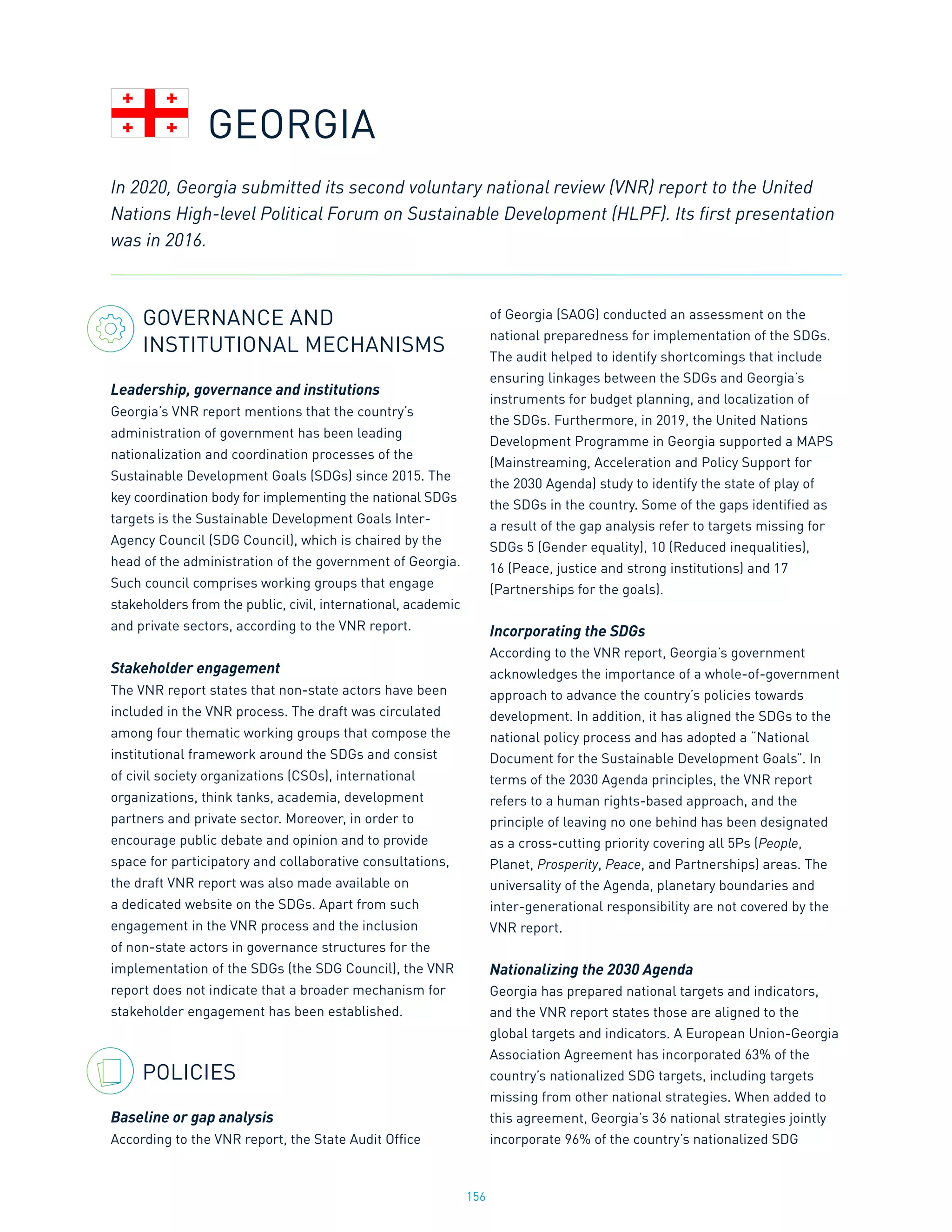


![159
GOVERNANCE AND
INSTITUTIONAL MECHANISMS
Leadership, governance and institutions
According to the 2020 VNR report, the national
governance structure for 2030 Agenda implementation
has changed since the country’s first report in
2017. Since December 2019, the 2030 Agenda
implementation is led by a multistakeholder Sustainable
Development National Commission led by the General
Government Coordination Secretariat and composed
of representatives from the government, the Council
of Higher Education, the Honduran Council of Private
Enterprise, workers and peasant organizations, civil
society and local governments. Permanent guests
representing the National Institute of Statistics, The
Honduras National Institute for Women and international
cooperation partners, among others, participate in its
debates. To carry out its functions, the Commission
receives operational assistance from a Technical
Secretary, Associations of Municipalities, open Thematic
Work Tables and a Technical Committee for Sustainable
Development. The last is composed of high-level
technicians from each Commission member institution,
the National Institute of Statistics and international
cooperation partners.
Stakeholder engagement
Besides stakeholders’ participation in the Sustainable
Development National Commission, the VNR report
presents no mechanism or process for broader
stakeholder engagement. However, there with respect to
the second VNR, the VNR report notes that the process
was affected by the COVID-19 pandemic, particularly in
terms of “the discussion and validation of the report with
stakeholders in workshops at the national and regional
levels” (p.12). Nevertheless, the VNR report does not
fully lay out details on the VNR consultation process.
POLICIES
Baseline or gap analysis
Nor the 2020 VNR neither the previous one presented in
2017 refer to gap analysis or baseline studies. Although
the second report recognized significant national
structural gaps in social, economic and environmental
issues that “should be considered [as part of] the
background of the National SDG Agenda goals and
indicators baseline” (p.25). The National SDGs Agenda
established the data for the year 2015 or the nearest
year from which measurements will begin as national
baselines, but this is not mentioned in the VNR report.
Incorporating the SDGs
The Sustainable Development Goals (SDGs) were
incorporated through a National SDGs Agenda adopted
in 2019 as the national strategy for 2030 Agenda
implementation. It is expected that the National SDGs
Agenda will be included as part of the 2022-2034
National Development Plan. Sectoral policies were
also aligned with the SDGs. The VNR report only makes
reference to the 2030 Agenda principle to leave no one
behind (LNOB).
Nationalizing the 2030 Agenda
The report repeatedly refers to the national priorities
adopted as part of the National SDGs Agenda but never
identifies them. Moreover, the National SDGs Agenda
text does not set national priorities, stating that the
country does not have priority goals. Instead, that
Agenda prioritizes 69 targets and 99 indicators resulting
from a series of Honduran development planning
documents, namely the Country Vision to 2038, the
National Plan 2022 and the Strategic Government Plan
2018-2022. However, this information is not presented in
the actual VNR report.
Integration and policy coherence
The VNR report examines all 17 SDGs briefly, providing
In 2020, Honduras submitted its second voluntary national review (VNR) report to the United
Nations High-level Political Forum on Sustainable Development. The first was introduced in 2017.
HONDURAS](https://image.slidesharecdn.com/progressingsdgs2020full-reportfinal-1-210407175018/75/Progressing-sd-gs_2020_full-report_final-1-159-2048.jpg)

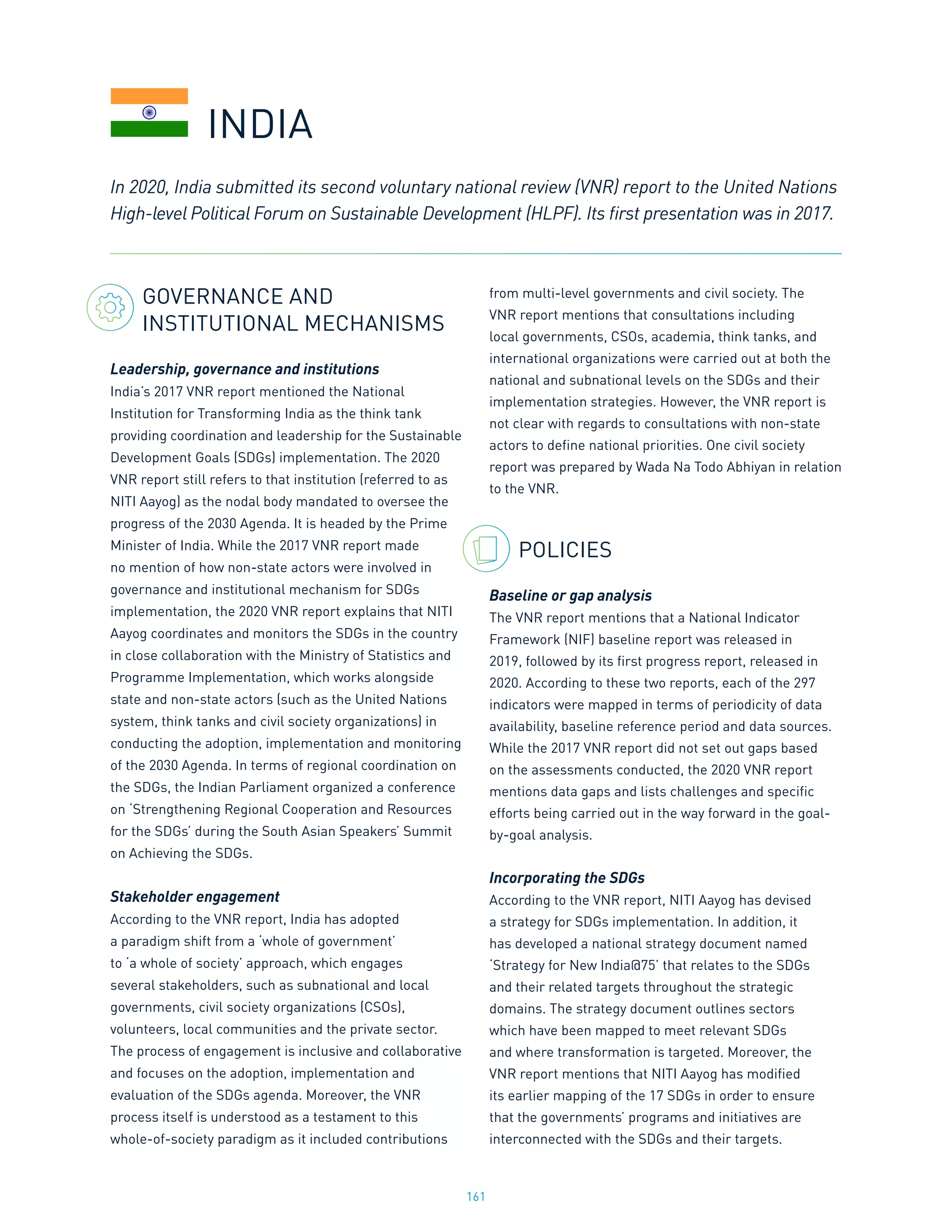
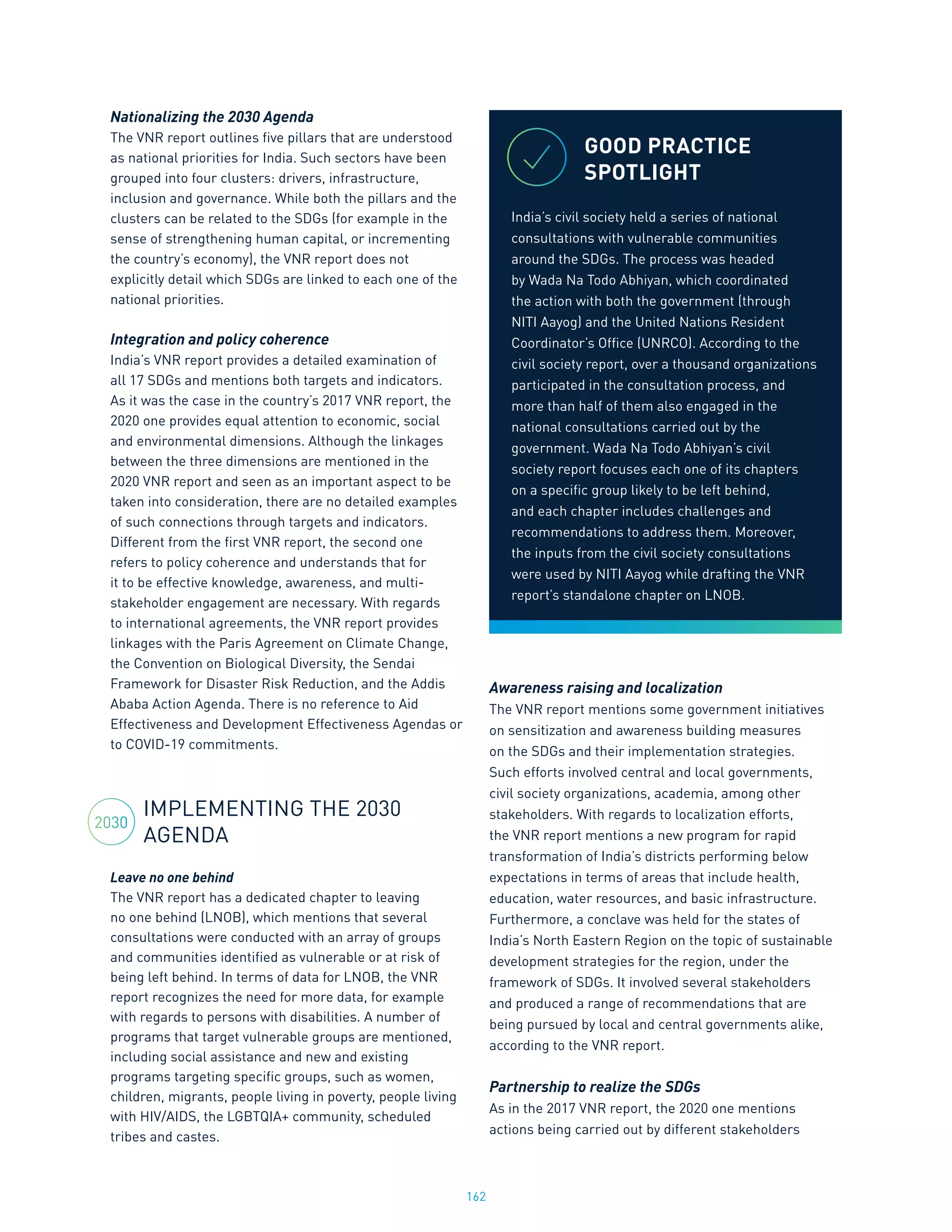
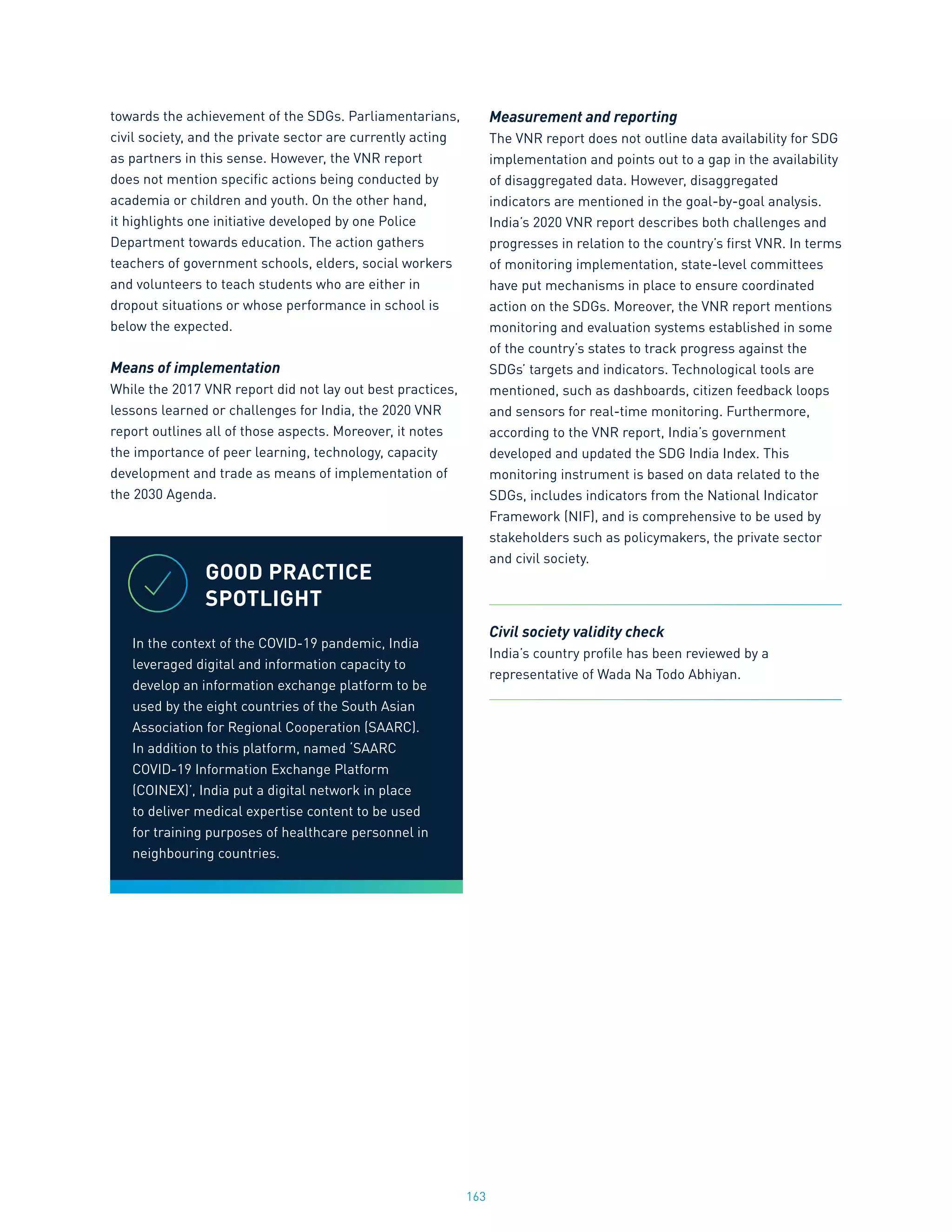
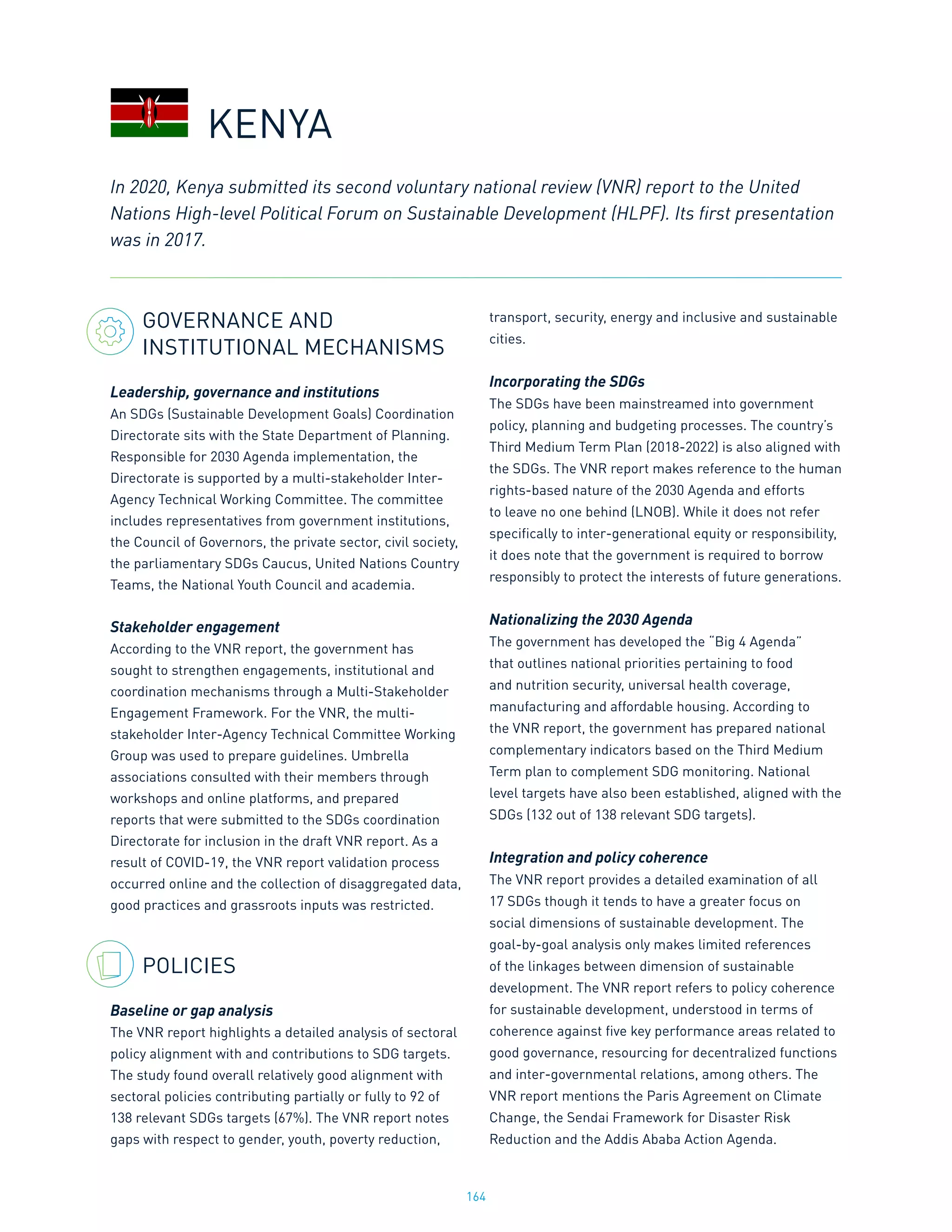

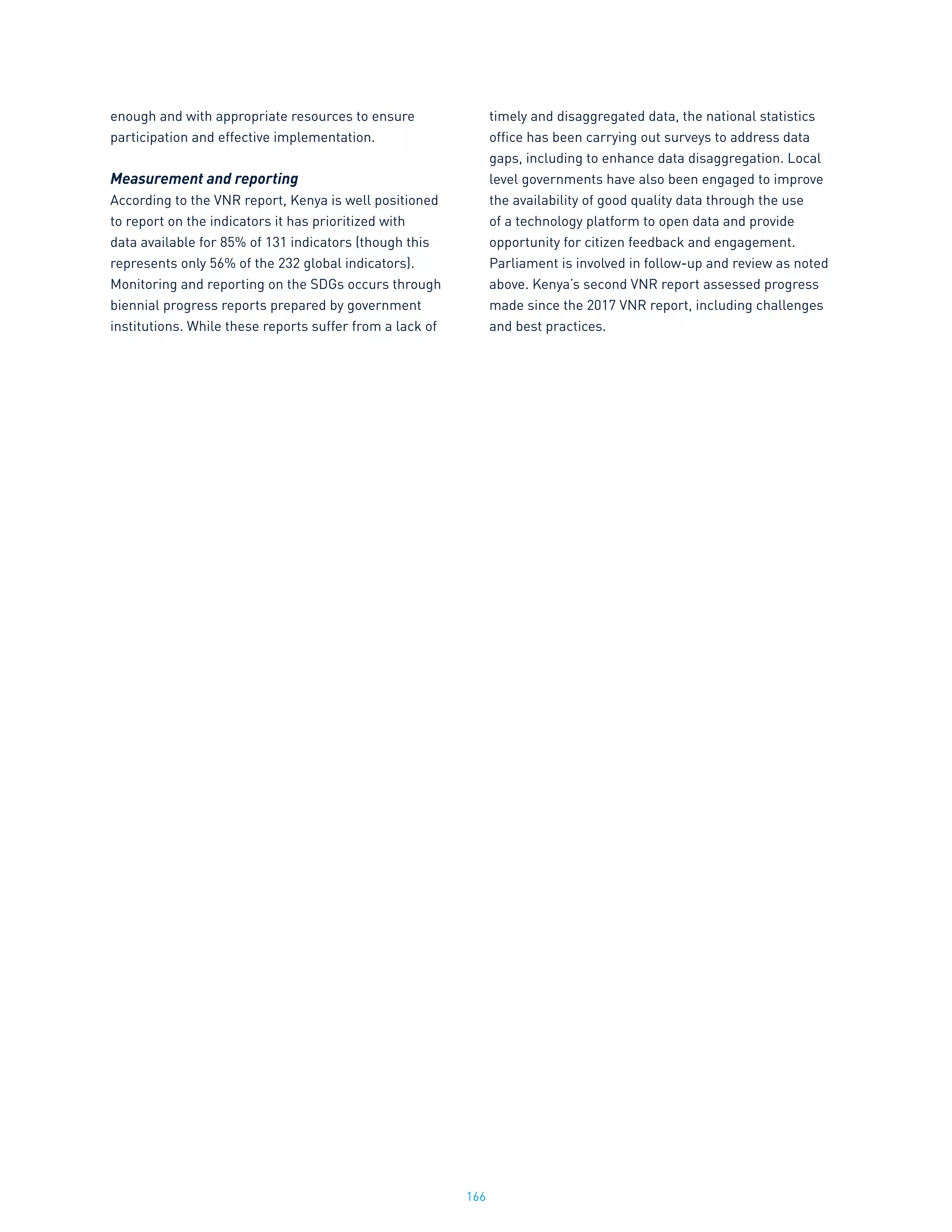

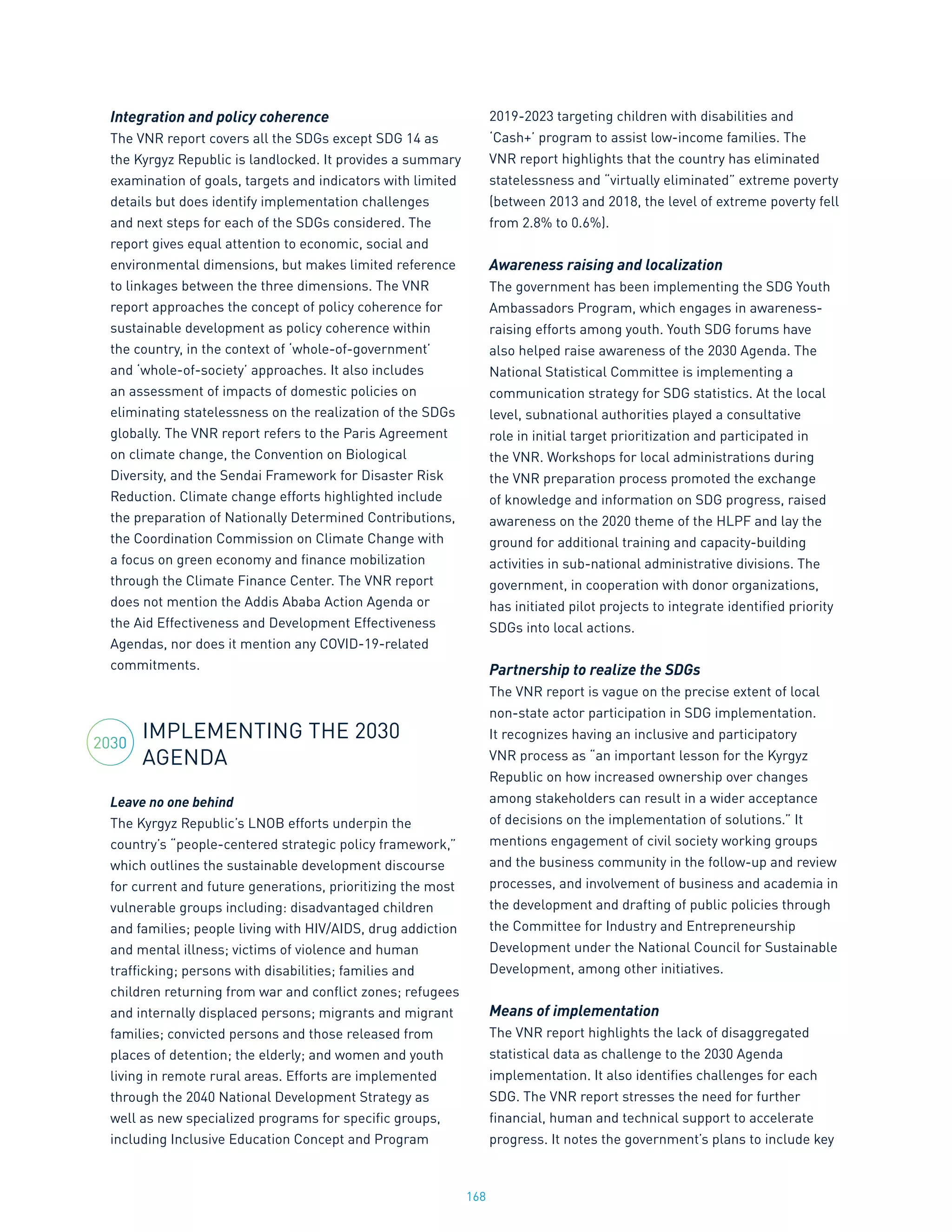
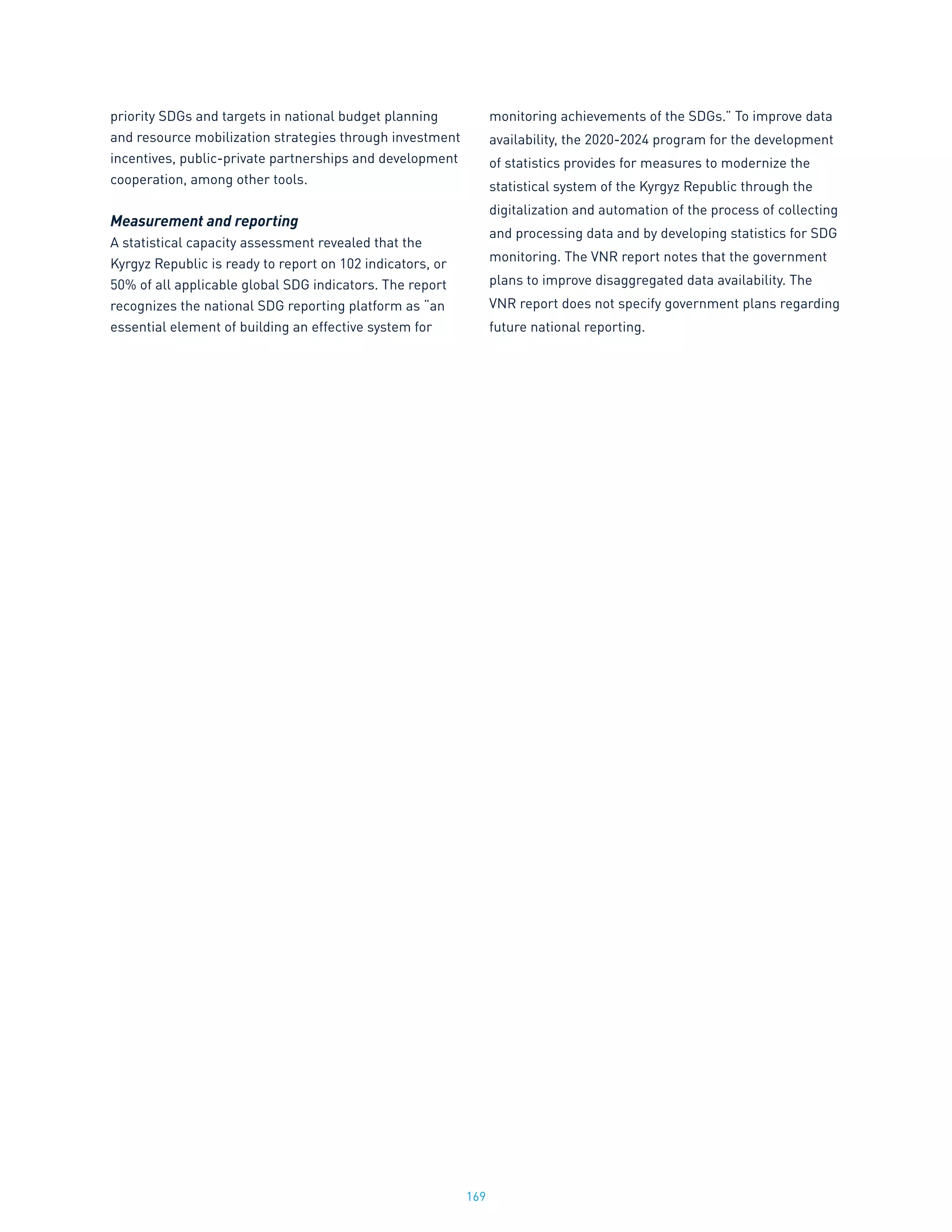

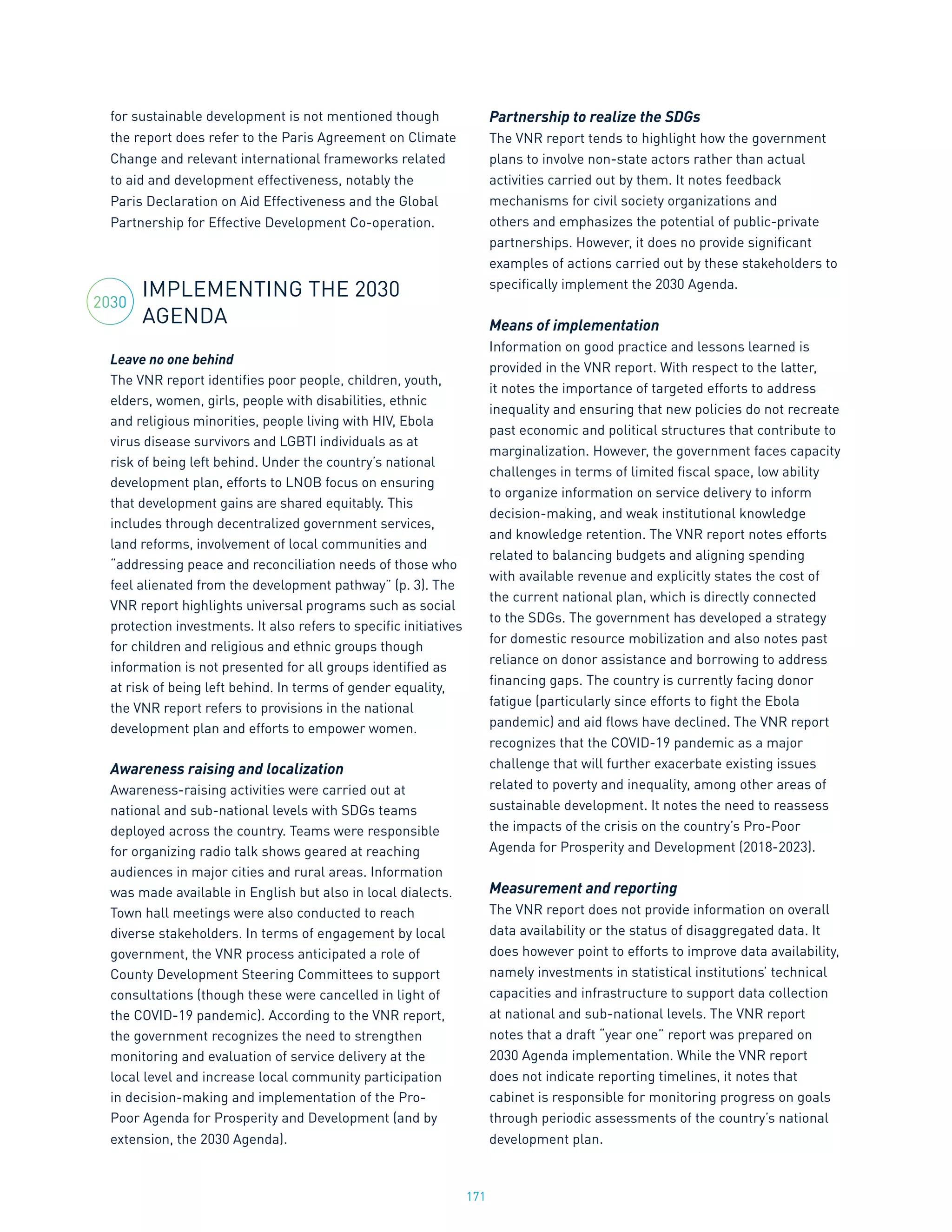
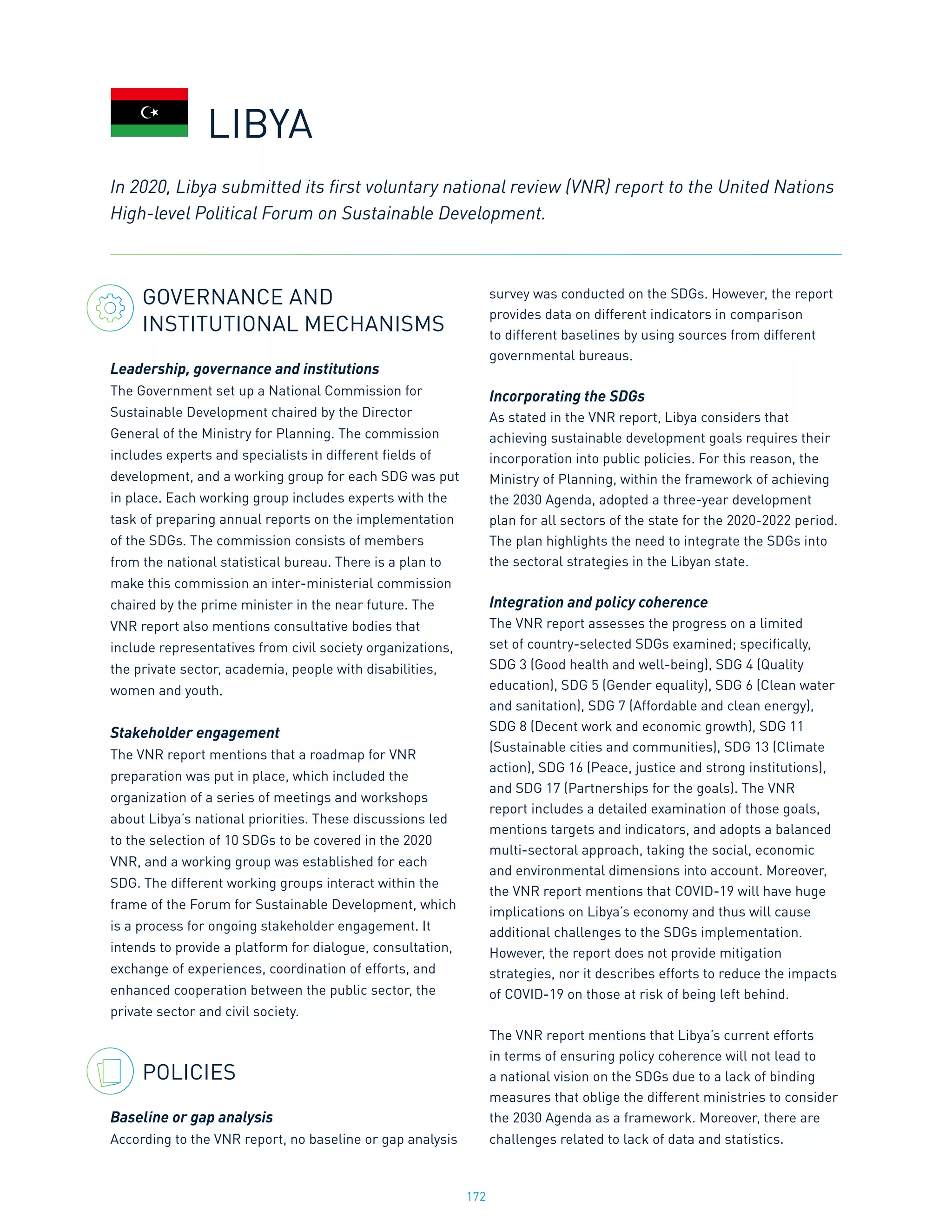
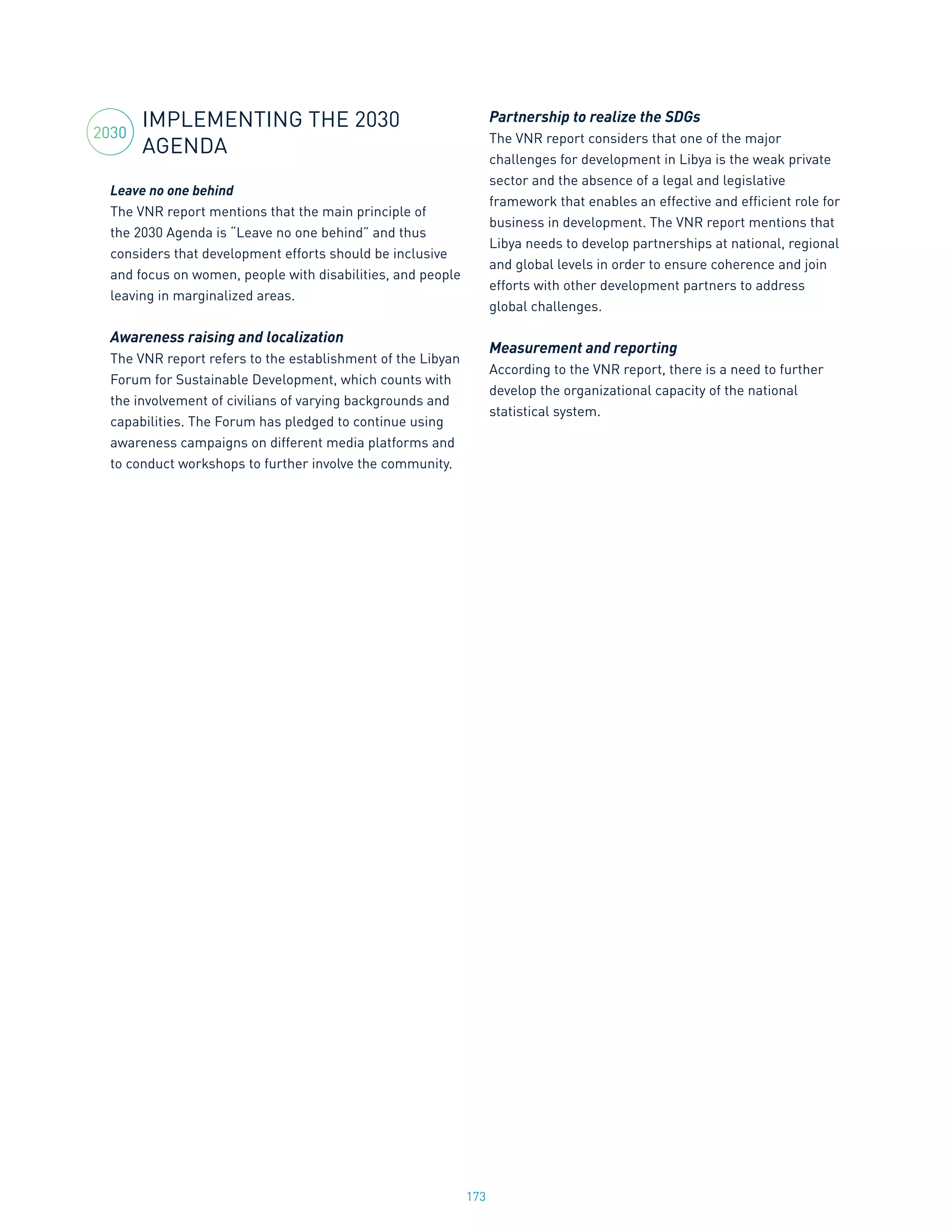




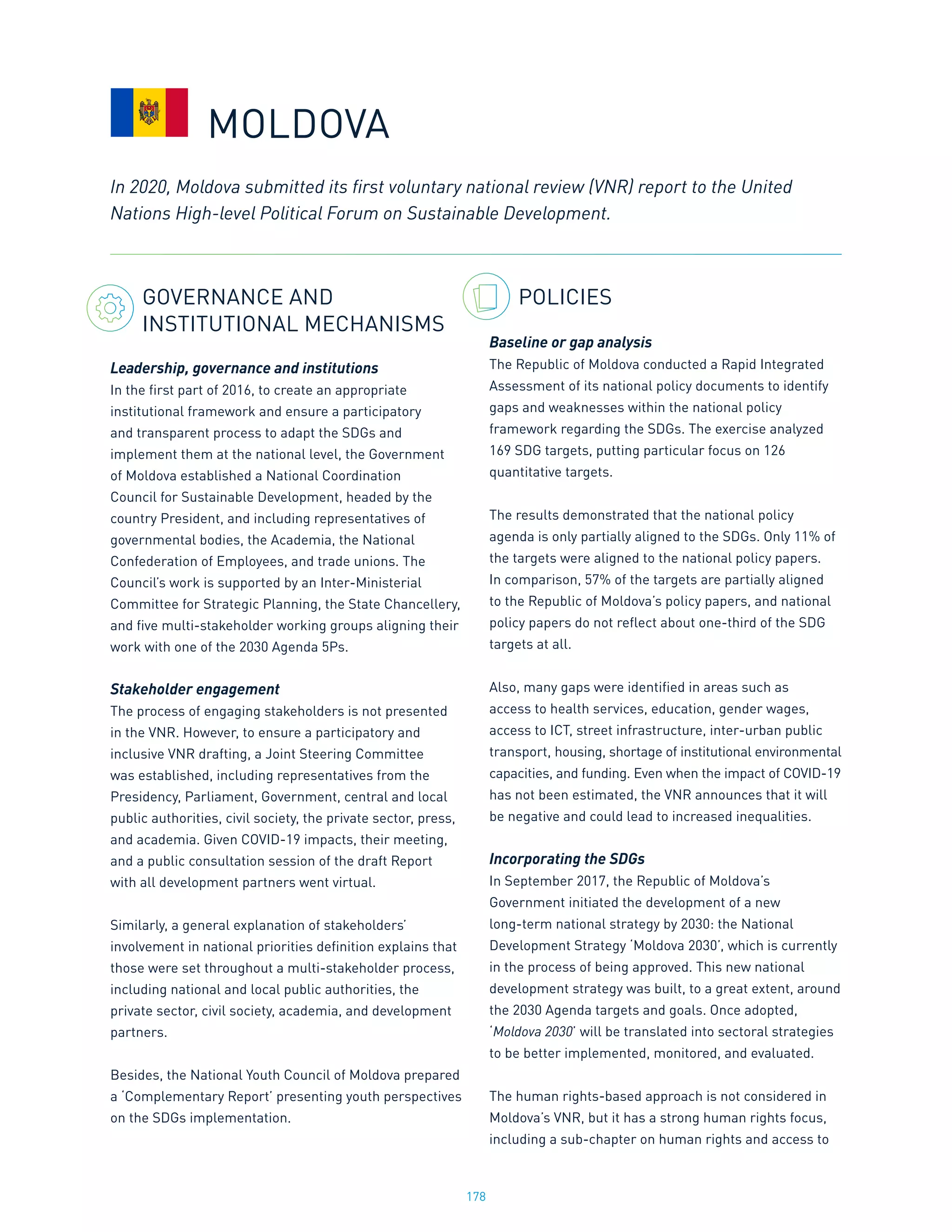





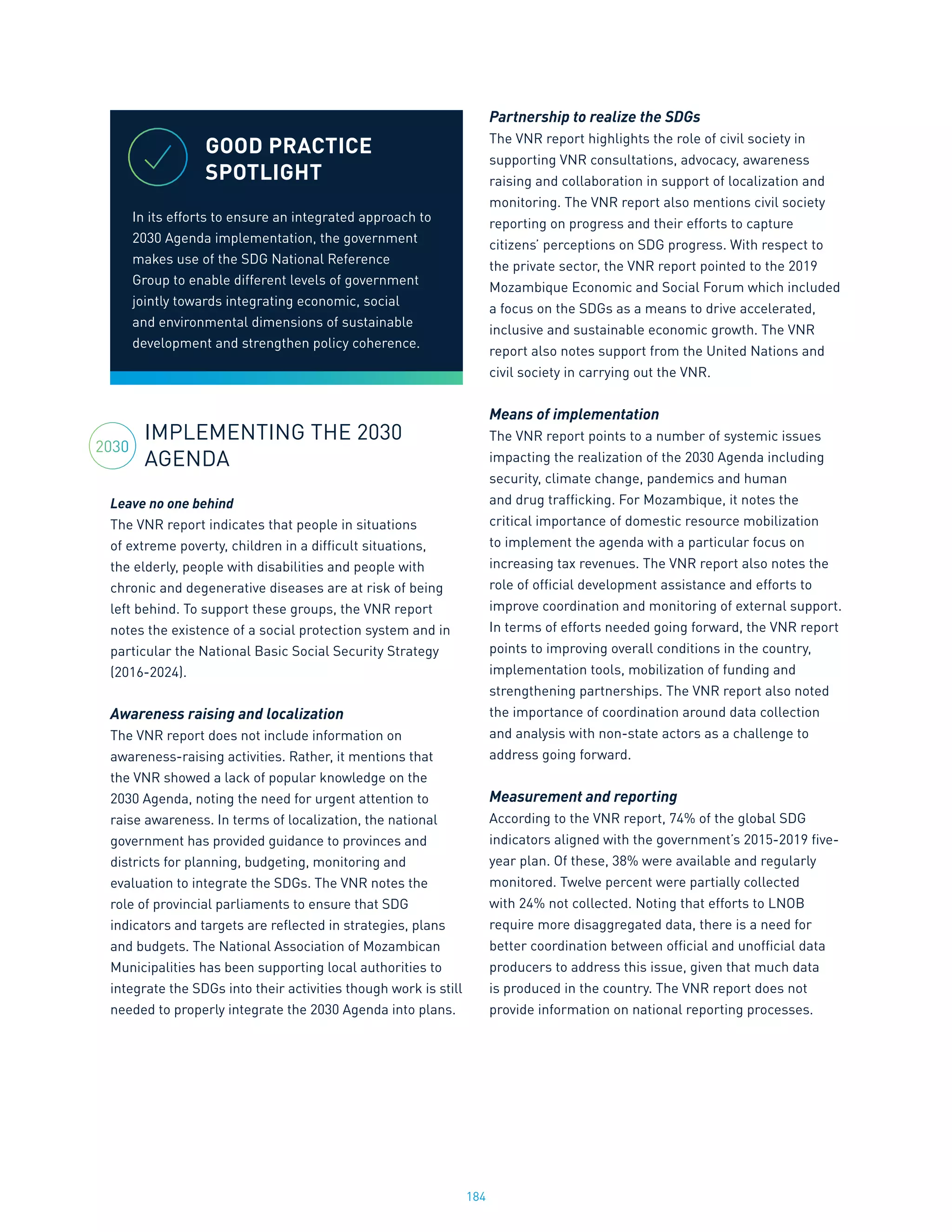




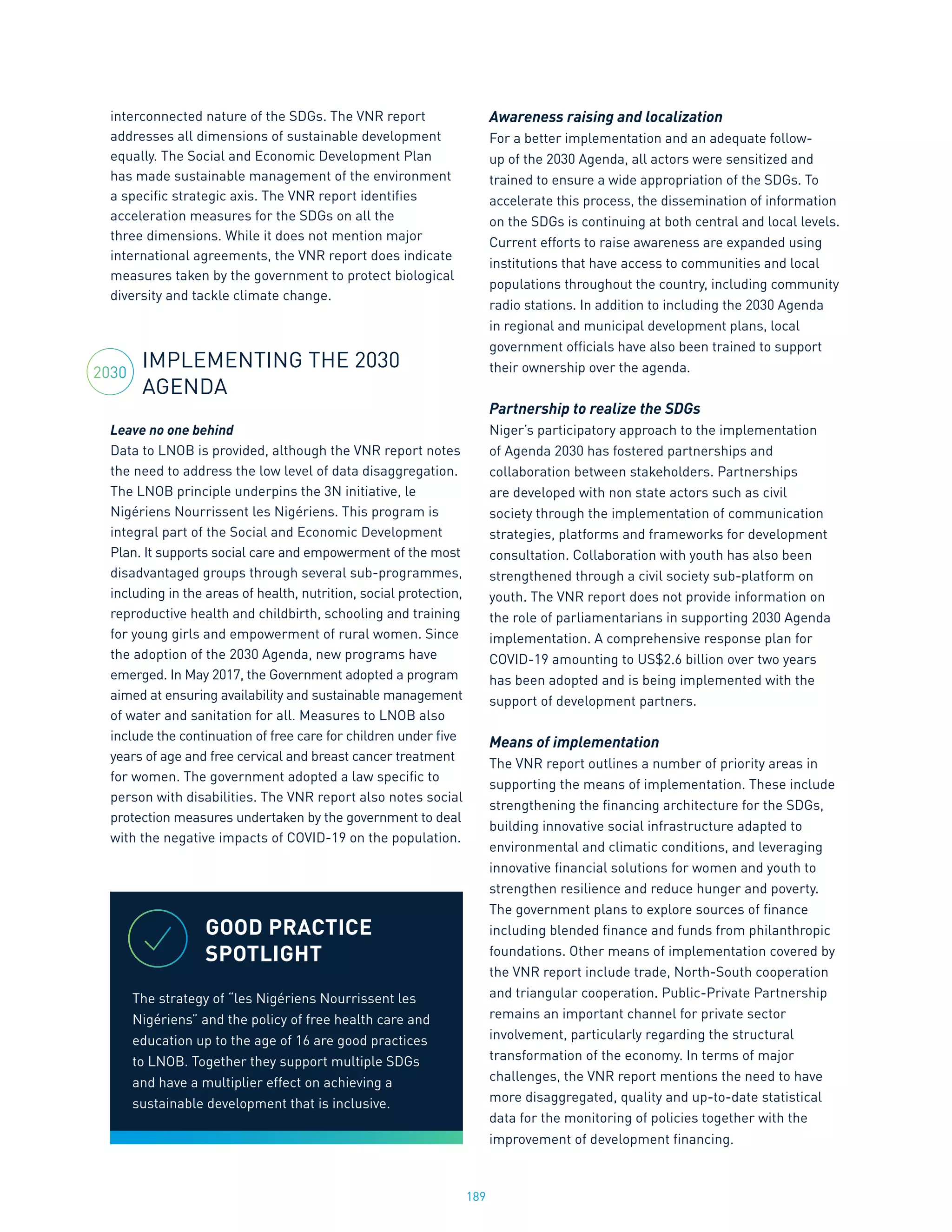


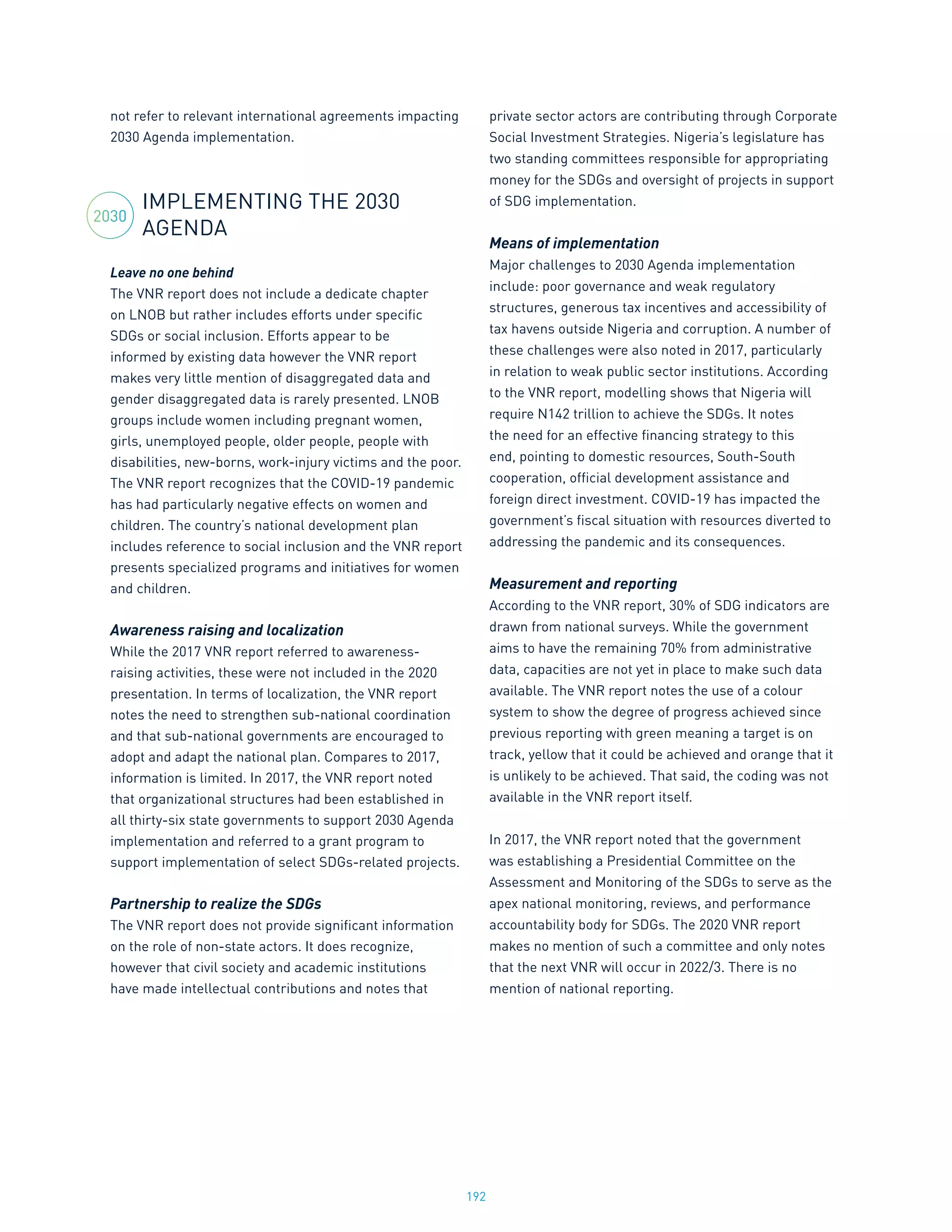
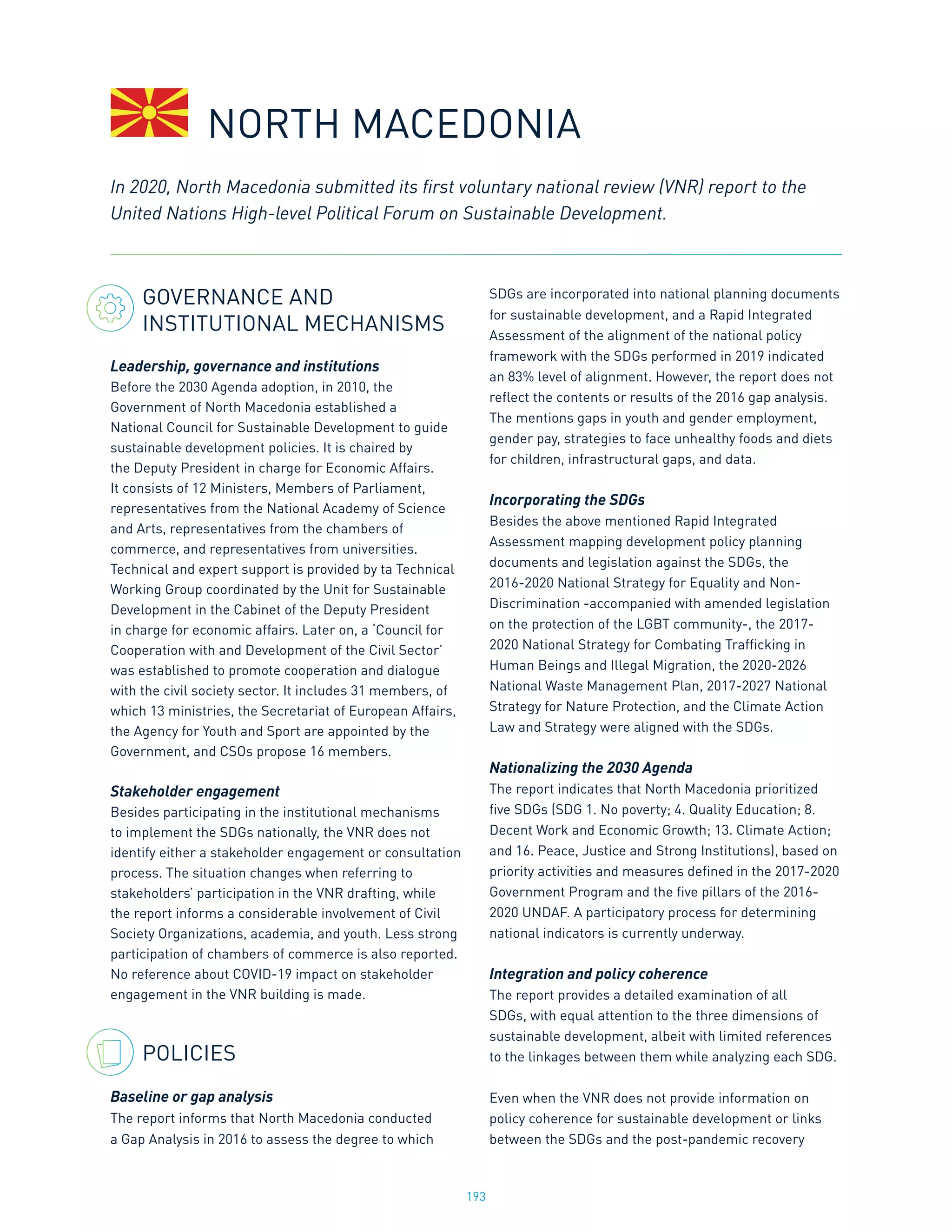
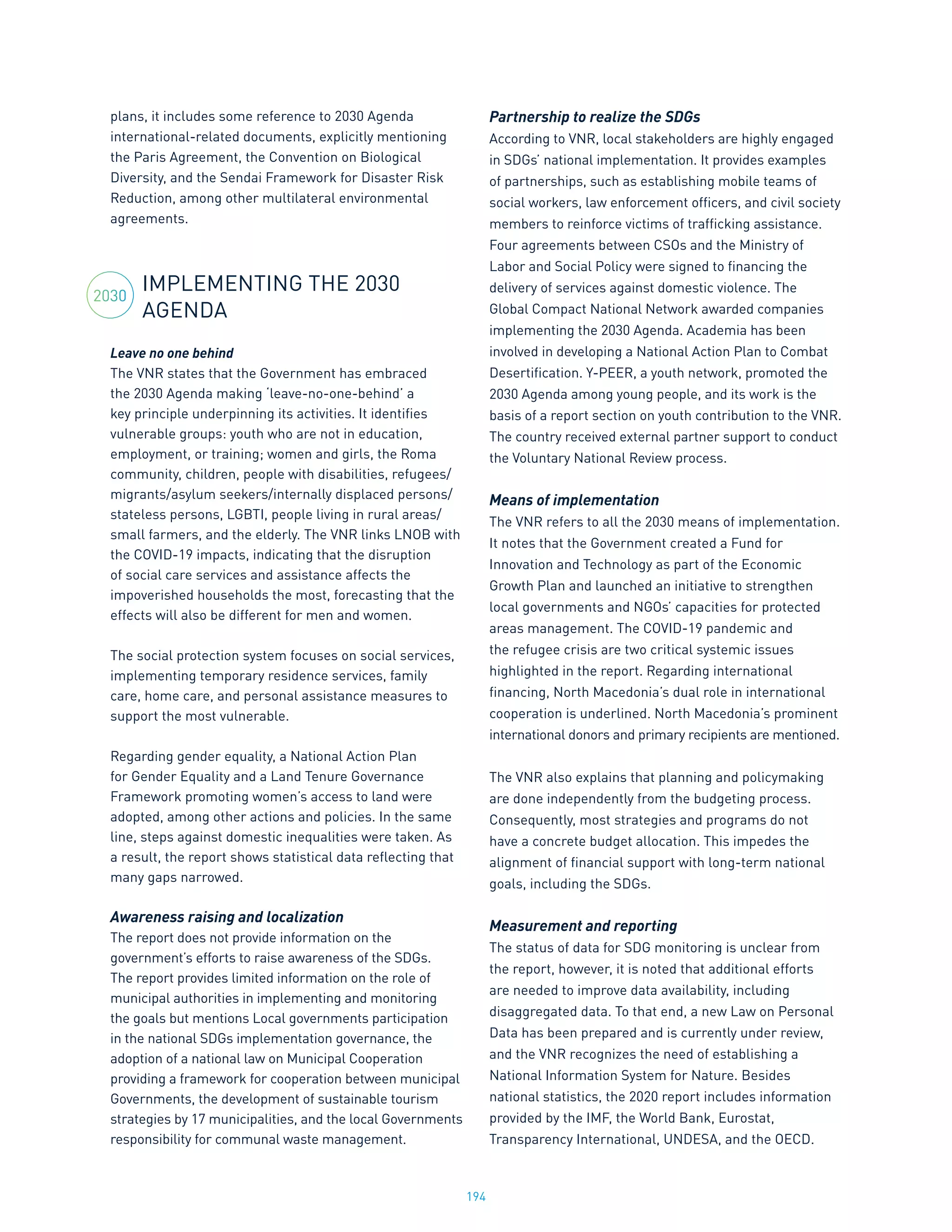

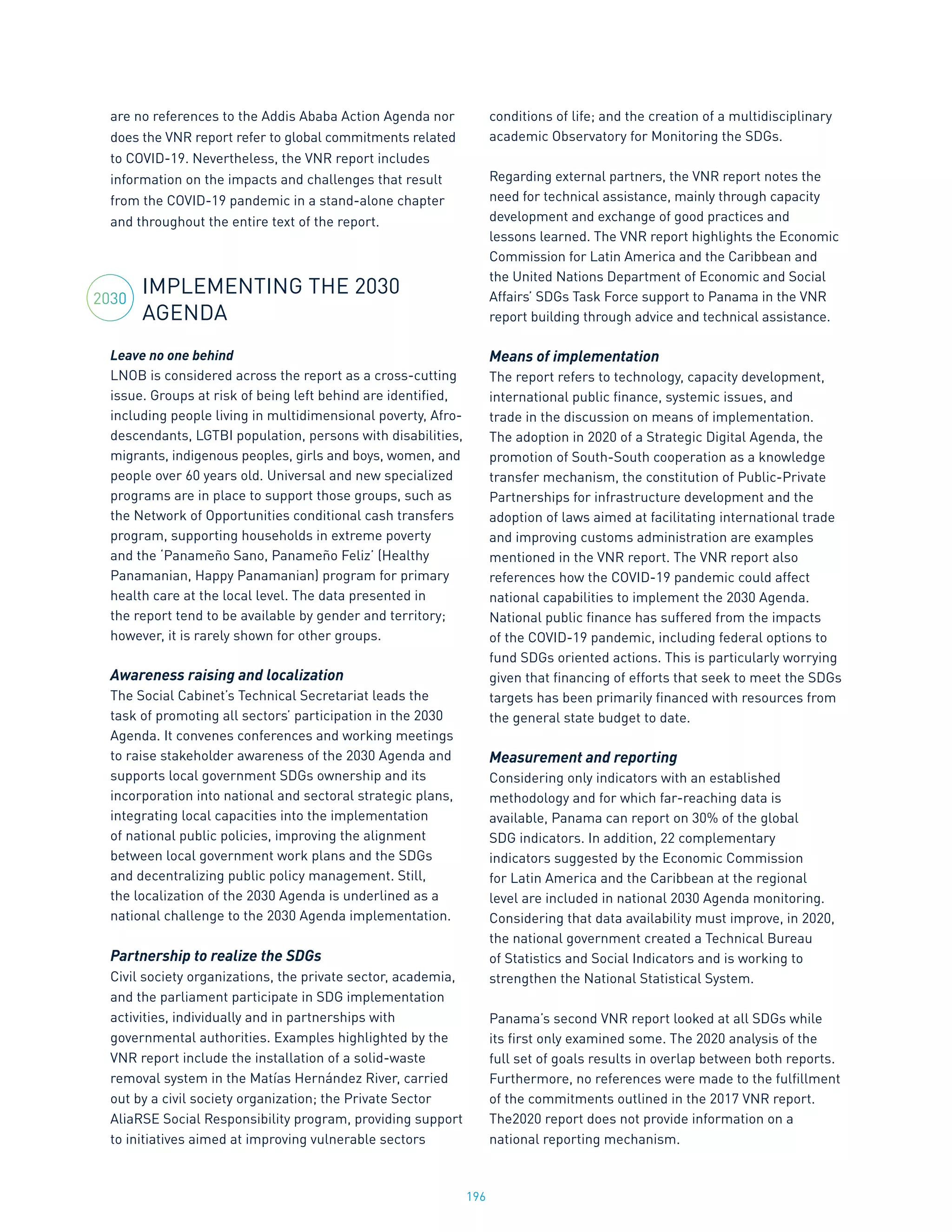
![197
GOVERNANCE AND
INSTITUTIONAL MECHANISMS
Leadership, governance and institutions
Papua New Guinea has established a comprehensive
set of governance arrangements for 2030 Agenda
implementation. A National Executive Council led by the
Prime Minister is informed by an SDG Inter-Ministerial
committee and supported by an MTDP-SDGS (Mid-
term Development Plan – Sustainable Development
Goals) National Steering Committee and a core
secretariat. These mechanisms are informed by an SDG
Council. Other units exist responsible for coordination
and statistics. Technical working groups and sub-
national technical working groups are also listed.
Representatives of the United Nations, private sector,
churches, civil society, research institutions, women and
nominated individuals are part of the SDGs council. Non-
state actors also participate in technical working groups.
Stakeholder engagement
In terms of processes of stakeholder engagement,
the National Executive Council has a Consultative
Implementation and Monitoring Council (established
1998) that allows for consultation with civil society
and the private sector among other interest groups.
According to the VNR report, this council has been “an
effective model of partnership in addressing urgent
development issues associated with [… the SDGs],
including the VNR” (p. 20-1). The VNR report also notes
that non-state actors were engaged in the identification
of national priorities and the VNR. The VNR included
one-on-one consultations, workshops and peer reviews,
though the country shut down between March and April
2020, which meant canceling stakeholder meetings and
consultations during that time.
POLICIES
Baseline or gap analysis
Over 2016-2018, a review of the relevancy of the SDGs,
their 169 targets and 241 indicators was carried out with
support from the United Nations. As a result, 46 SDG
indicators were embedded in the mid-term development
plan. The VNR report also points to gaps under specific
SDGs.
Incorporating the SDGs
The SDGs are incorporated in the mid-term development
plan. An SDG roadmap was prepared in 2016 to assist
in the integration of the SDGs into the mid-term
development plan. The roadmap includes provisions
related to governance and overall SDG coordination
mechanisms, financing, monitoring and reporting. The
VNR report includes mention of leaving no one behind
and highlights “a moral obligation and responsibility to
our current and future generations” (p. 5).
Nationalizing the 2030 Agenda
In addition to the selection of 46 SDG indicators, the
VNR report notes national priorities related to the
economy, infrastructure, social development, rule of law,
justice and national security, improved service delivery,
governance, responsible sustainable development, the
environment and a sustainable population.
Integration and policy coherence
The VNR report provides a detailed examination of all
17 SDGs with equal attention to all three dimensions of
sustainable development. In terms of policy coherence for
sustainable development, the VNR report emphasizes the
National Planning Monitoring and Responsibility Act 2016
that serves as a legal framework for national planning
on the SDGs and includes references to budgeting
and monitoring and evaluation. The Act requires the
establishment of suitable institutional arrangements.
According to the VNR report, these efforts help to improve
policy coherence (and effective implementation). The VNR
report also refers to the Paris Agreement on Climate
Change, the Convention on Biological Diversity, the Sendai
Framework for Disaster Risk Reduction, the Addis Ababa
Action Agenda, aid effectiveness principles and the Global
Partnership for Effective Development Co-operation.
In 2020, Papua New Guinea submitted its first voluntary national review (VNR) report to the
United Nations High-level Political Forum on Sustainable Development.
PAPUA NEW GUINEA](https://image.slidesharecdn.com/progressingsdgs2020full-reportfinal-1-210407175018/75/Progressing-sd-gs_2020_full-report_final-1-197-2048.jpg)

